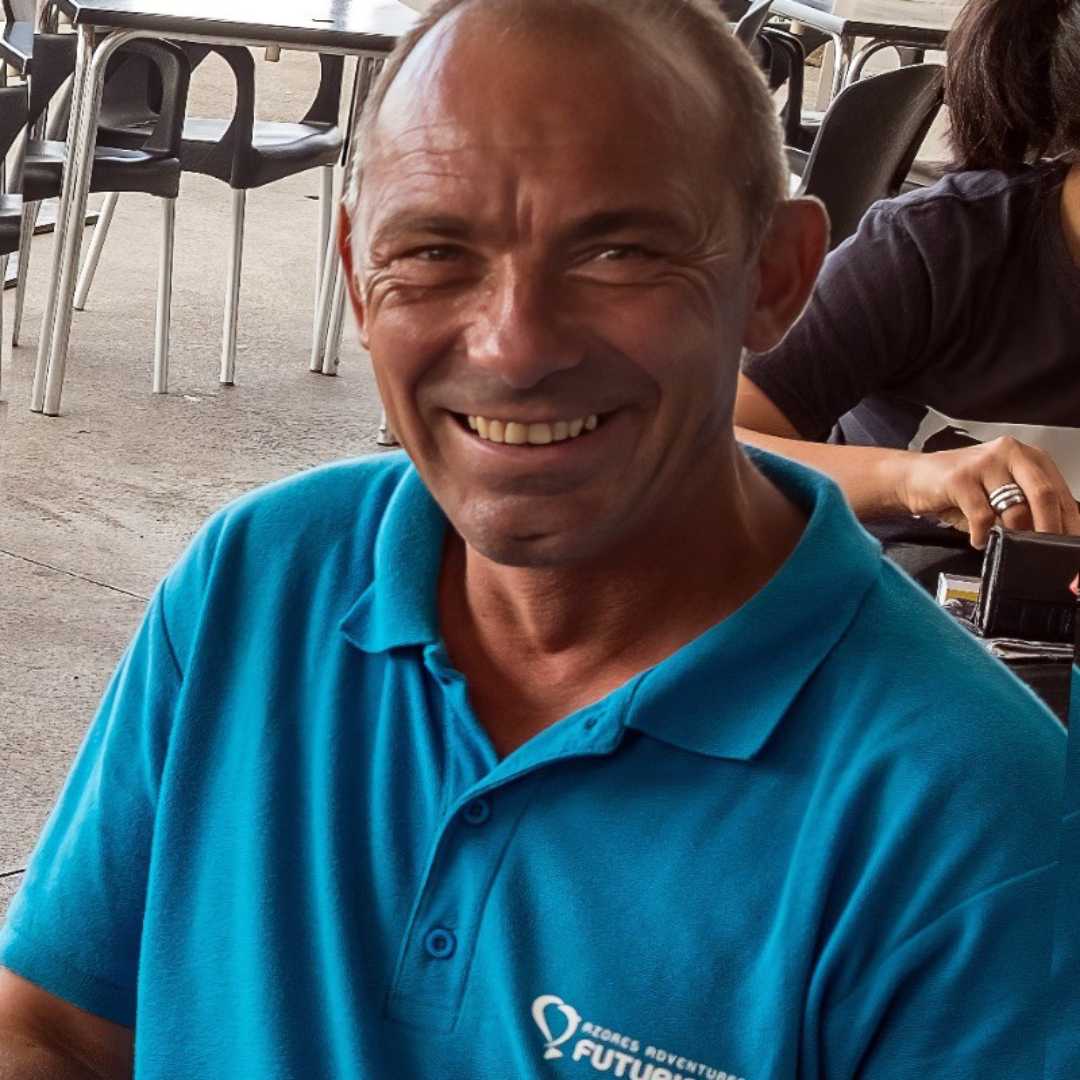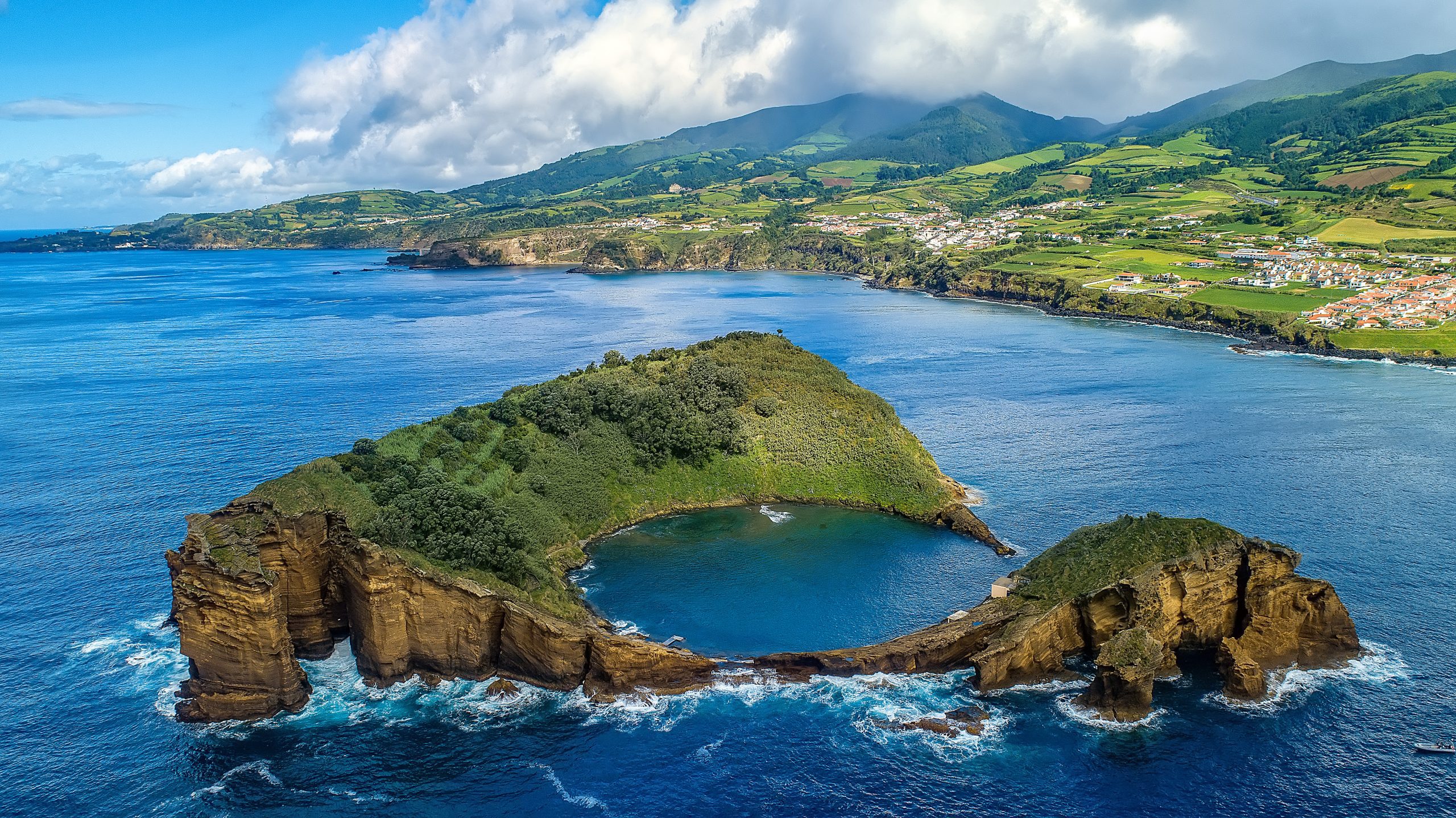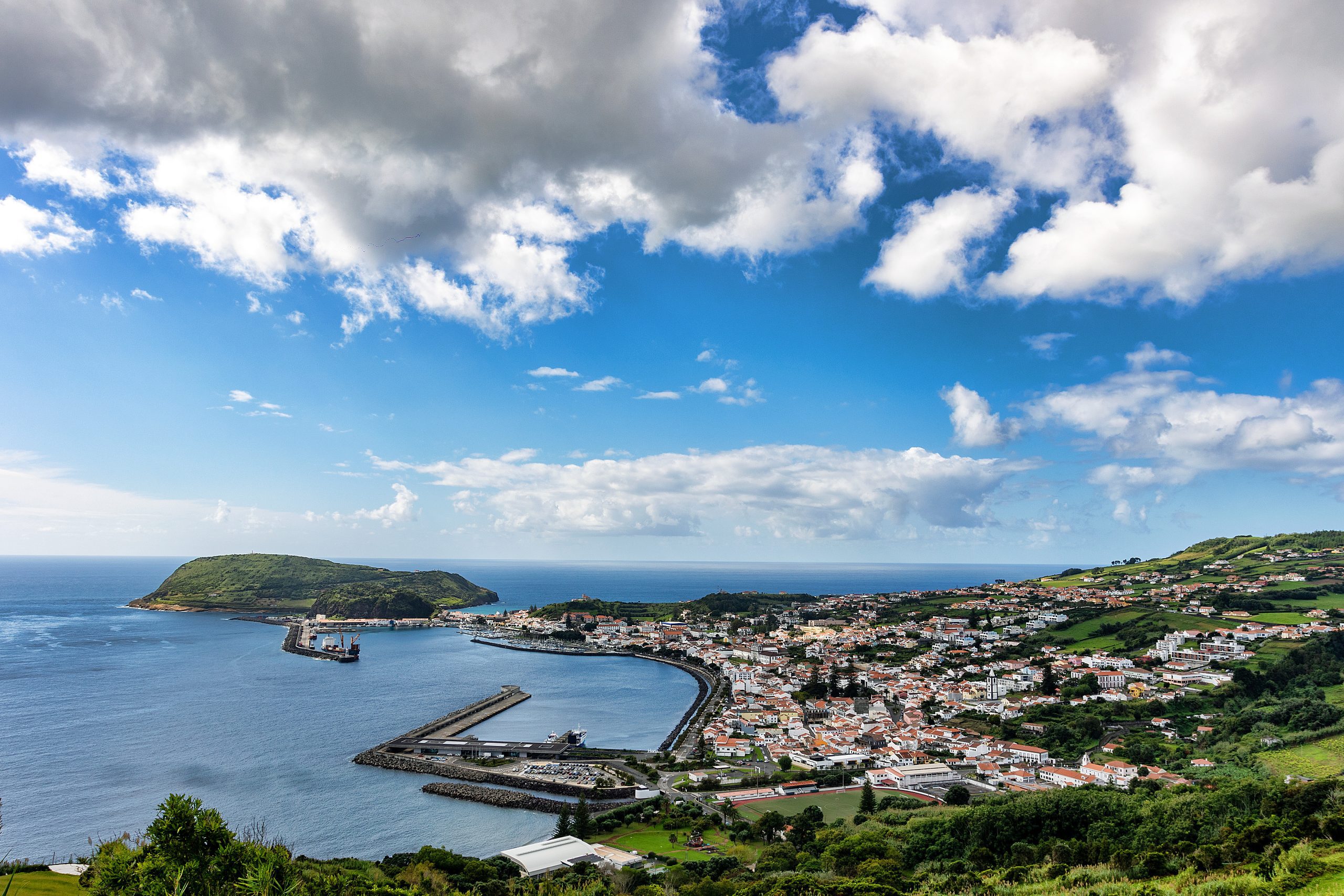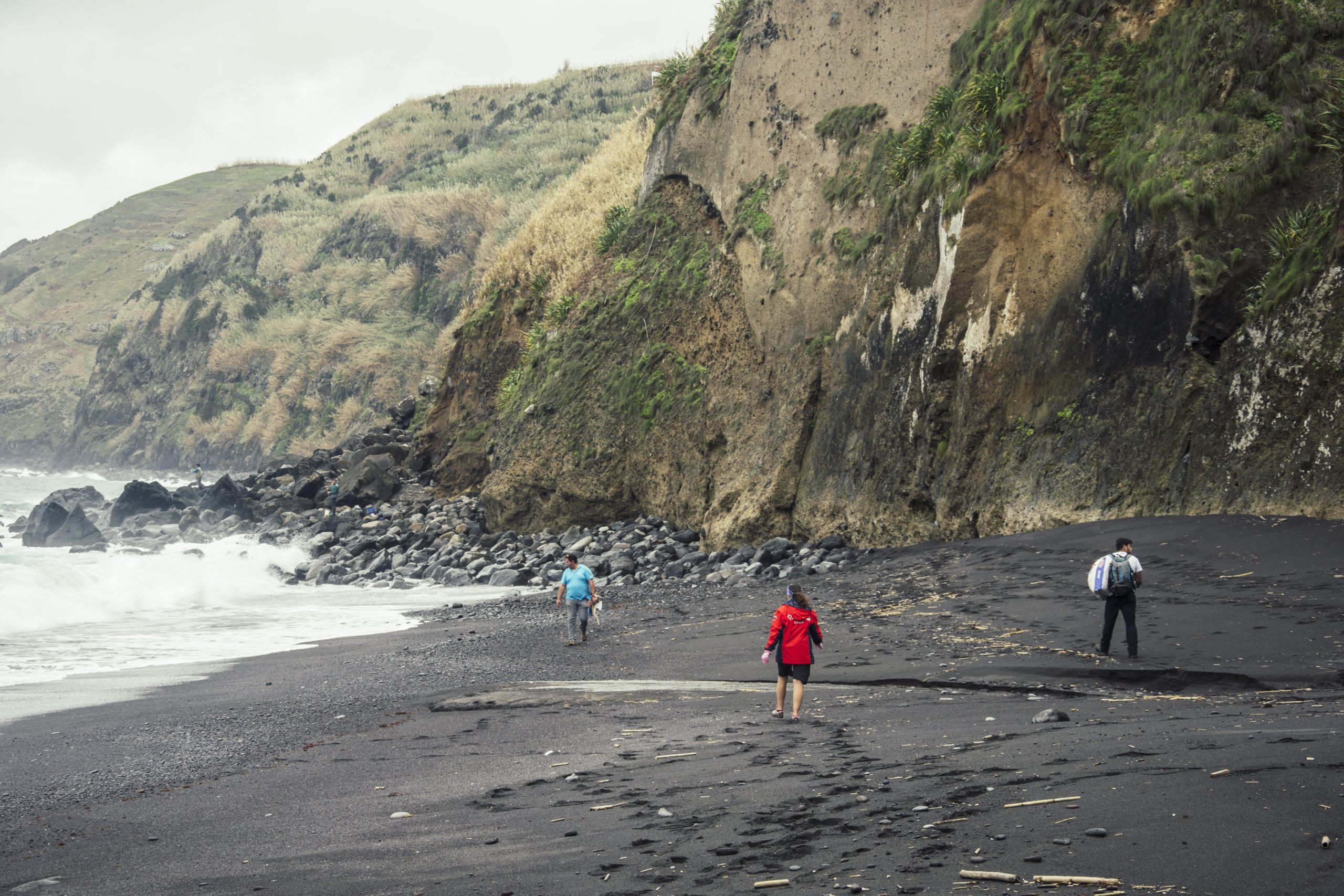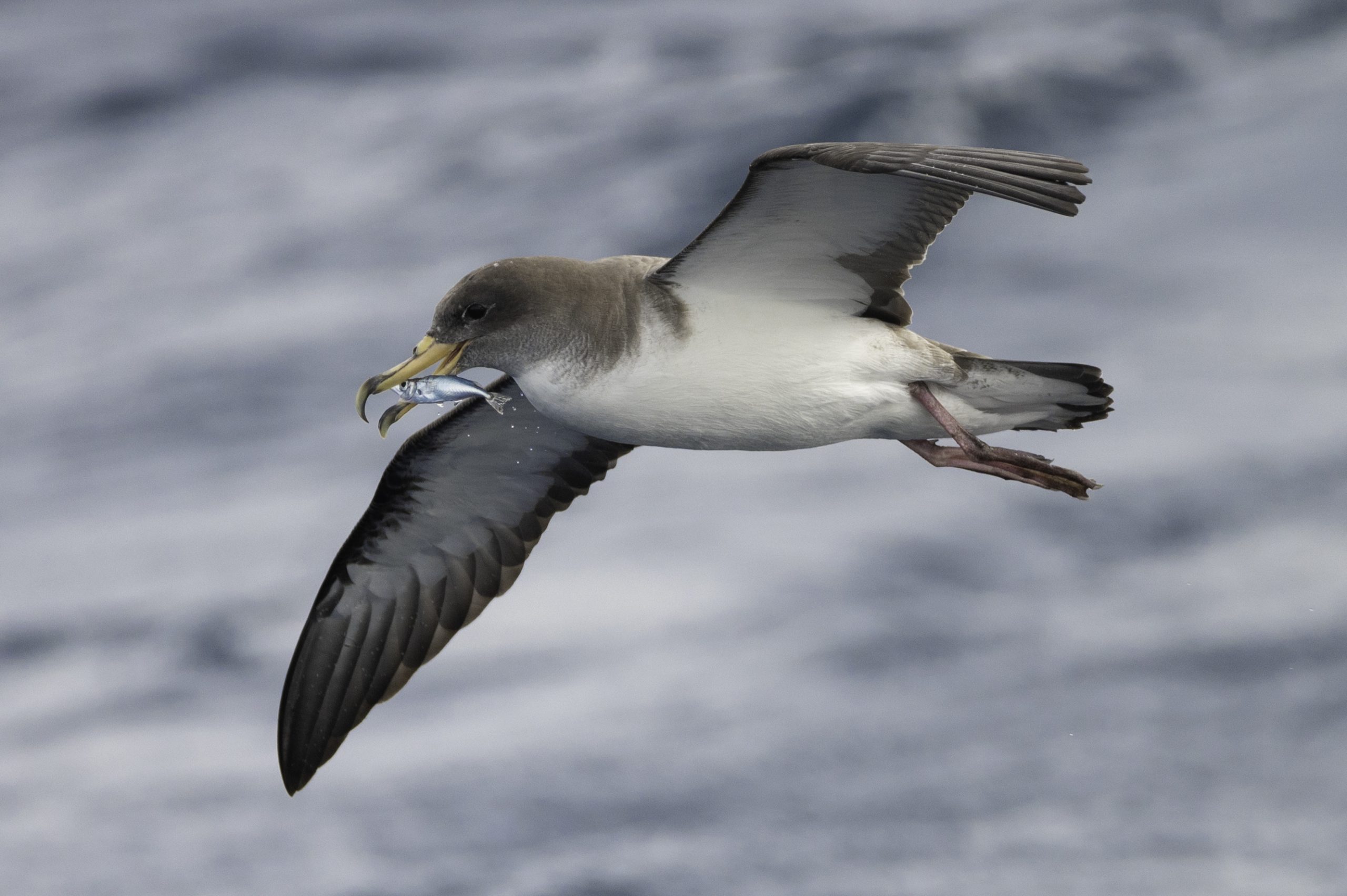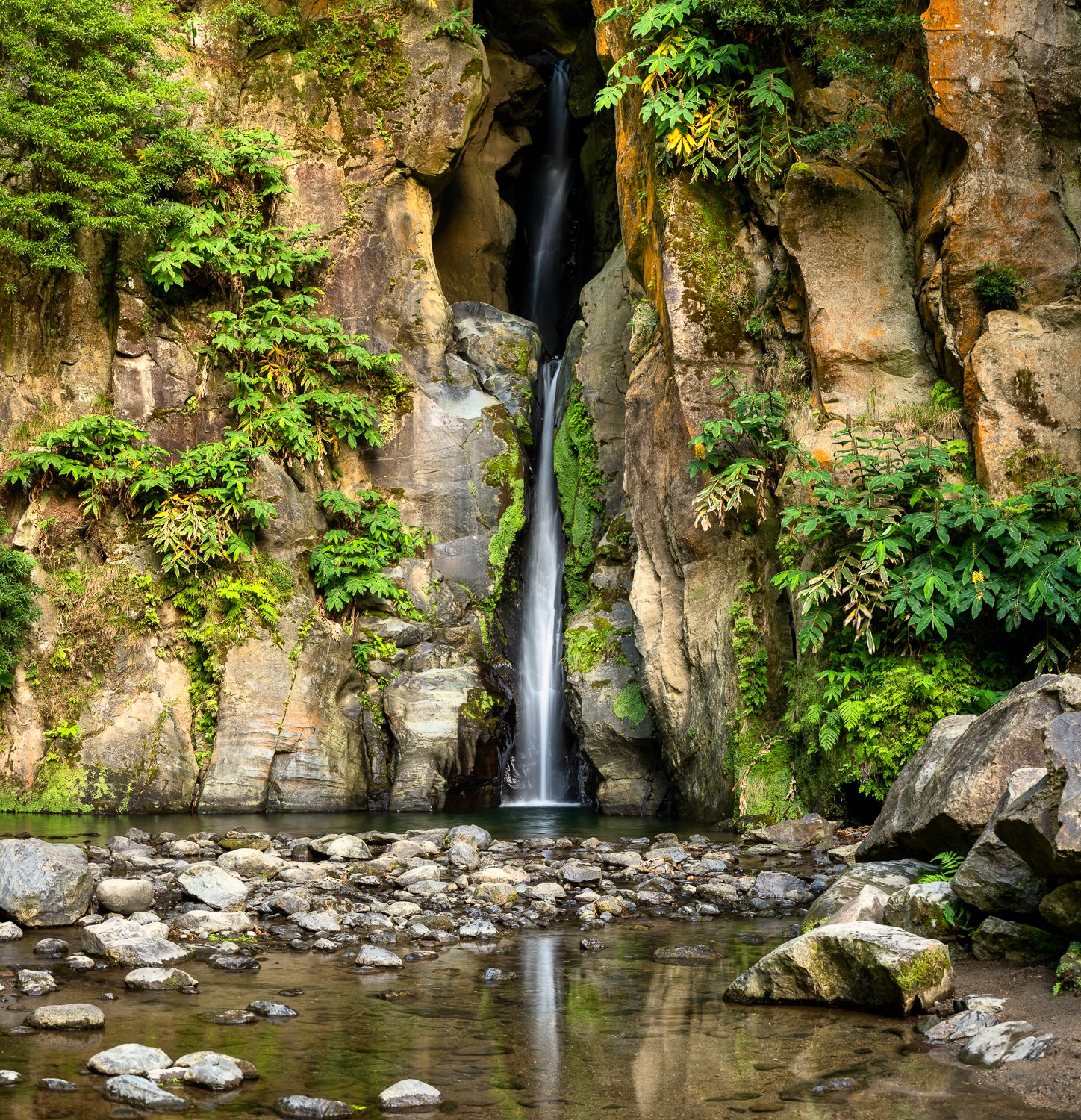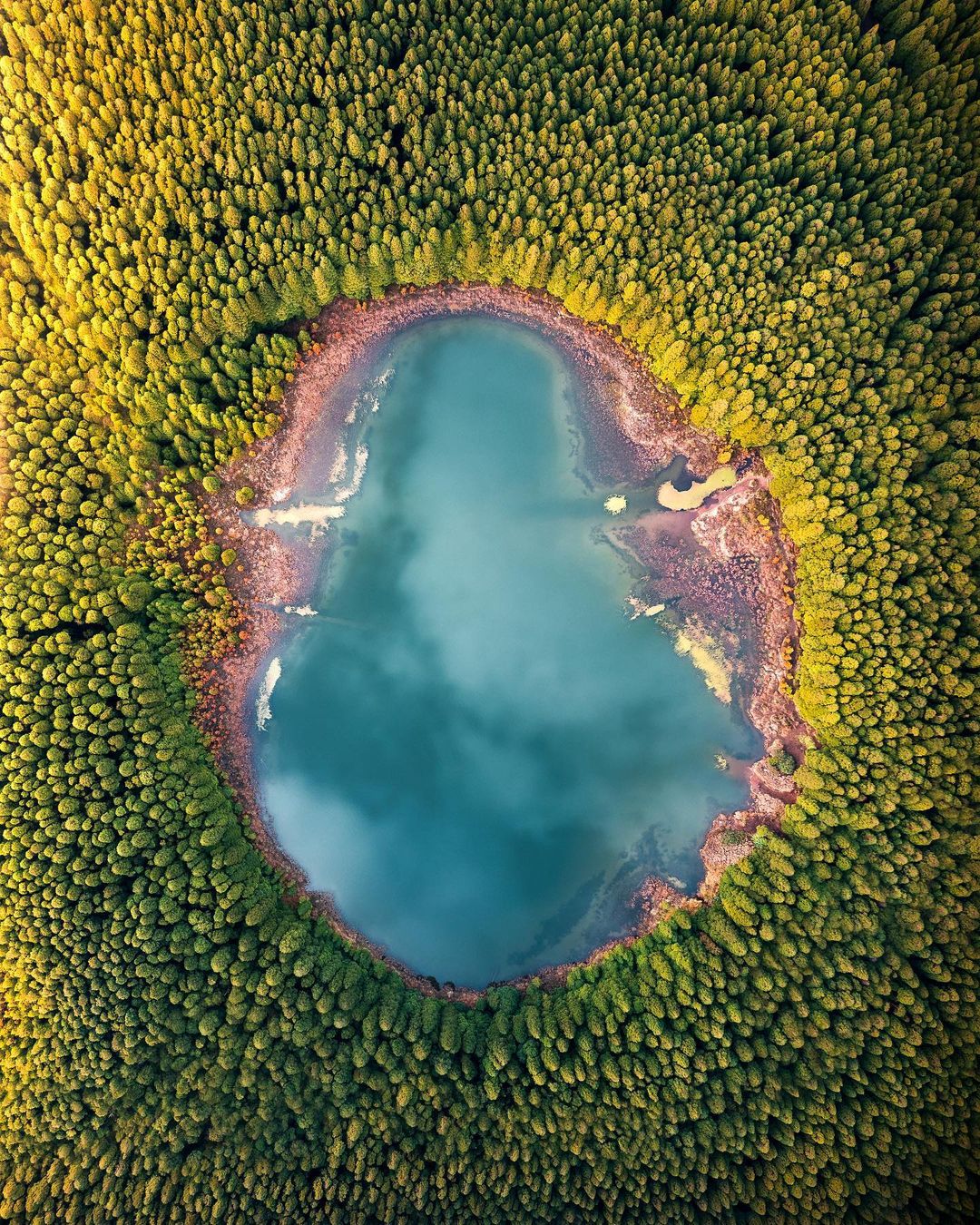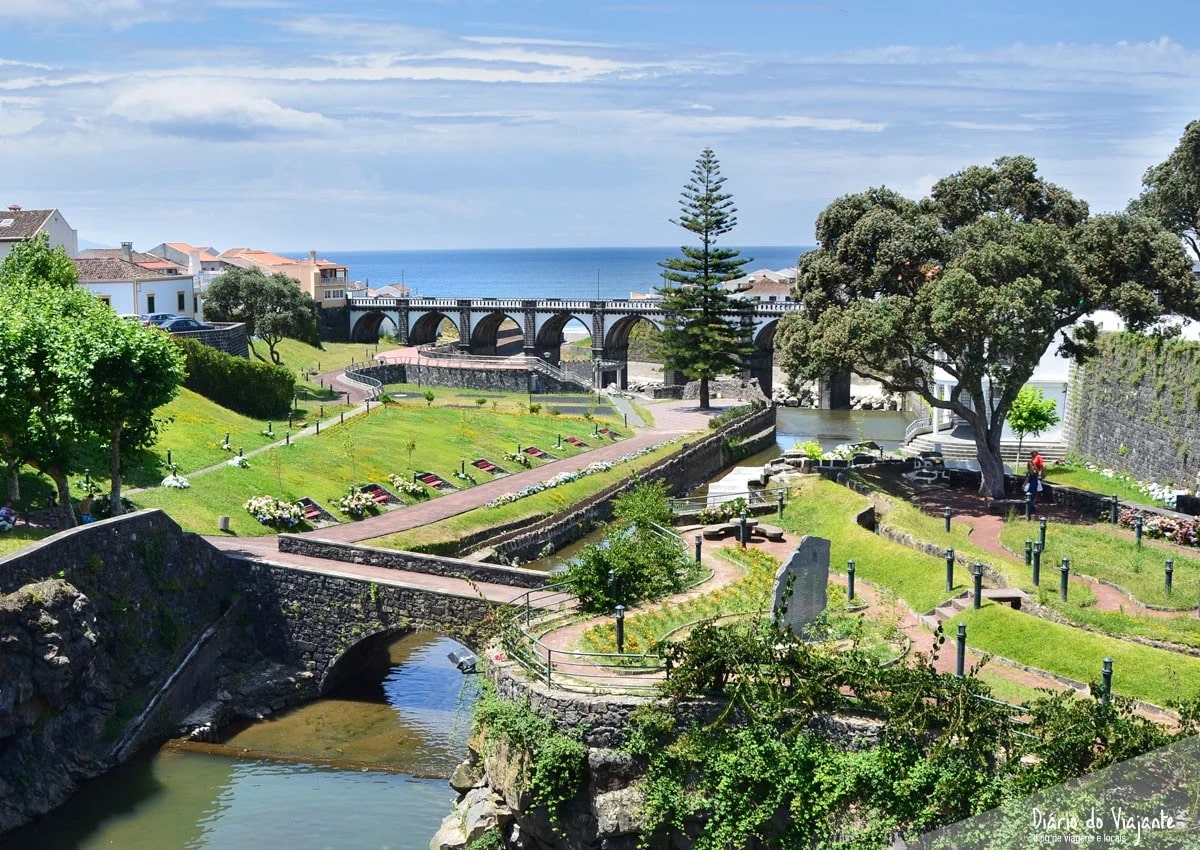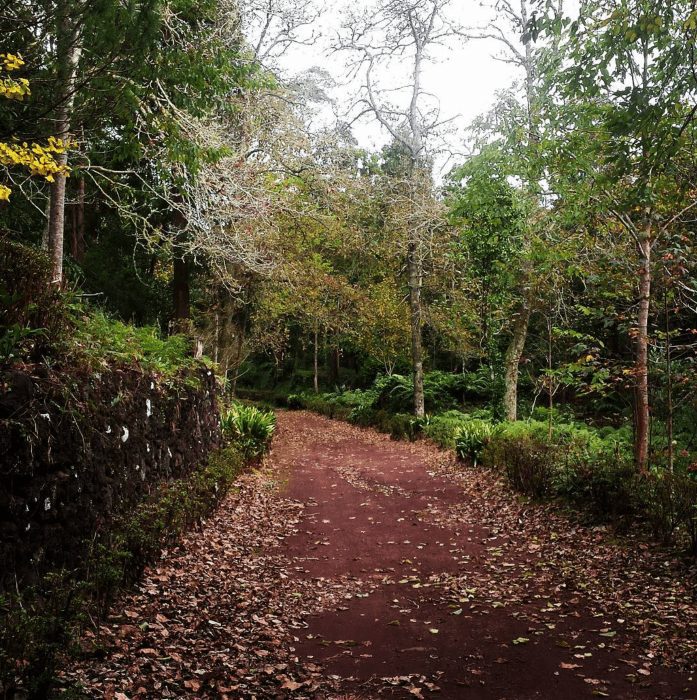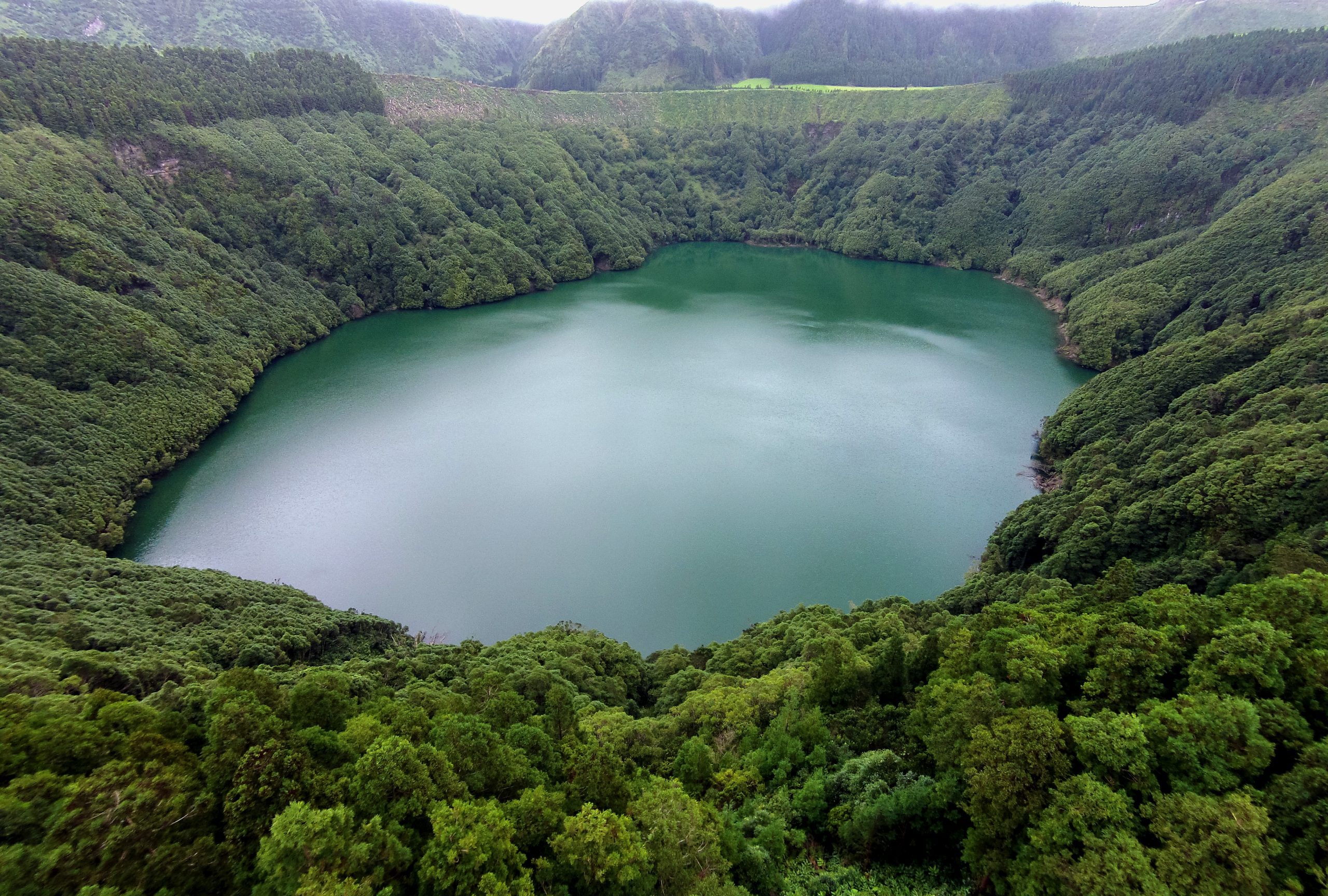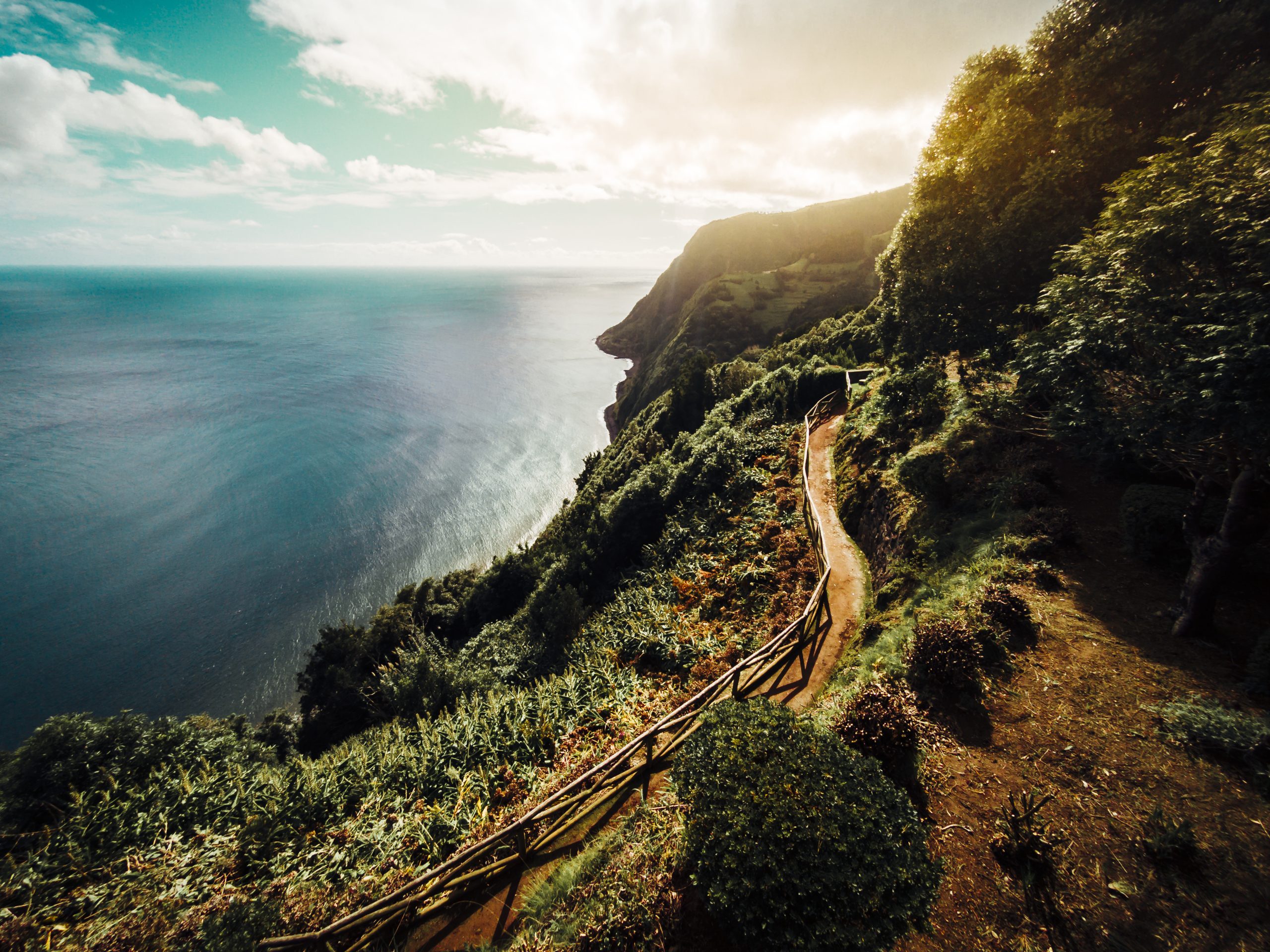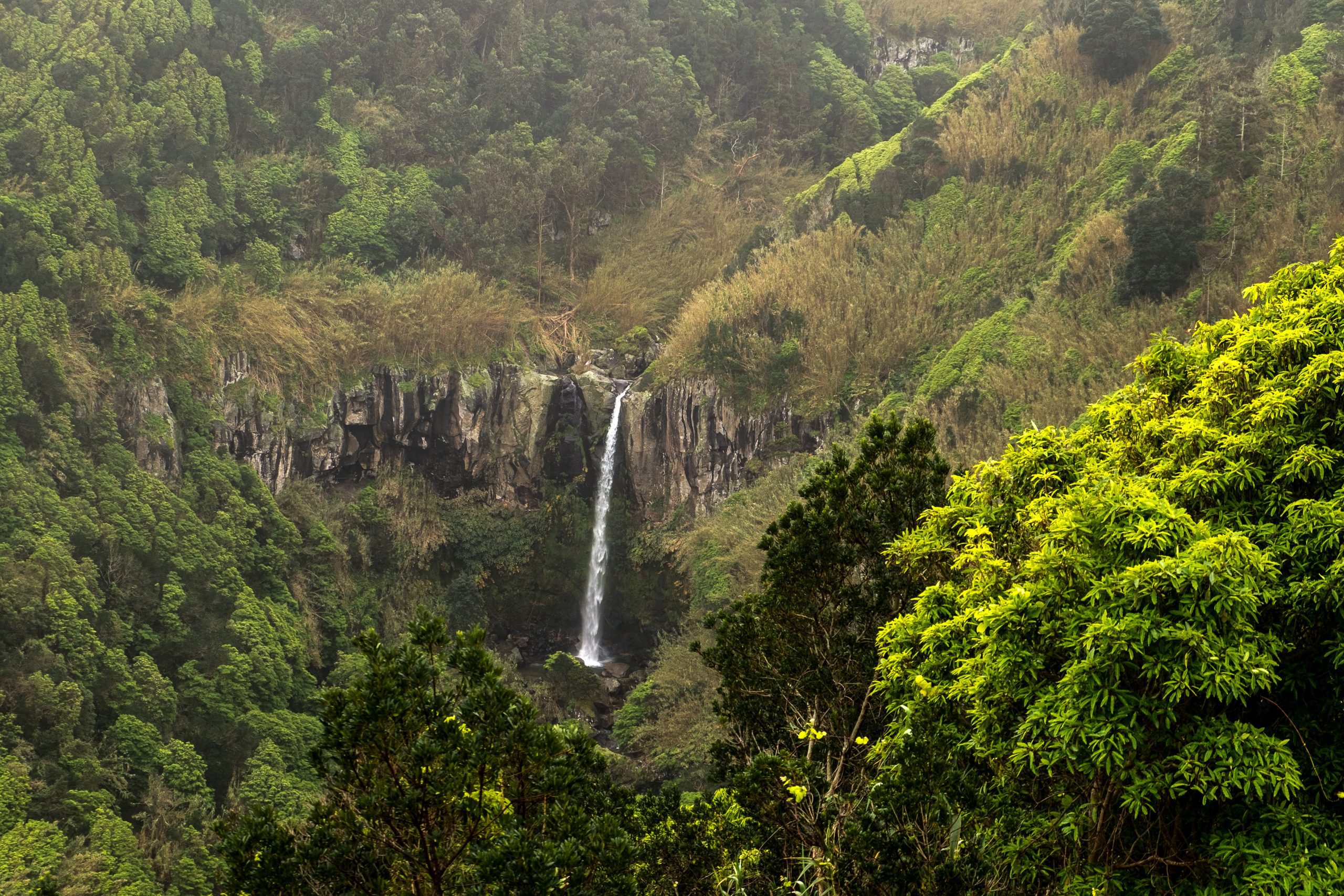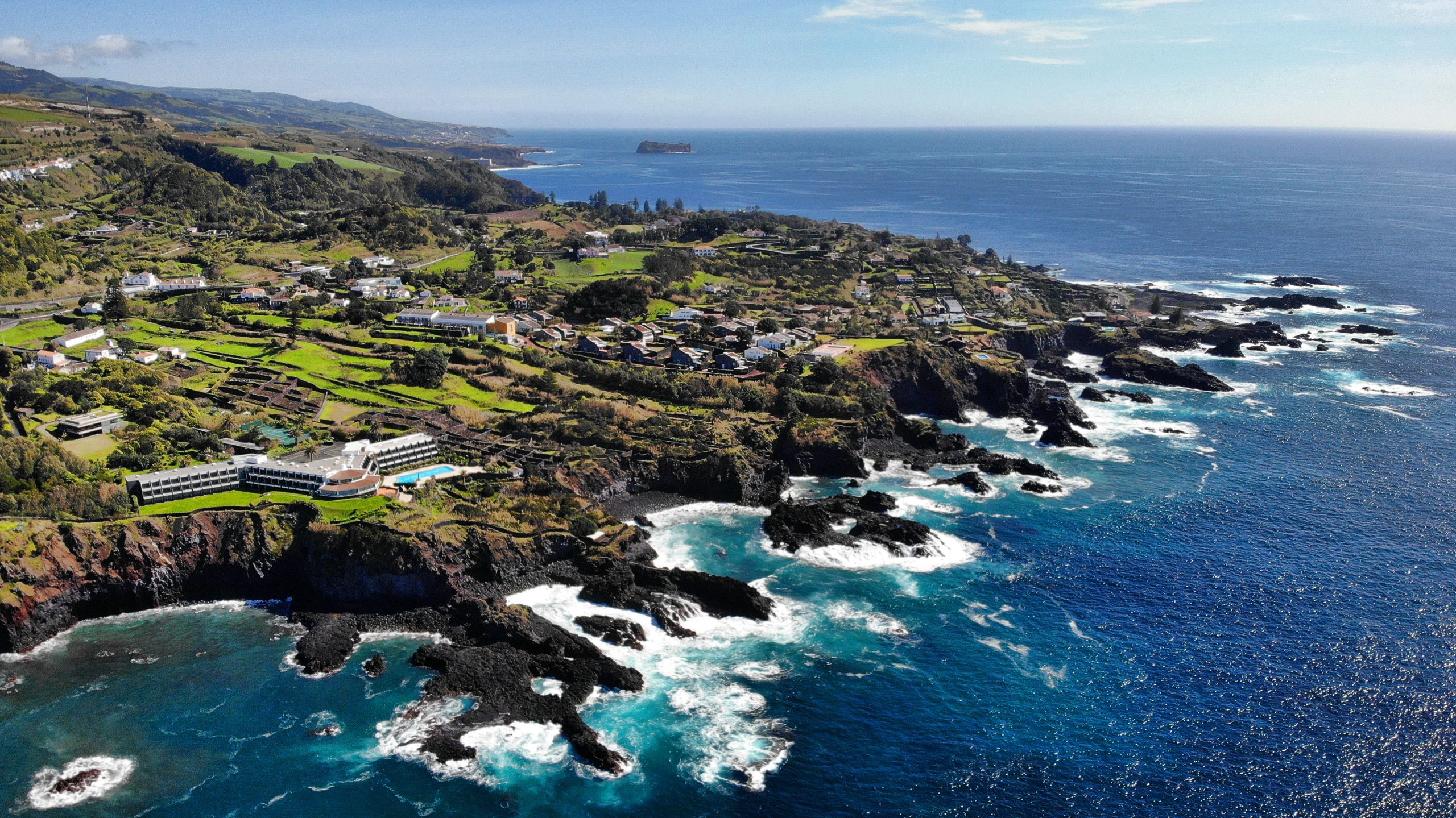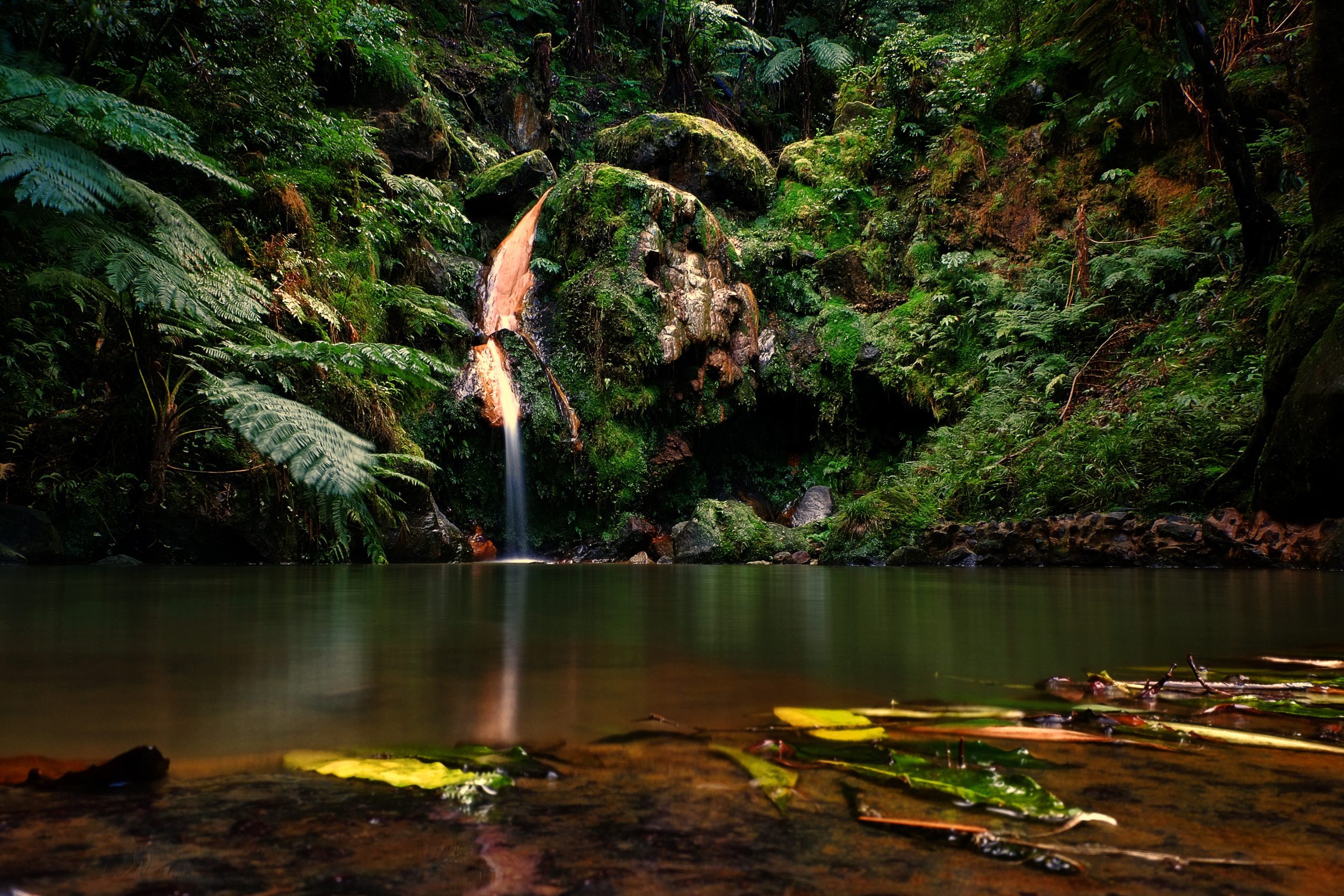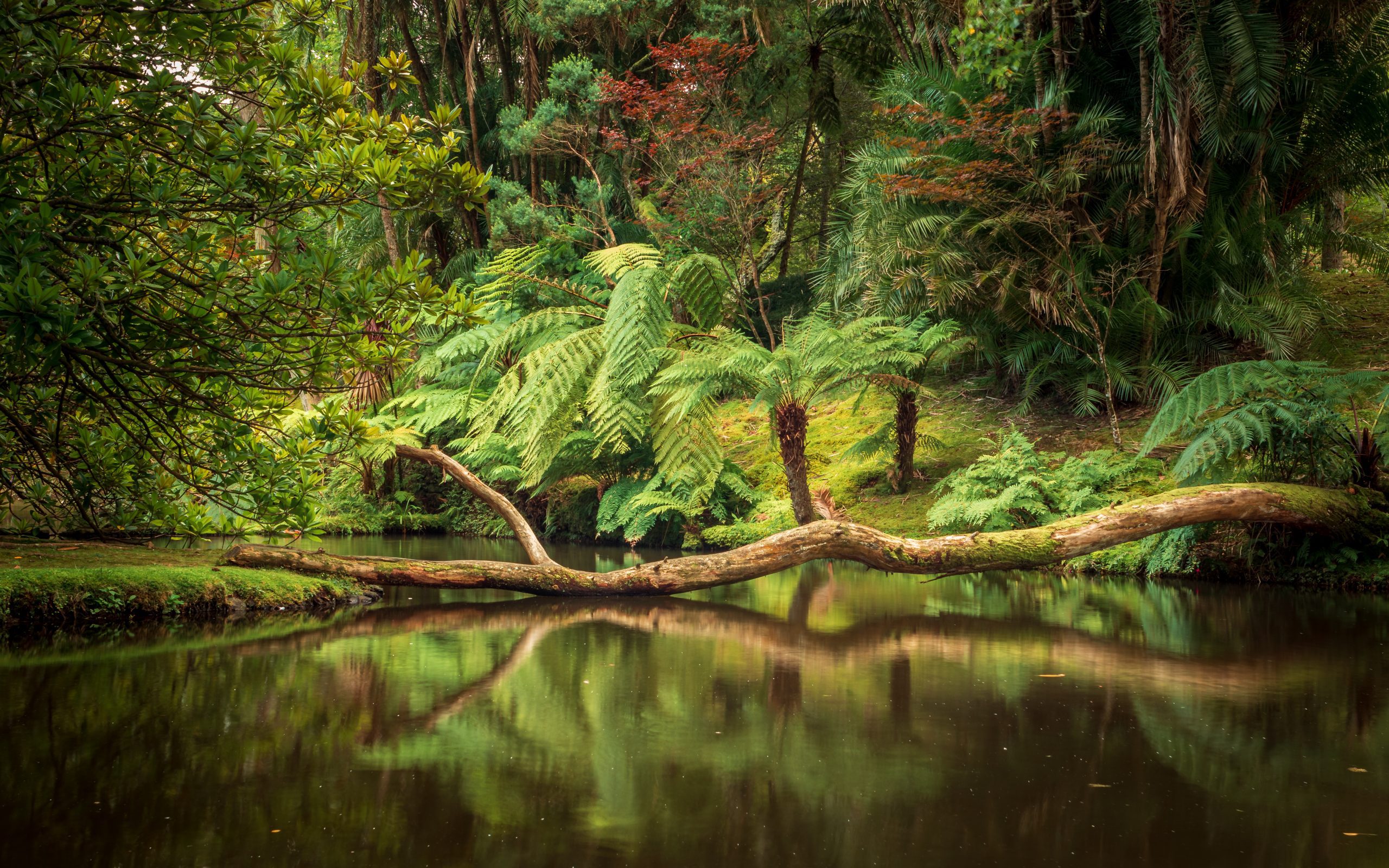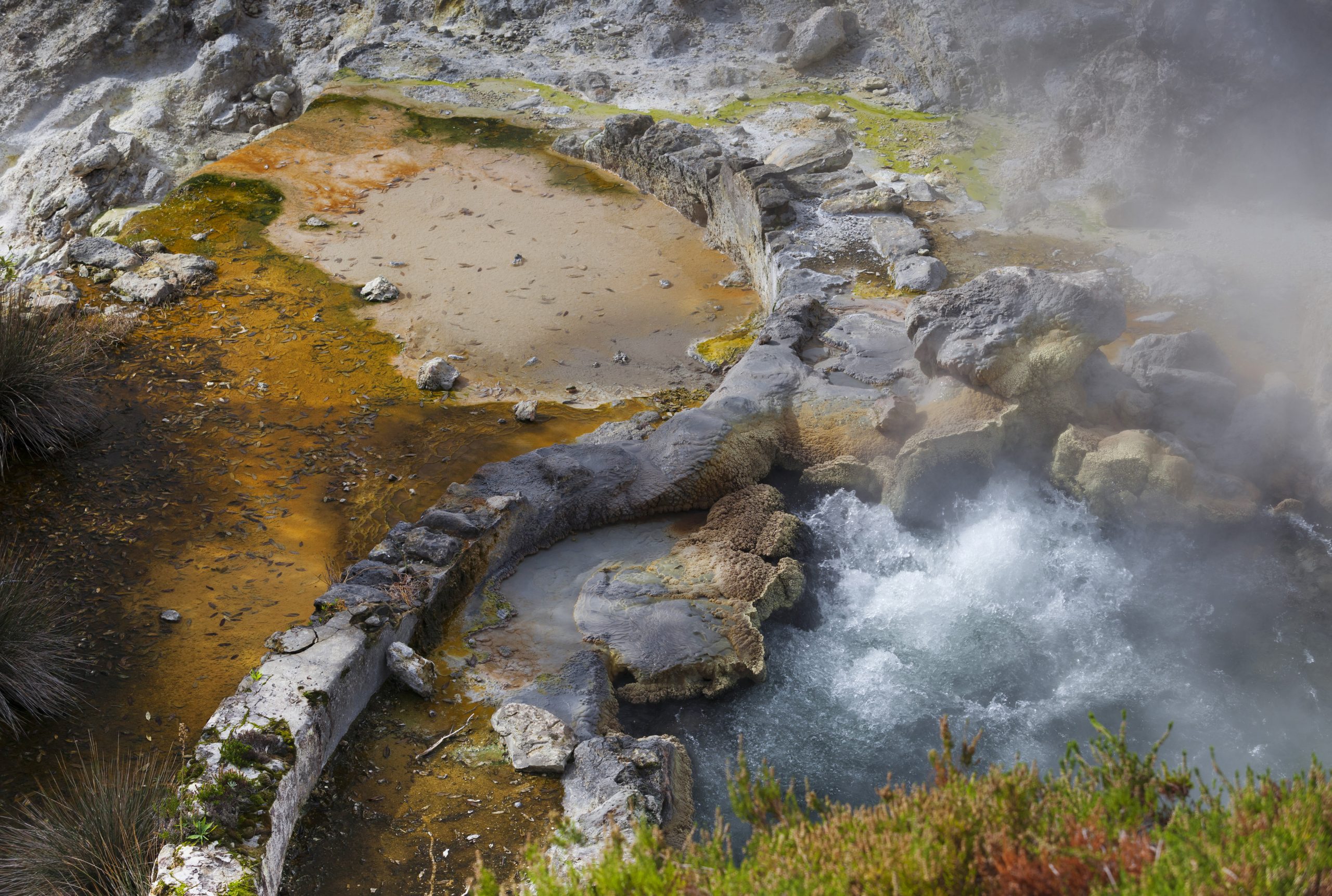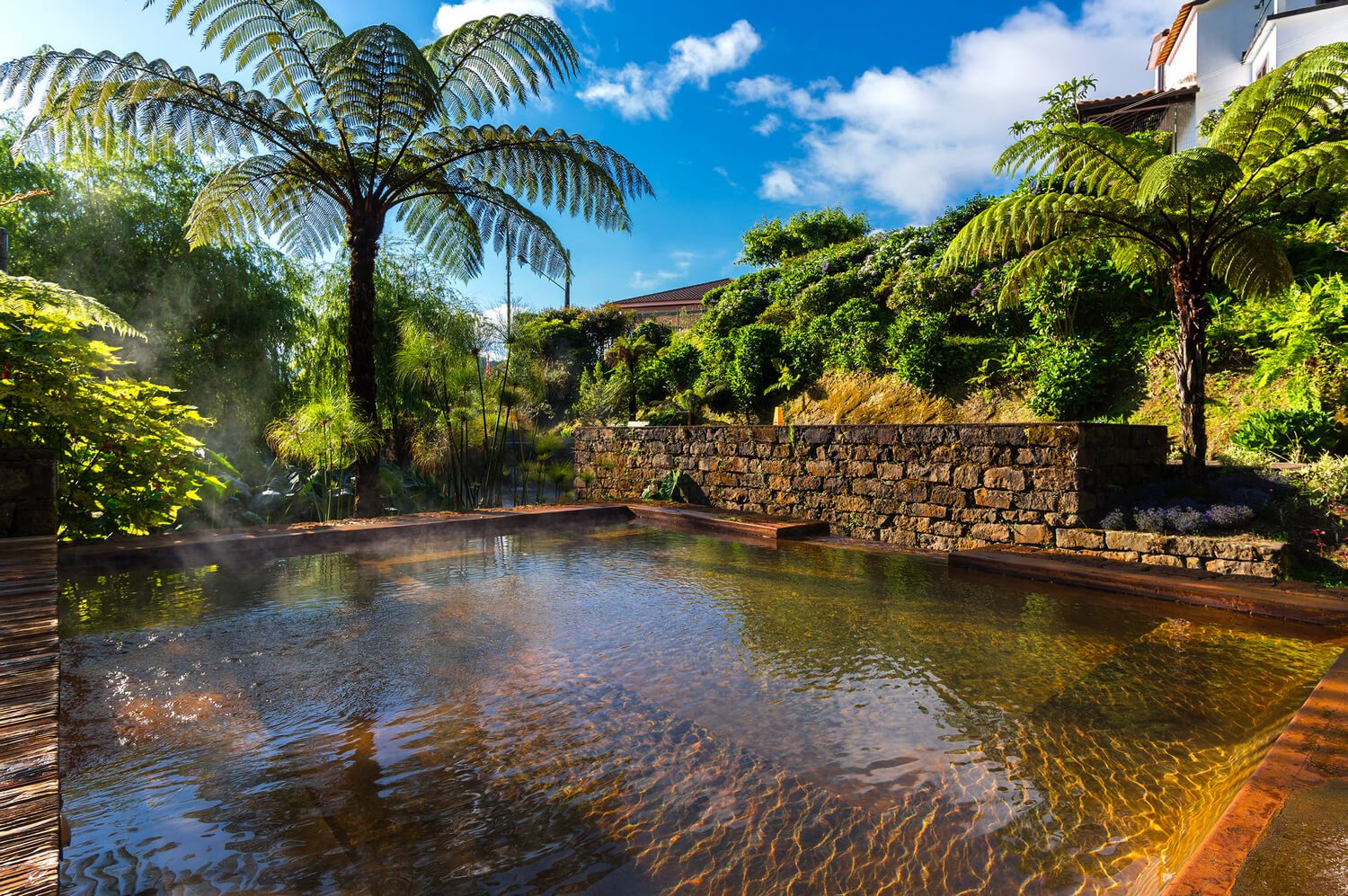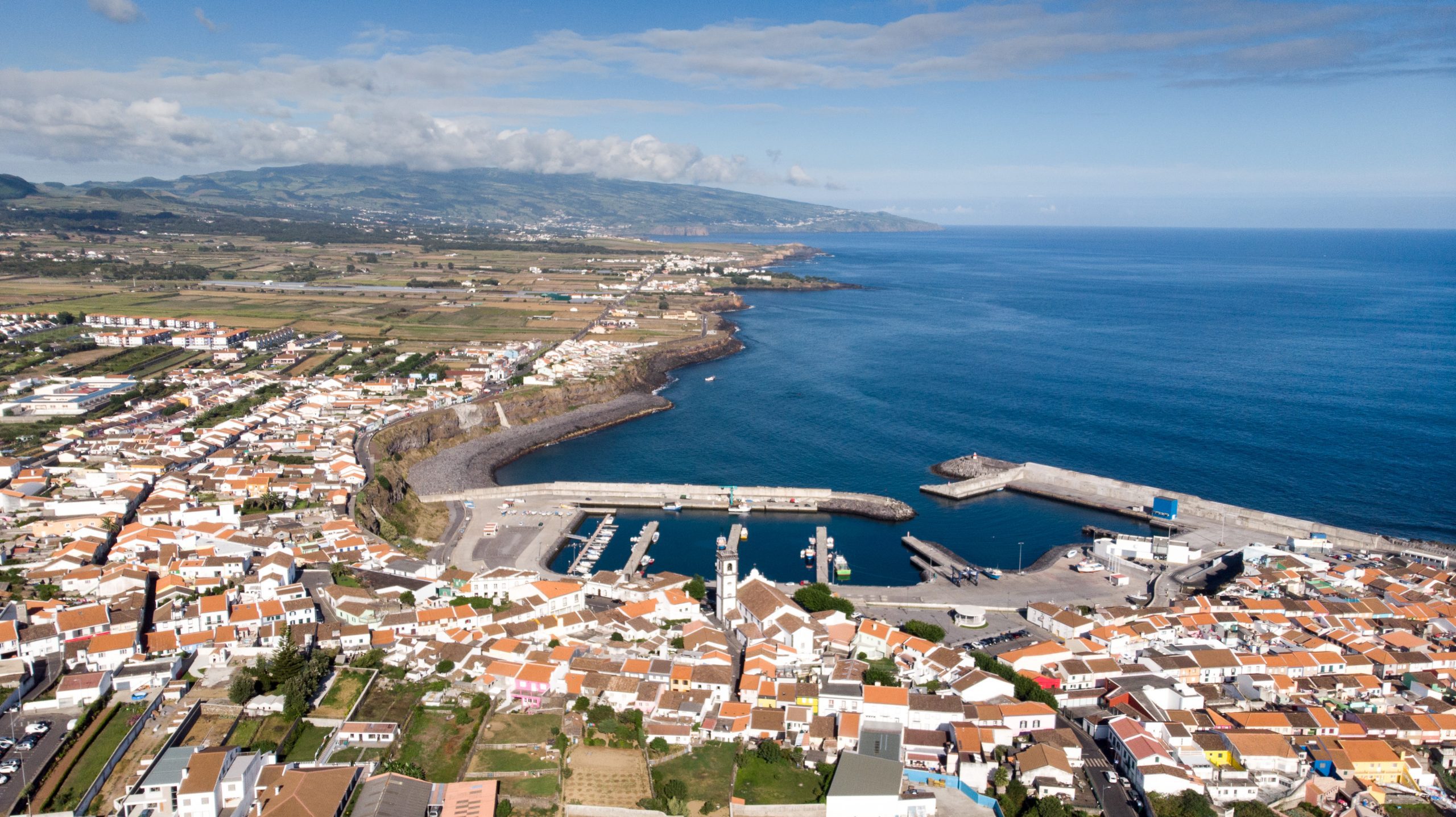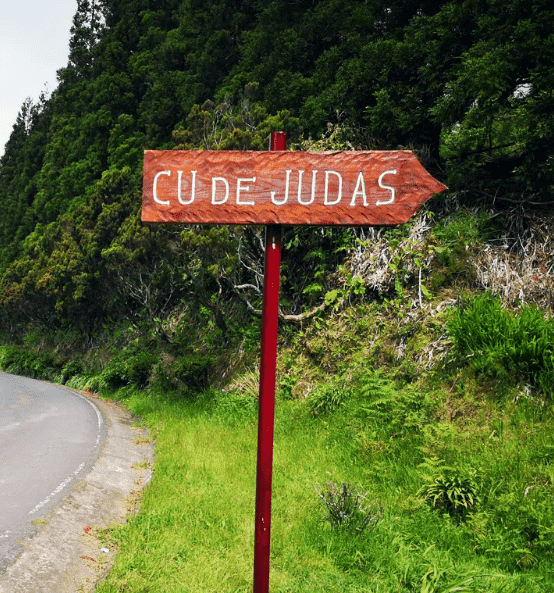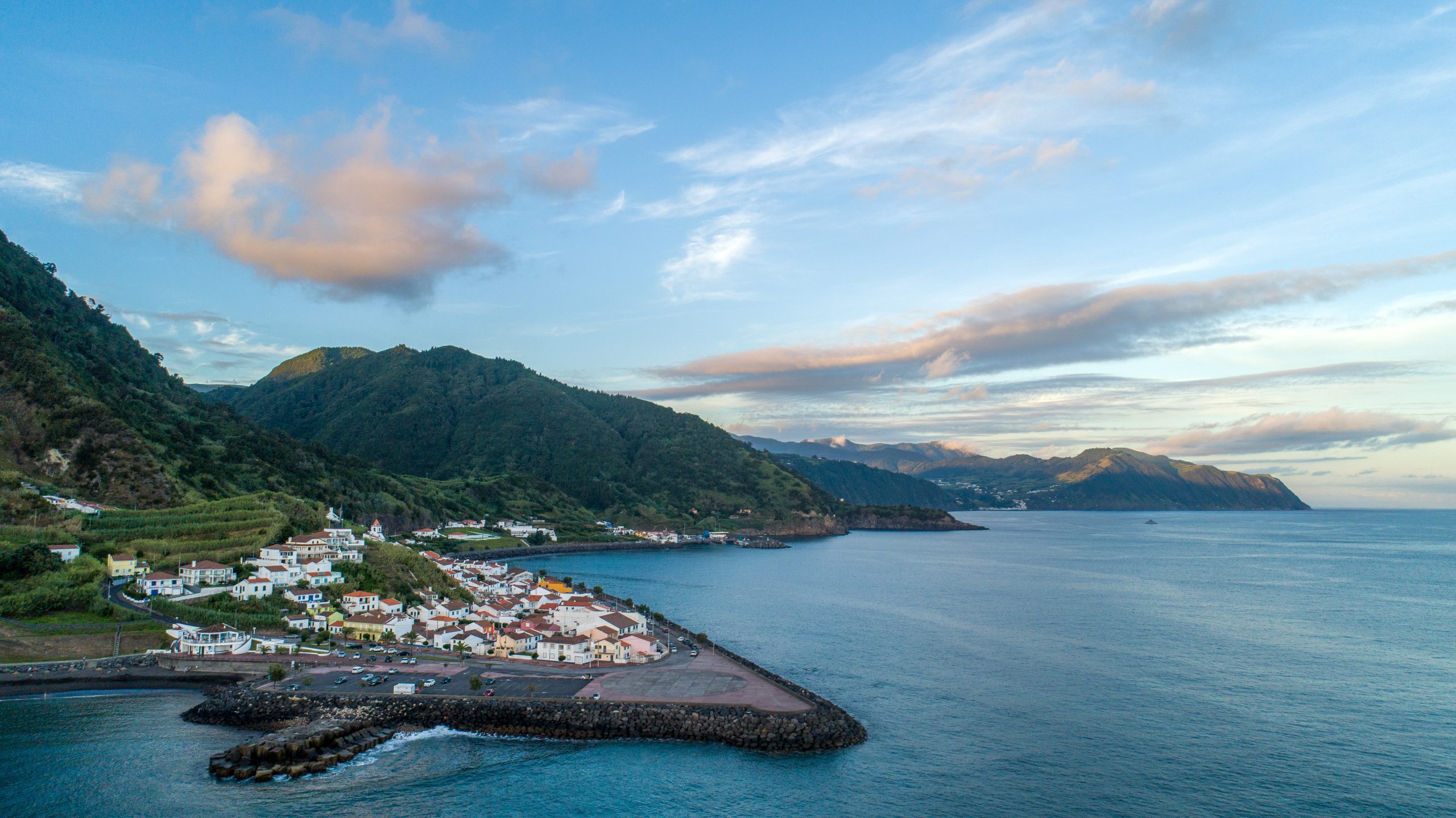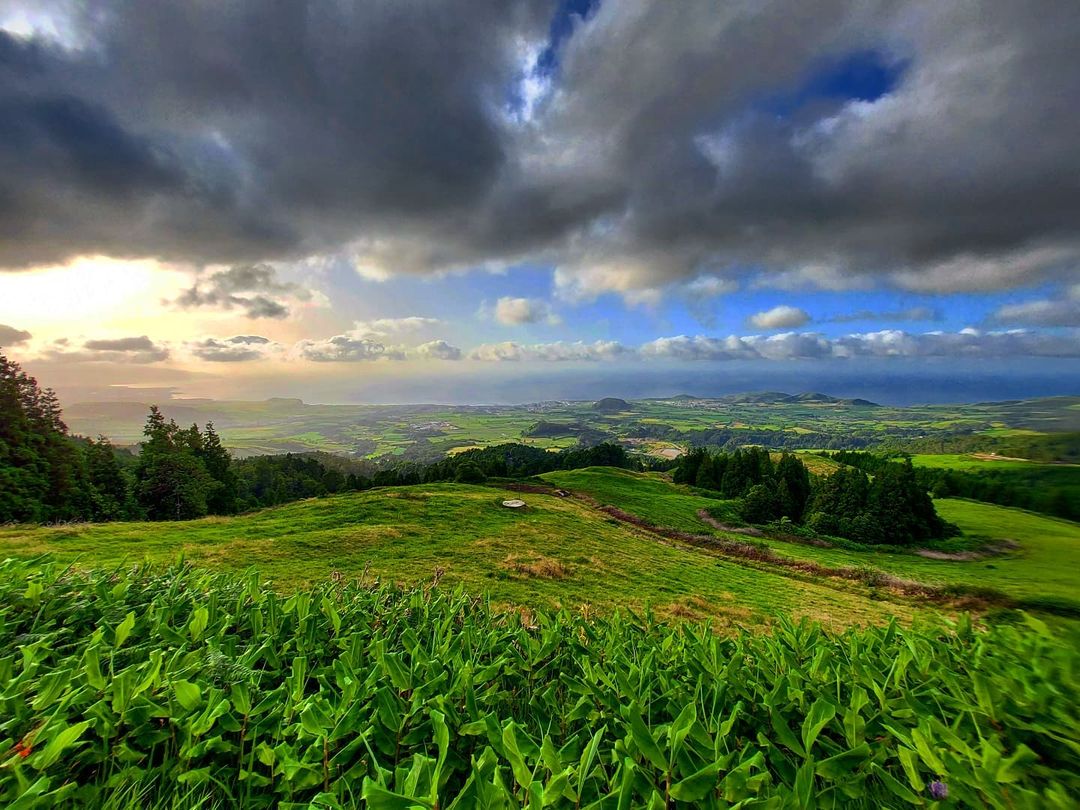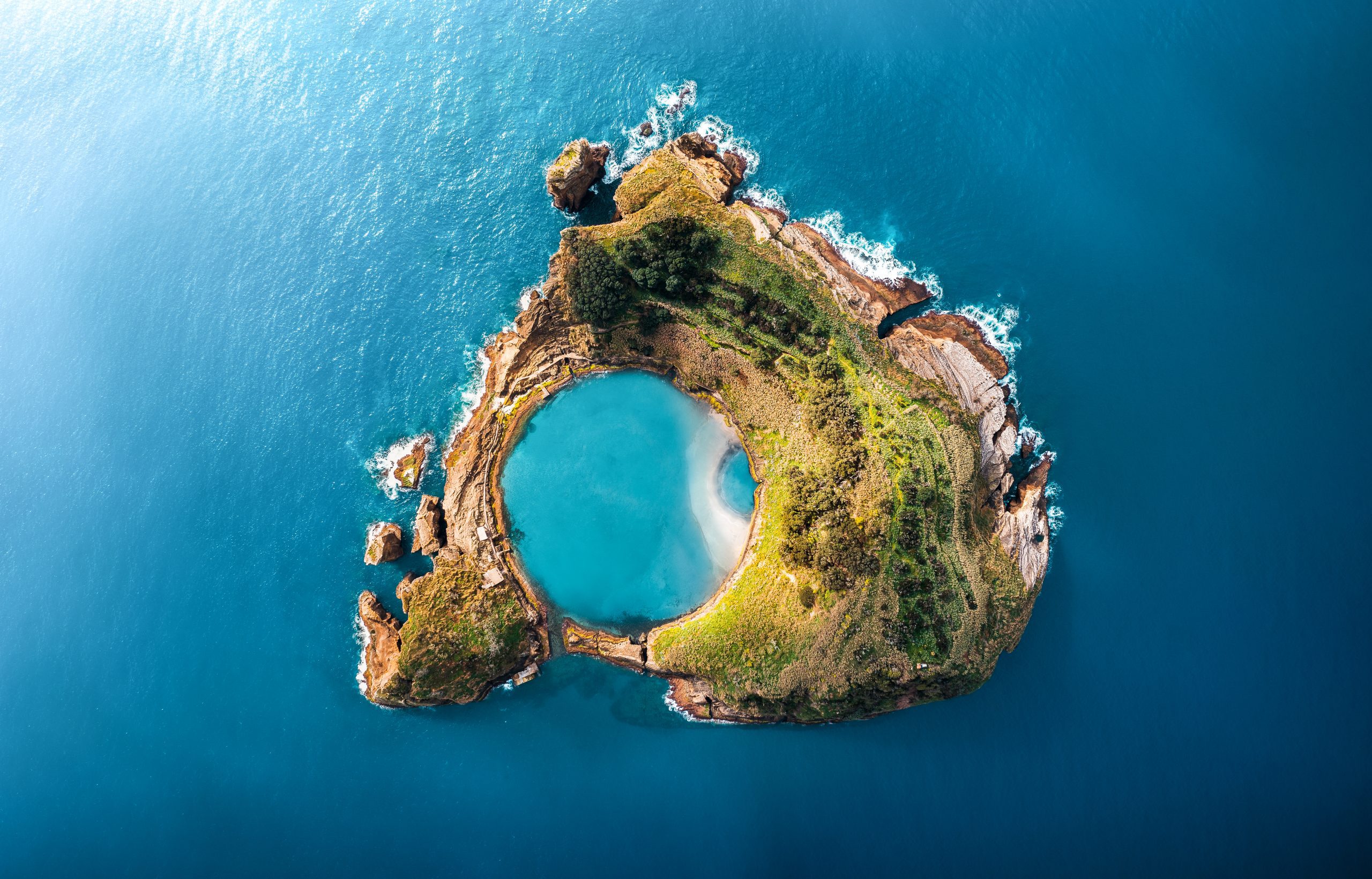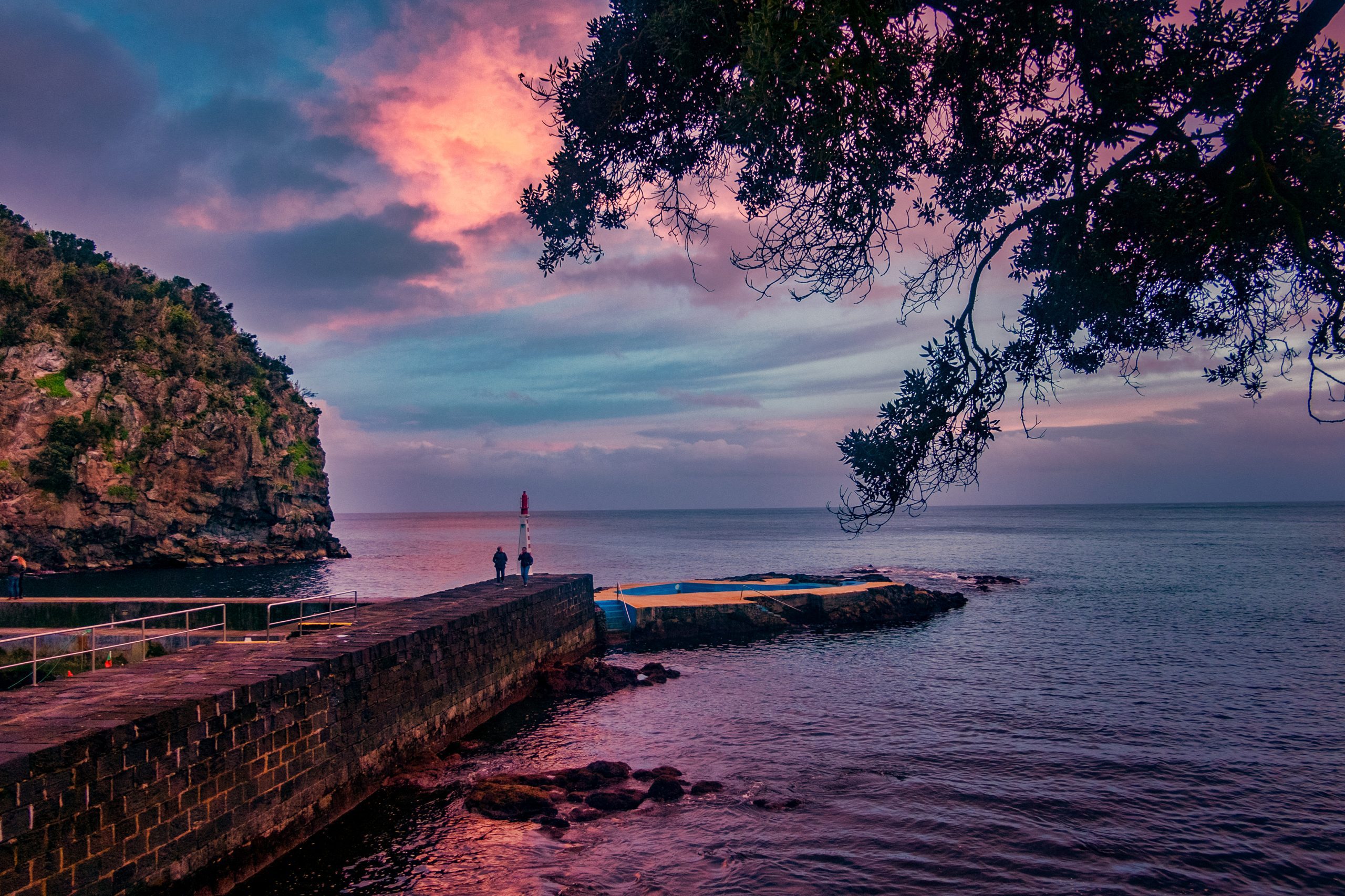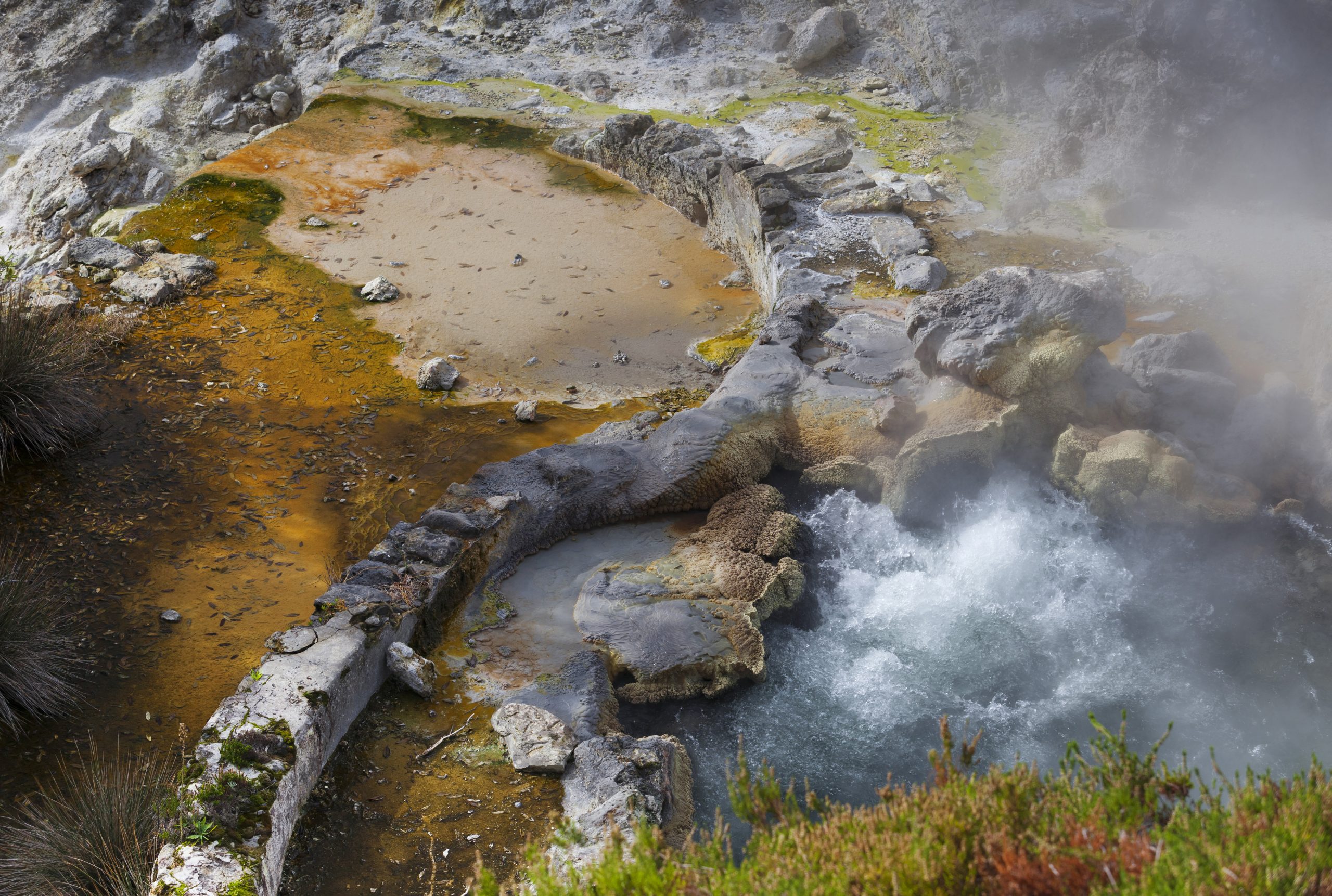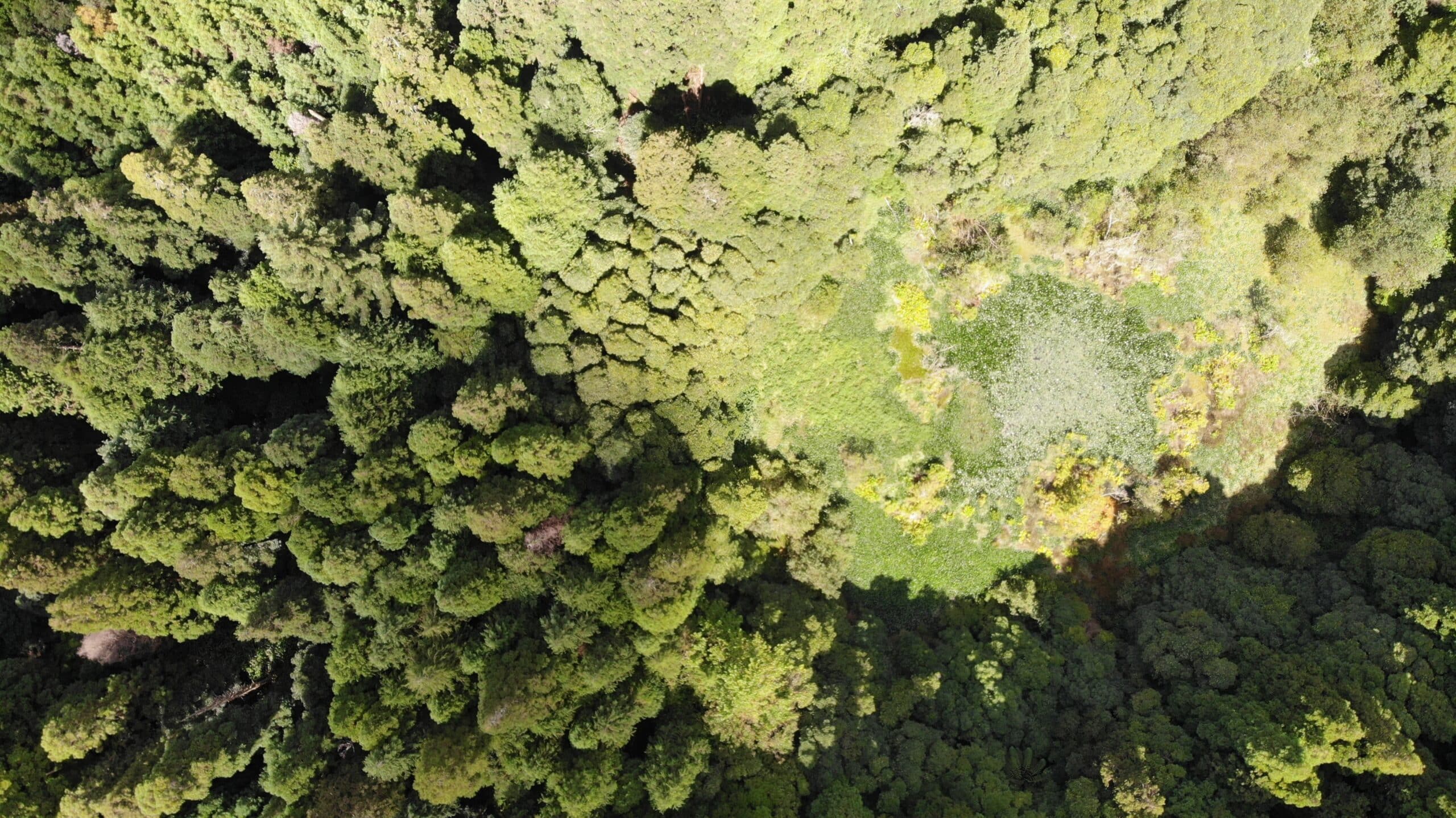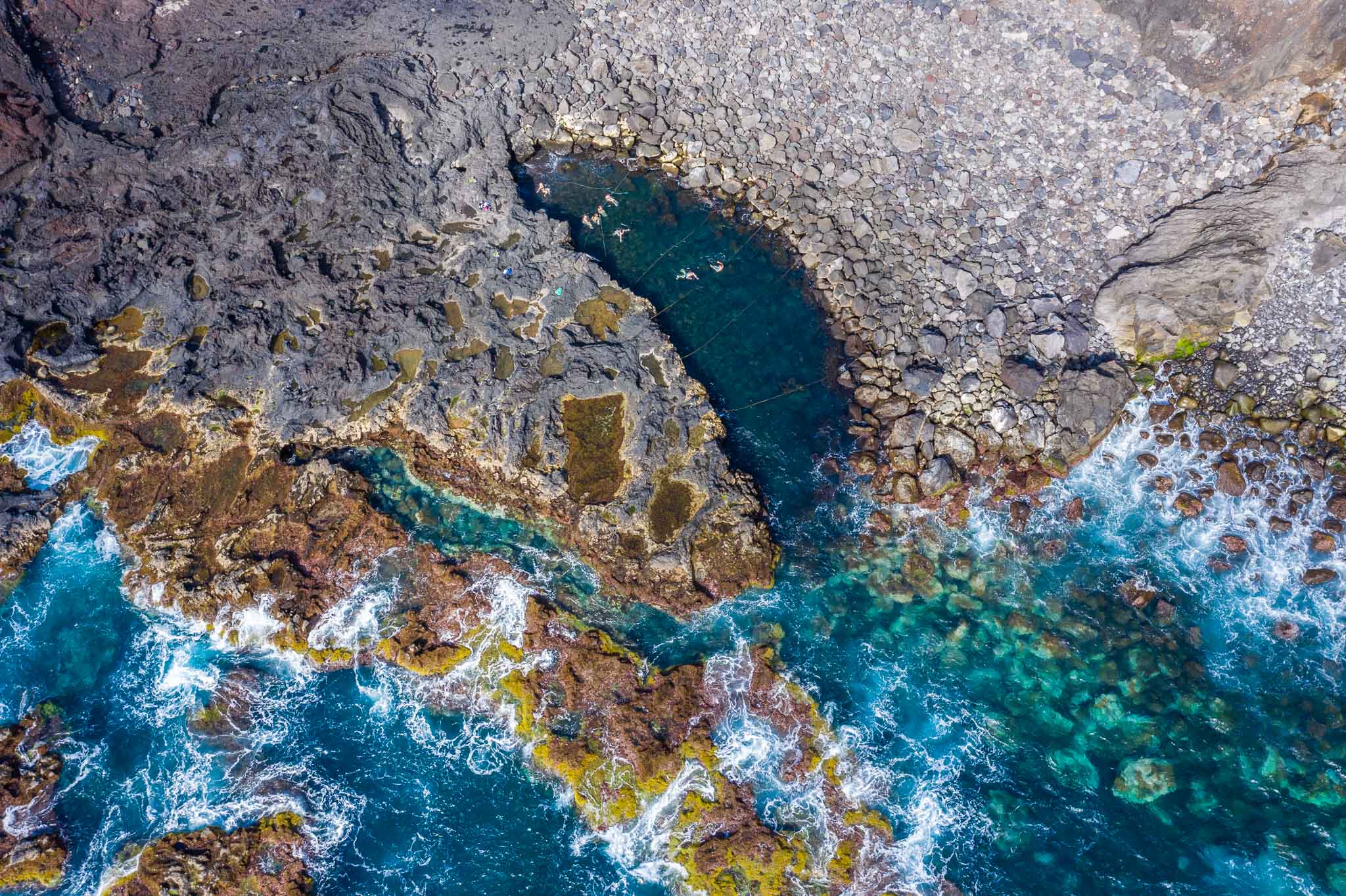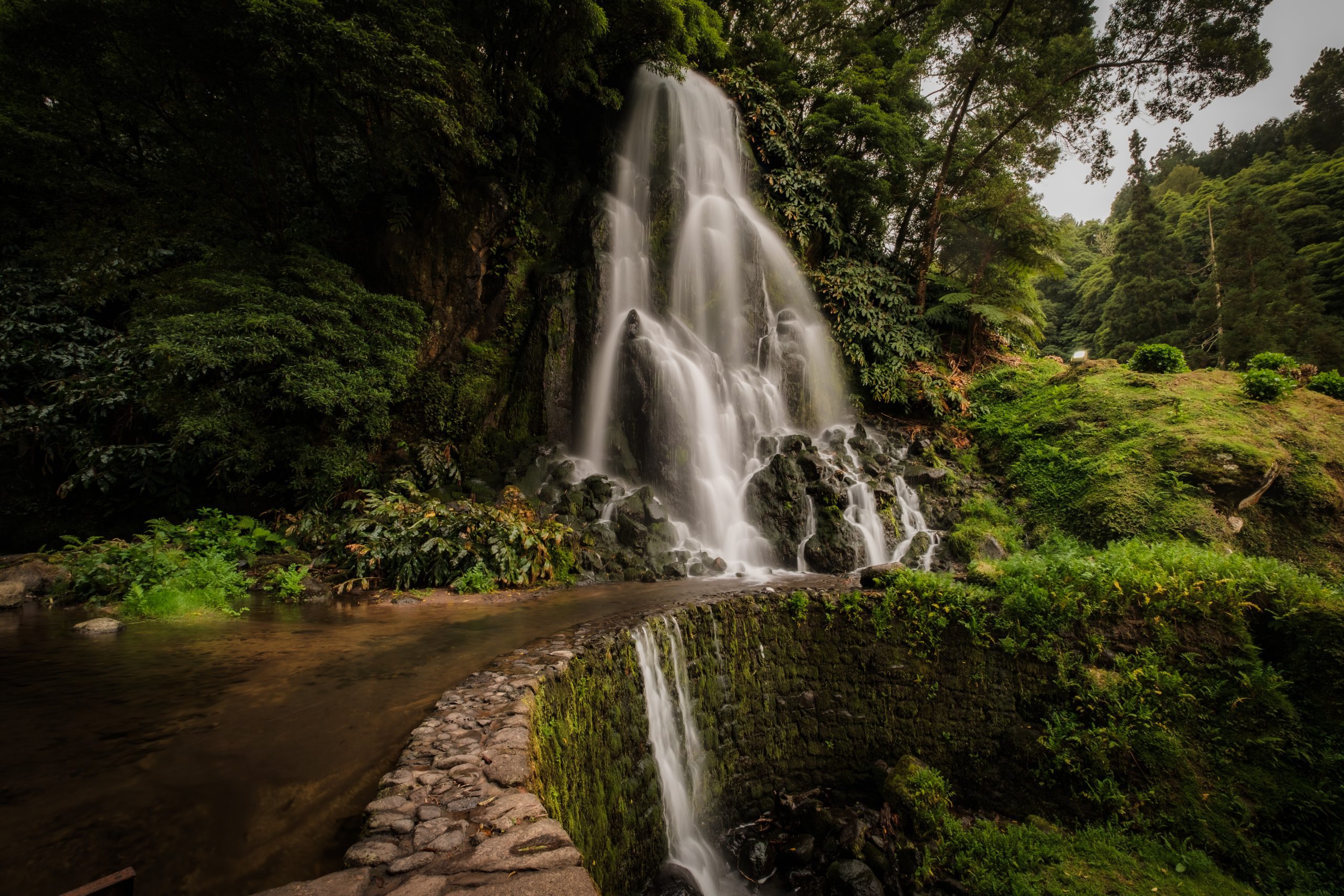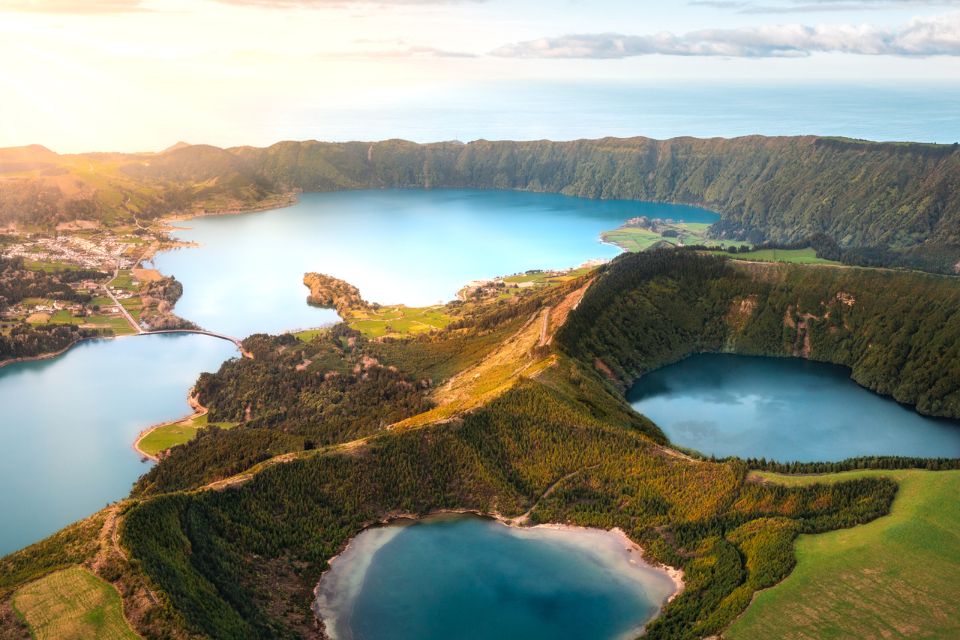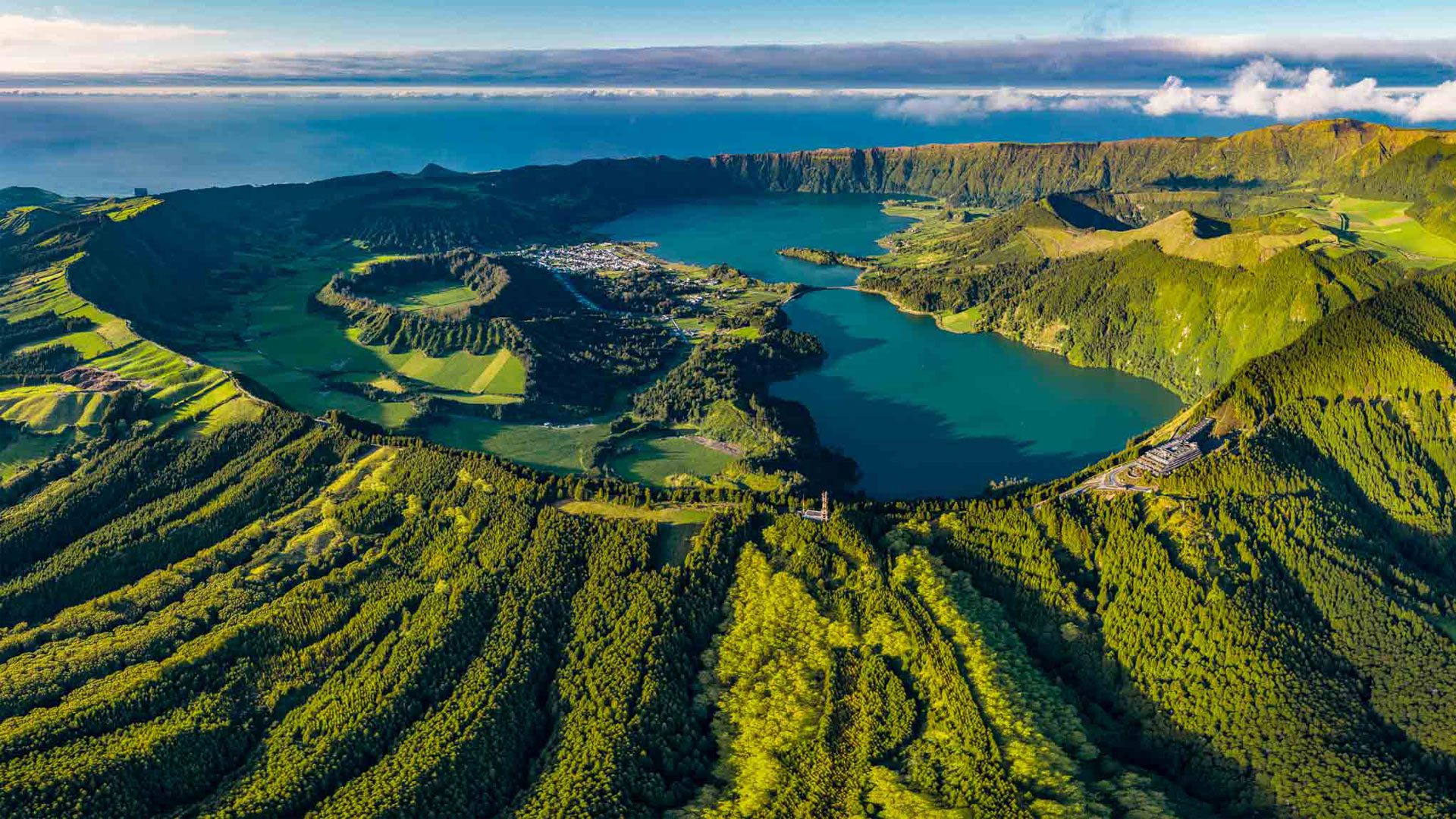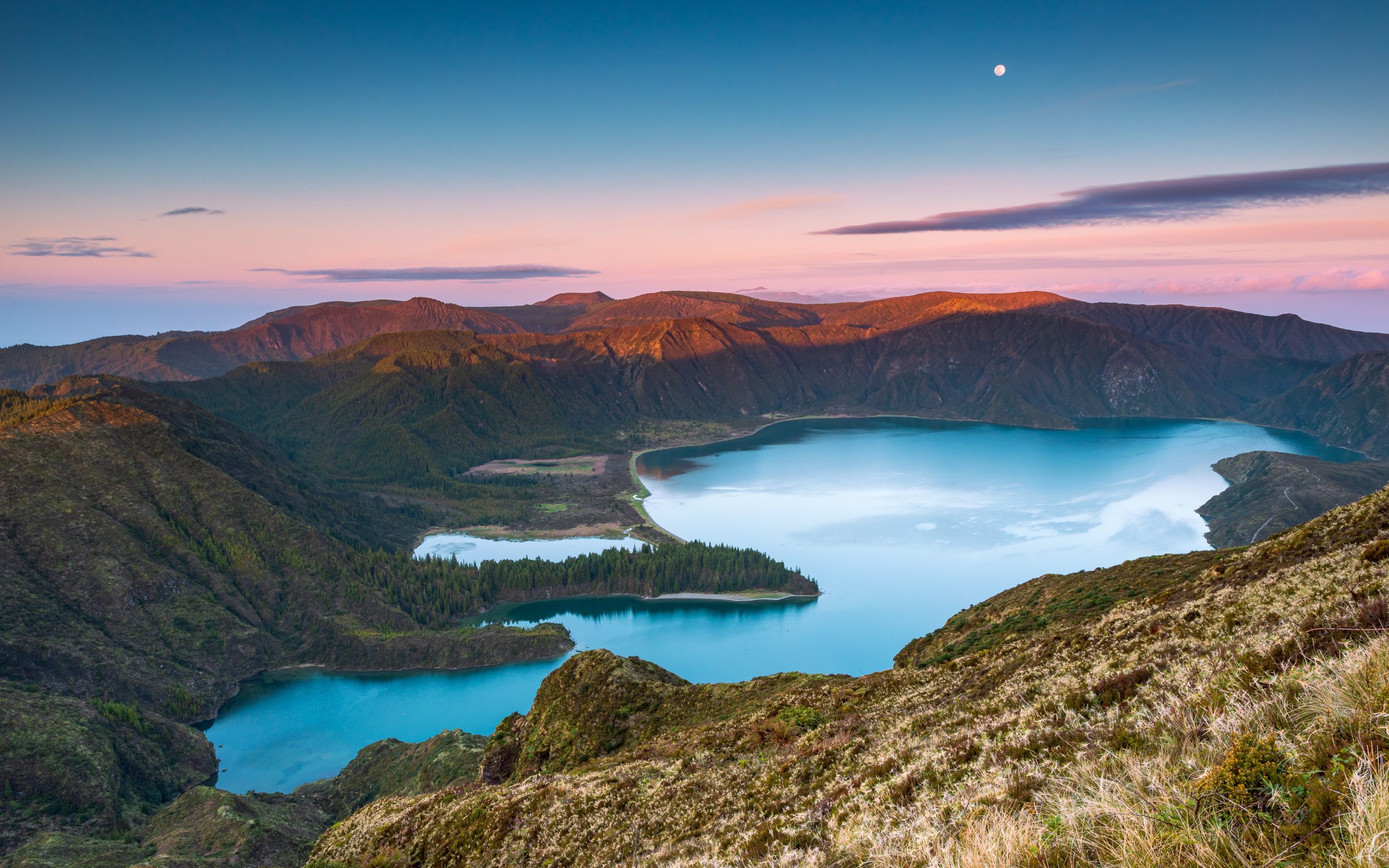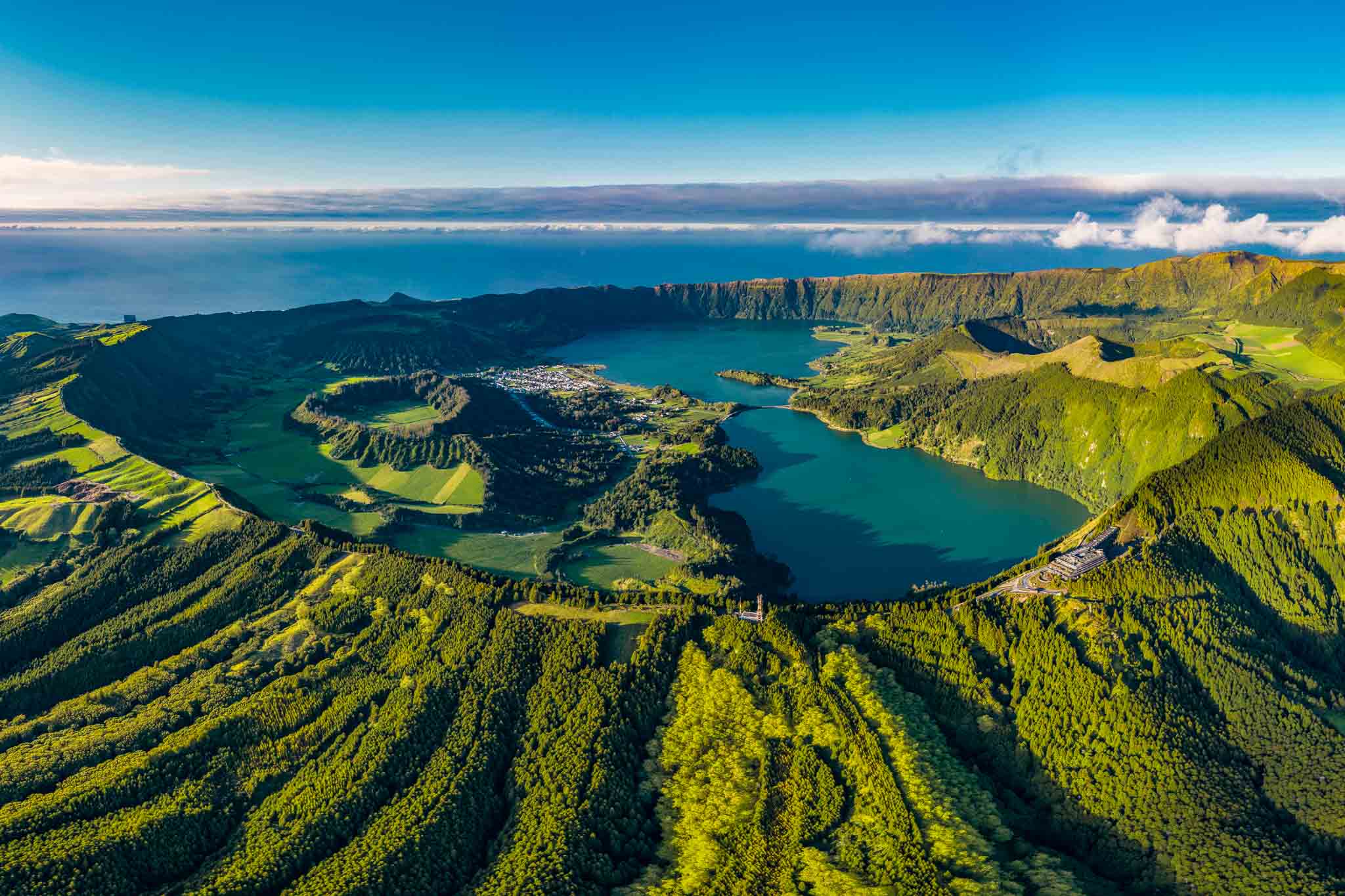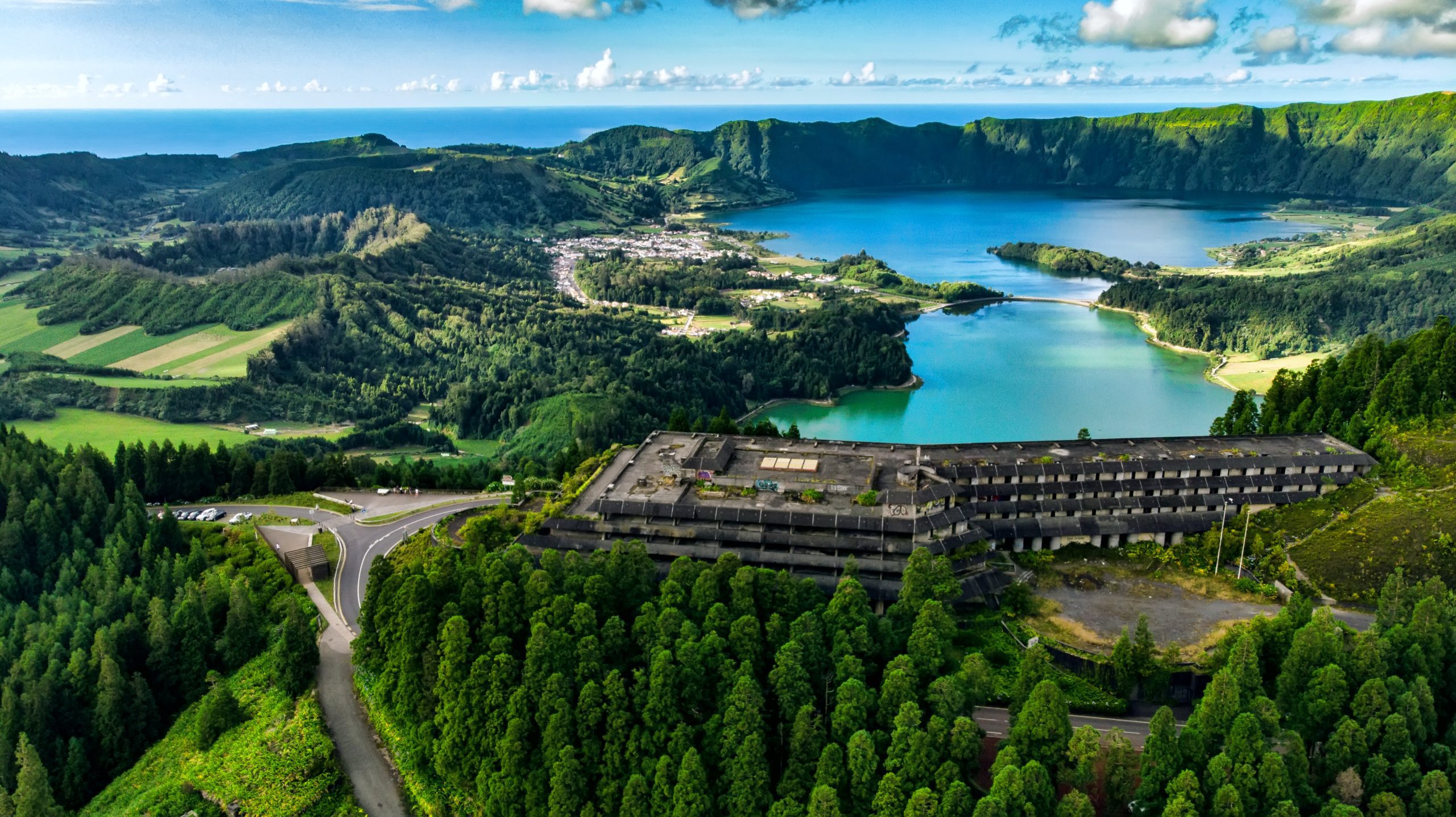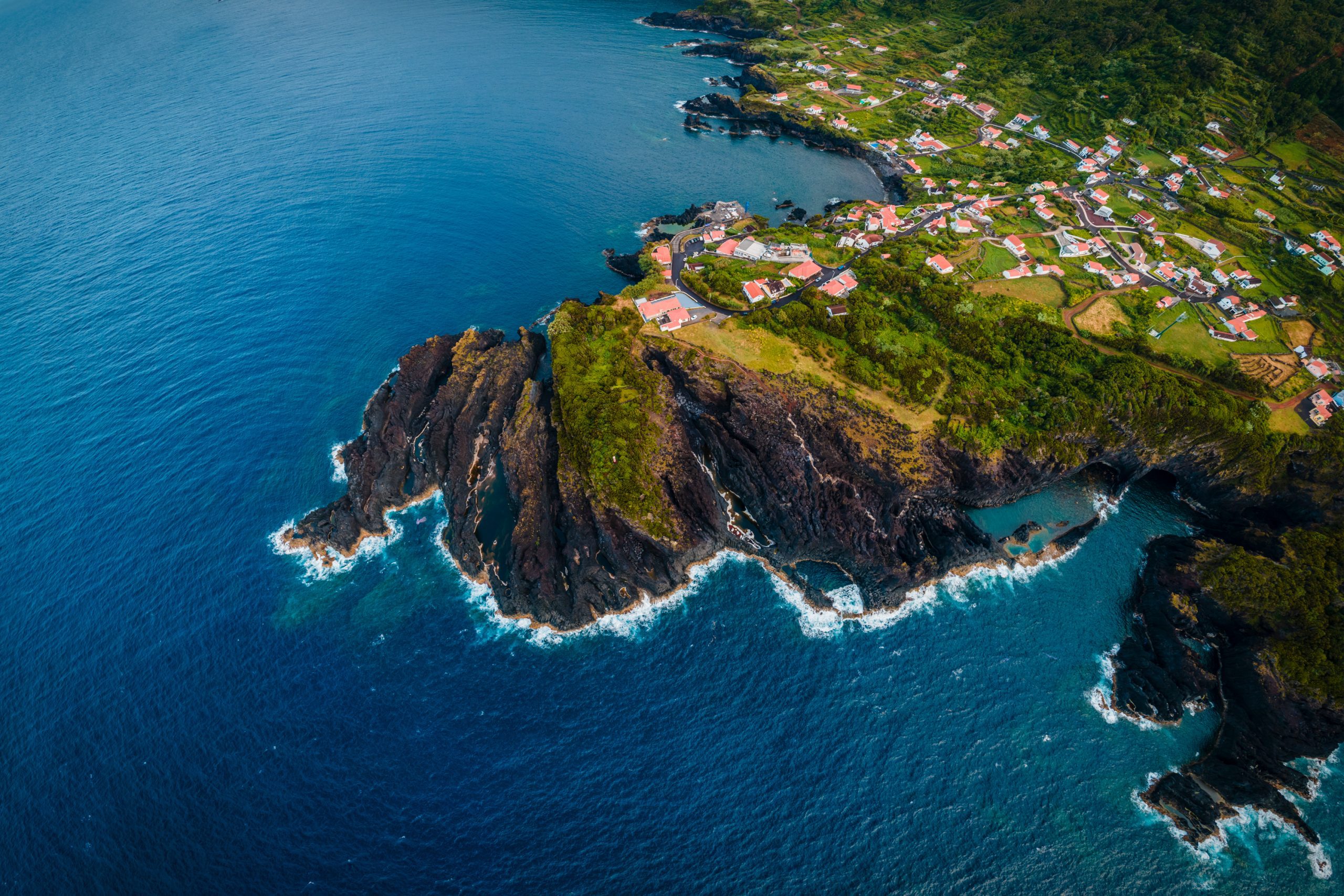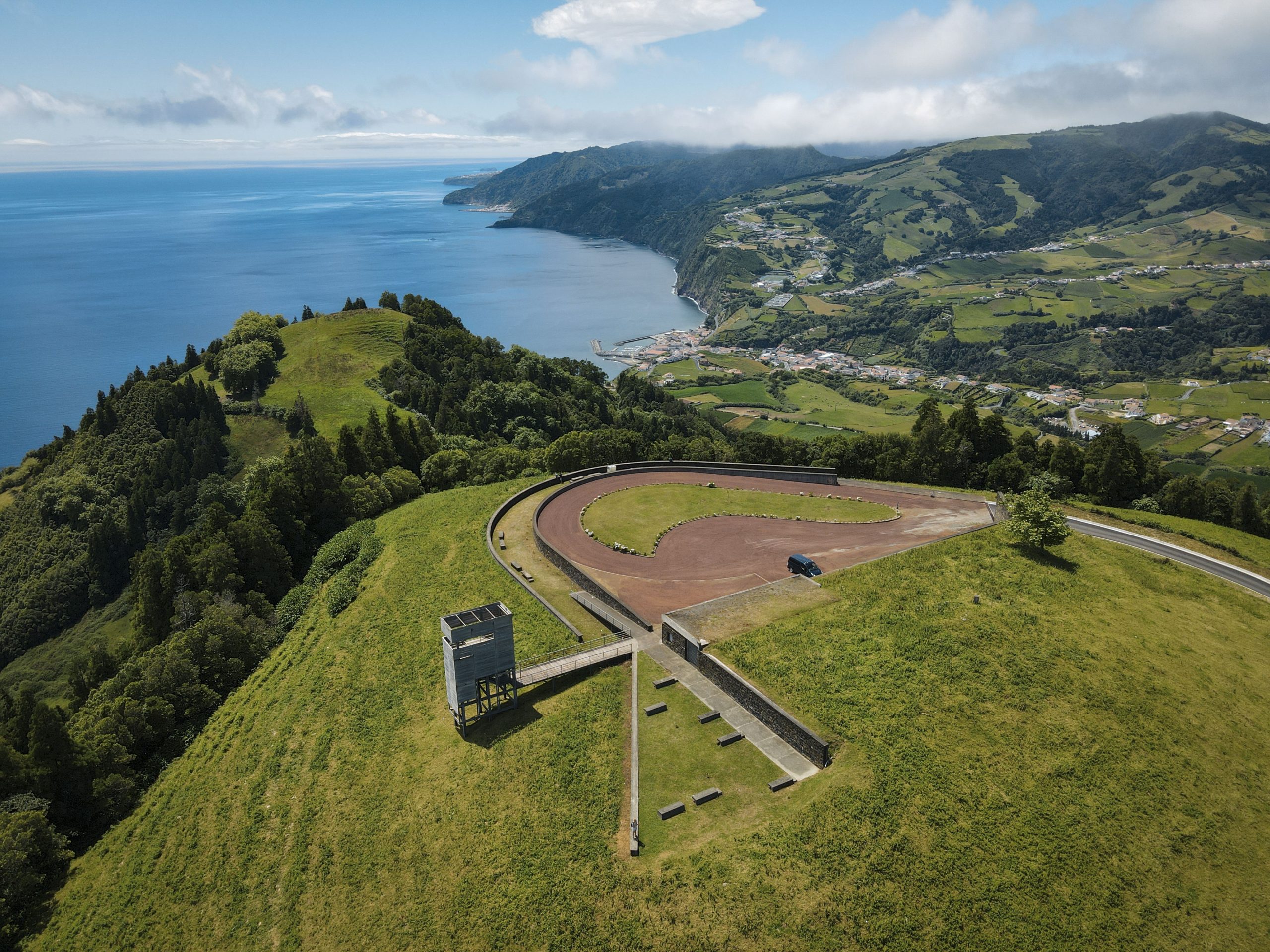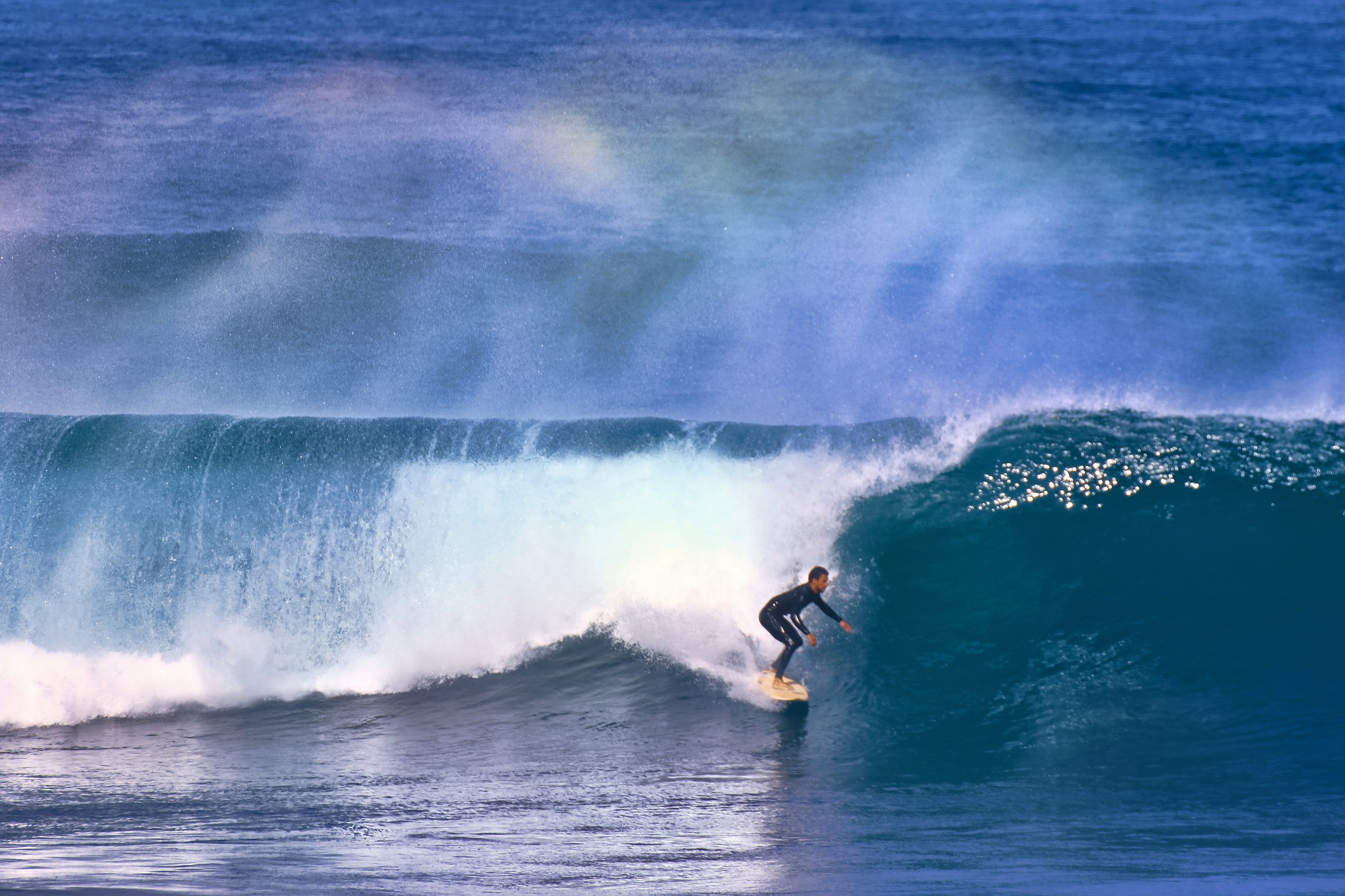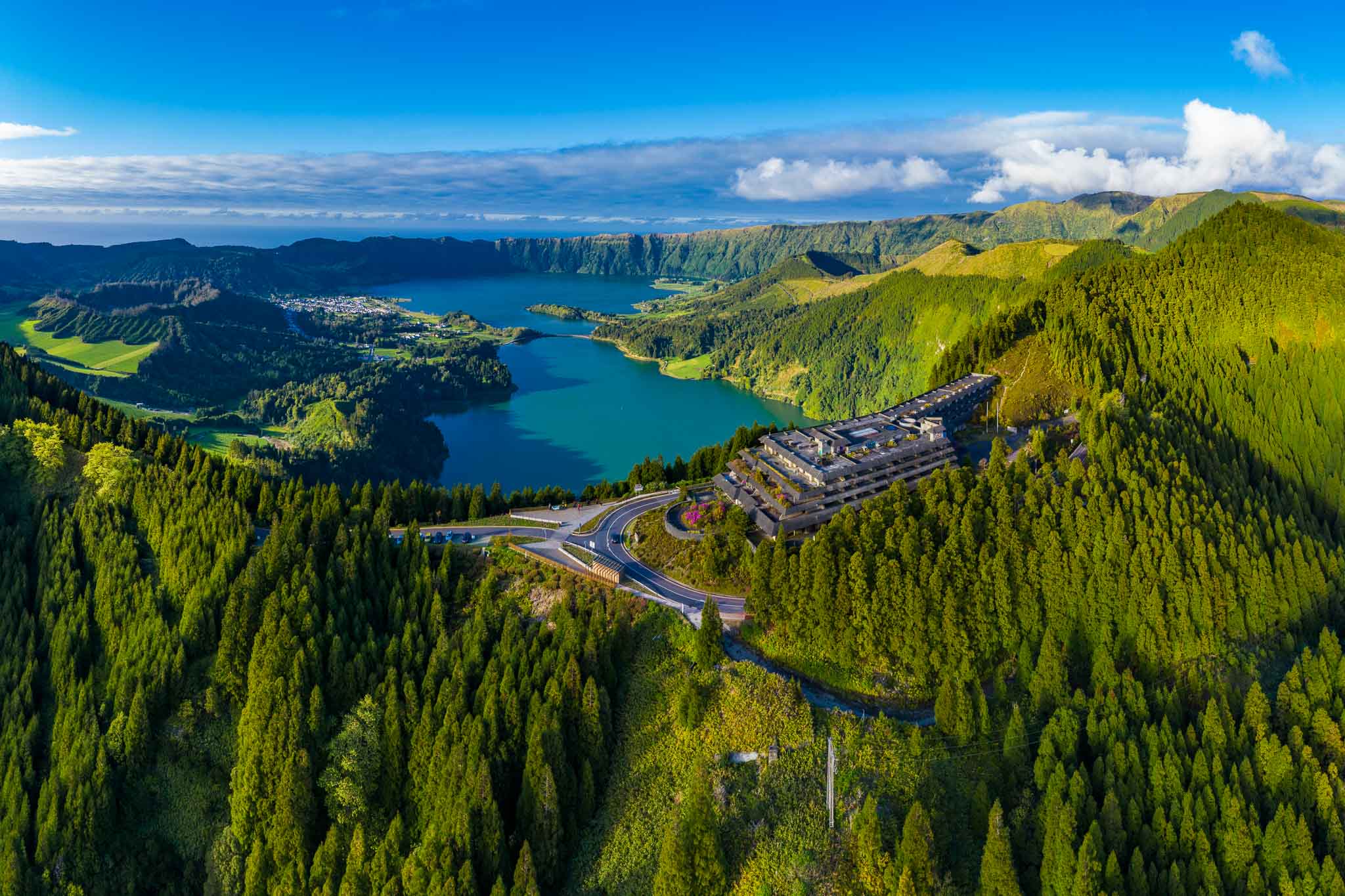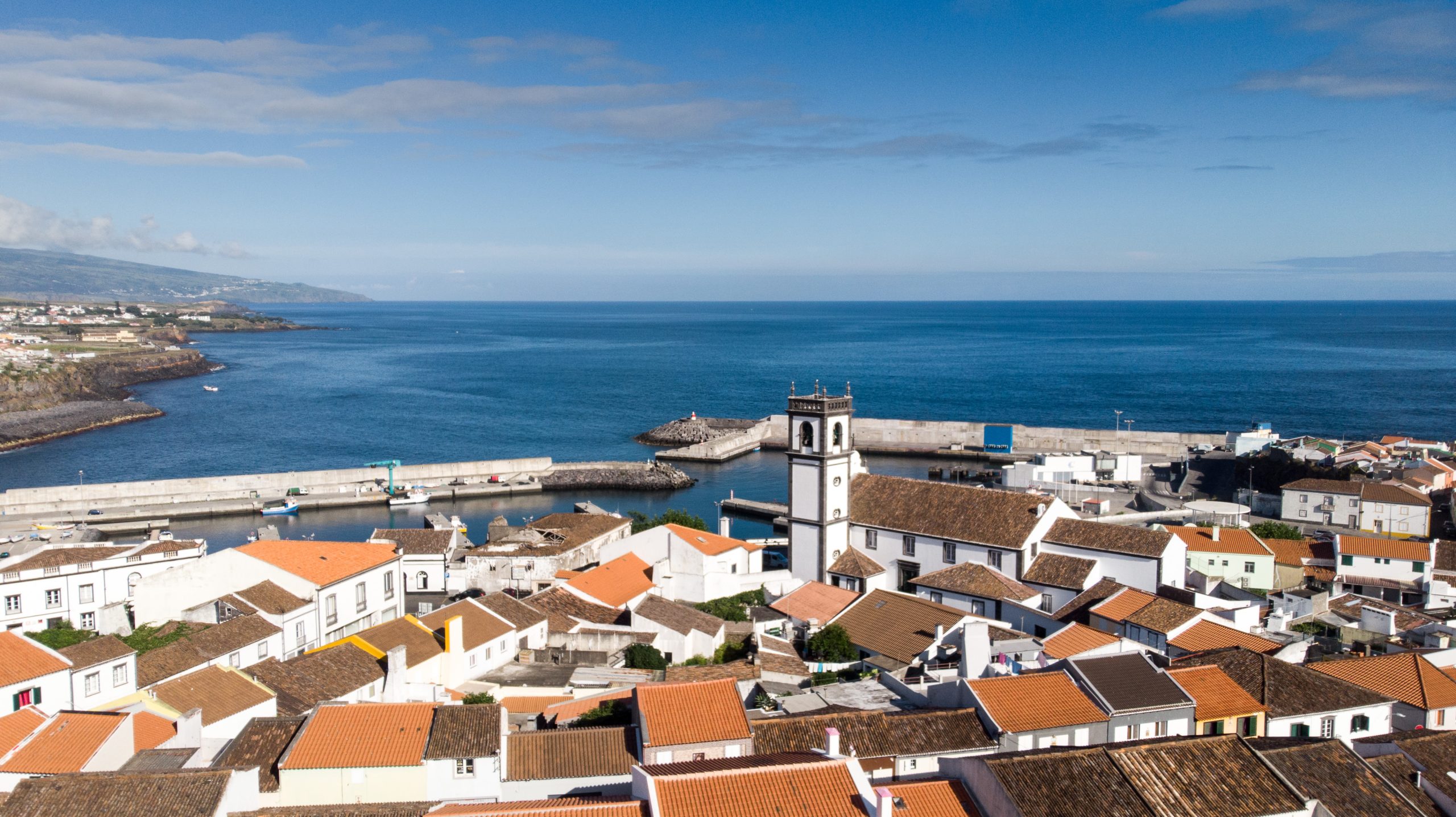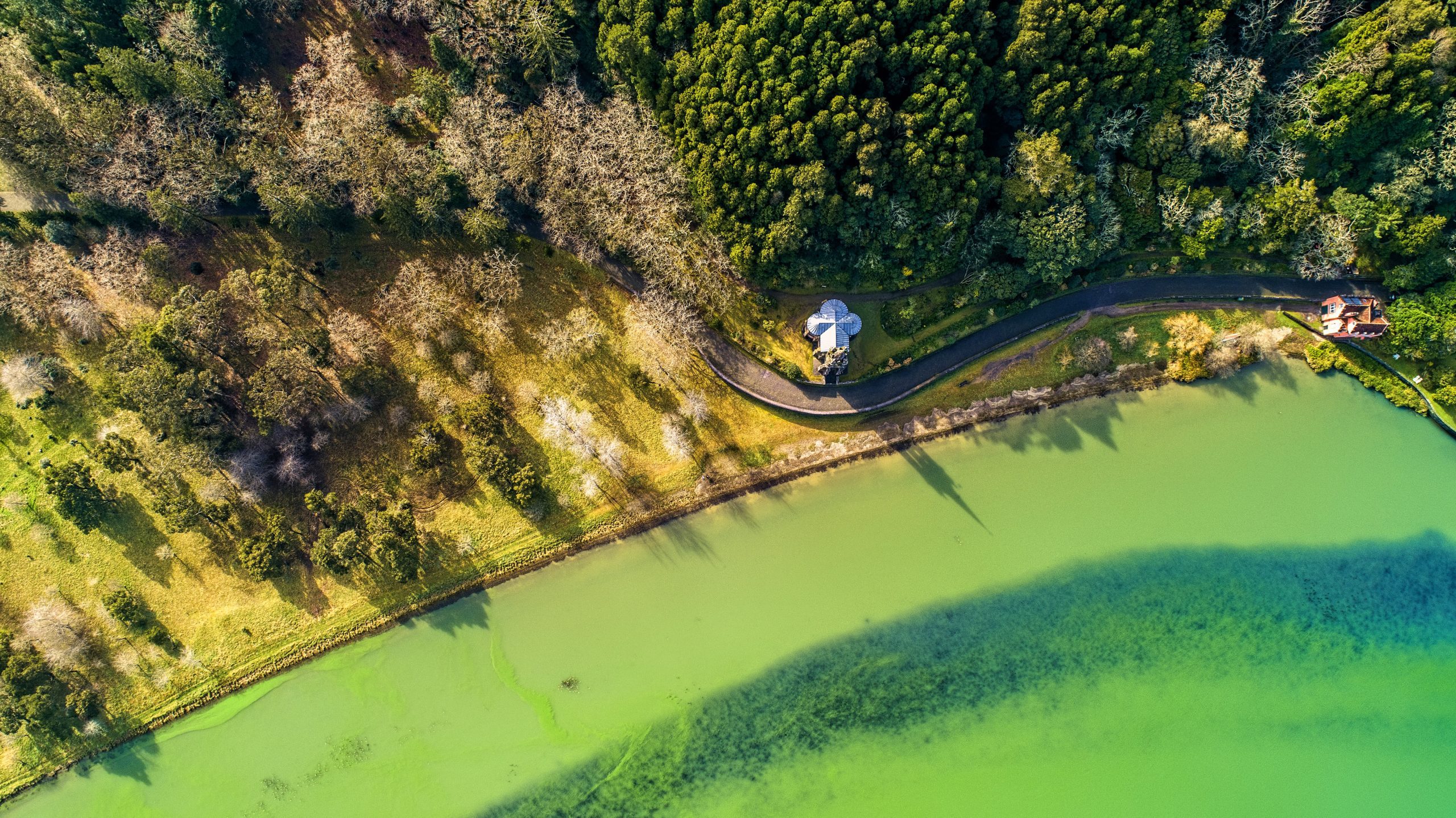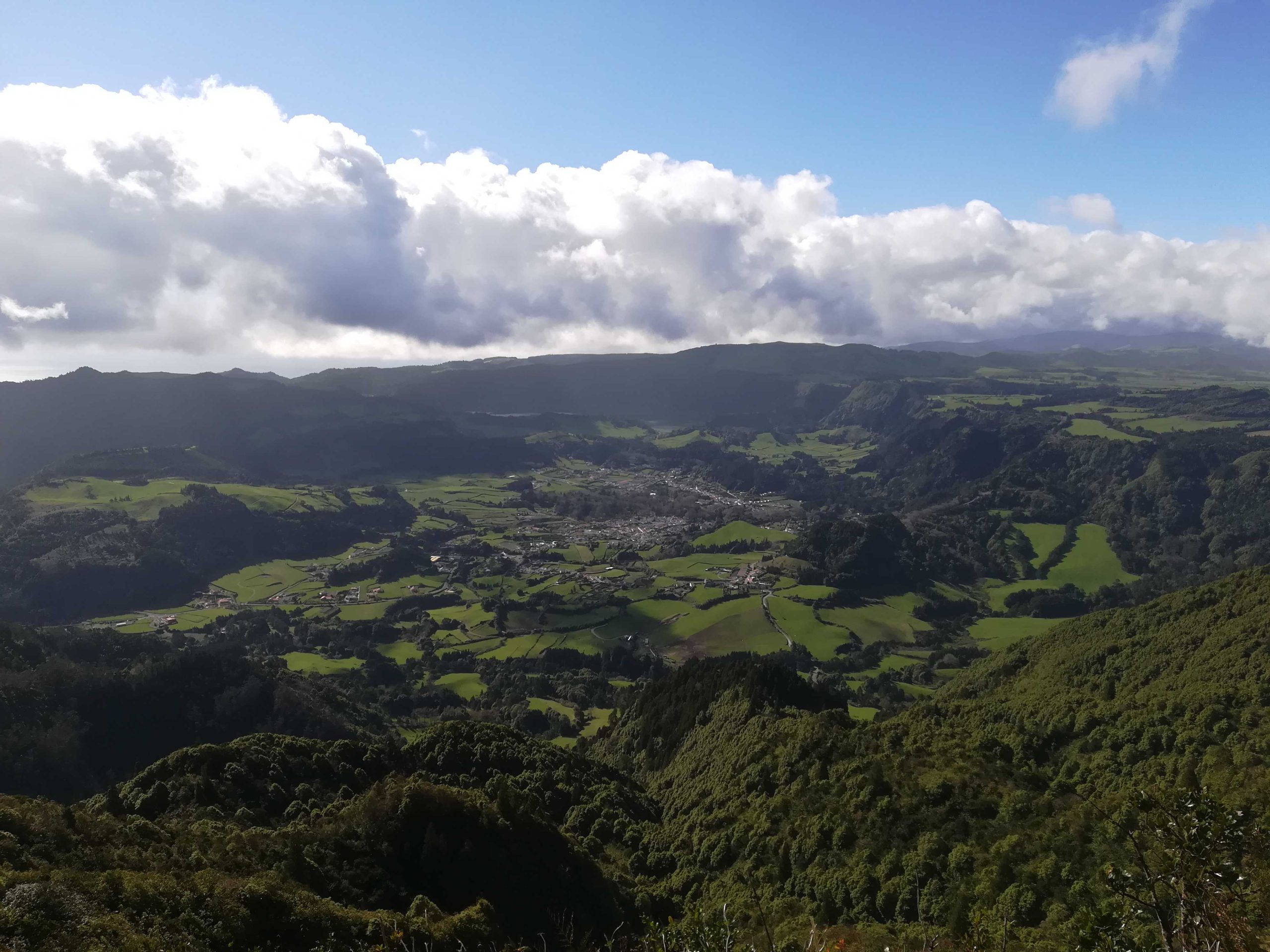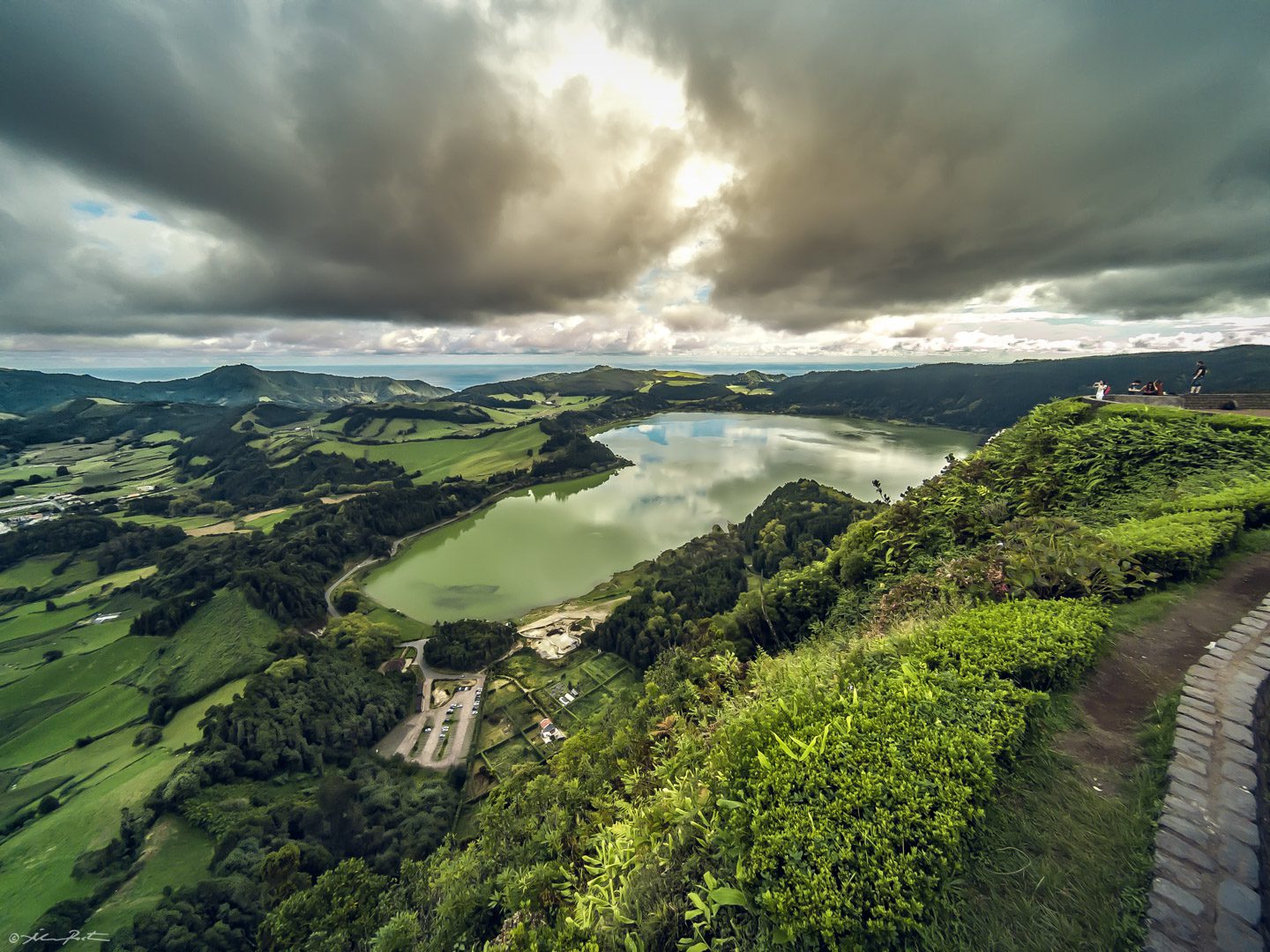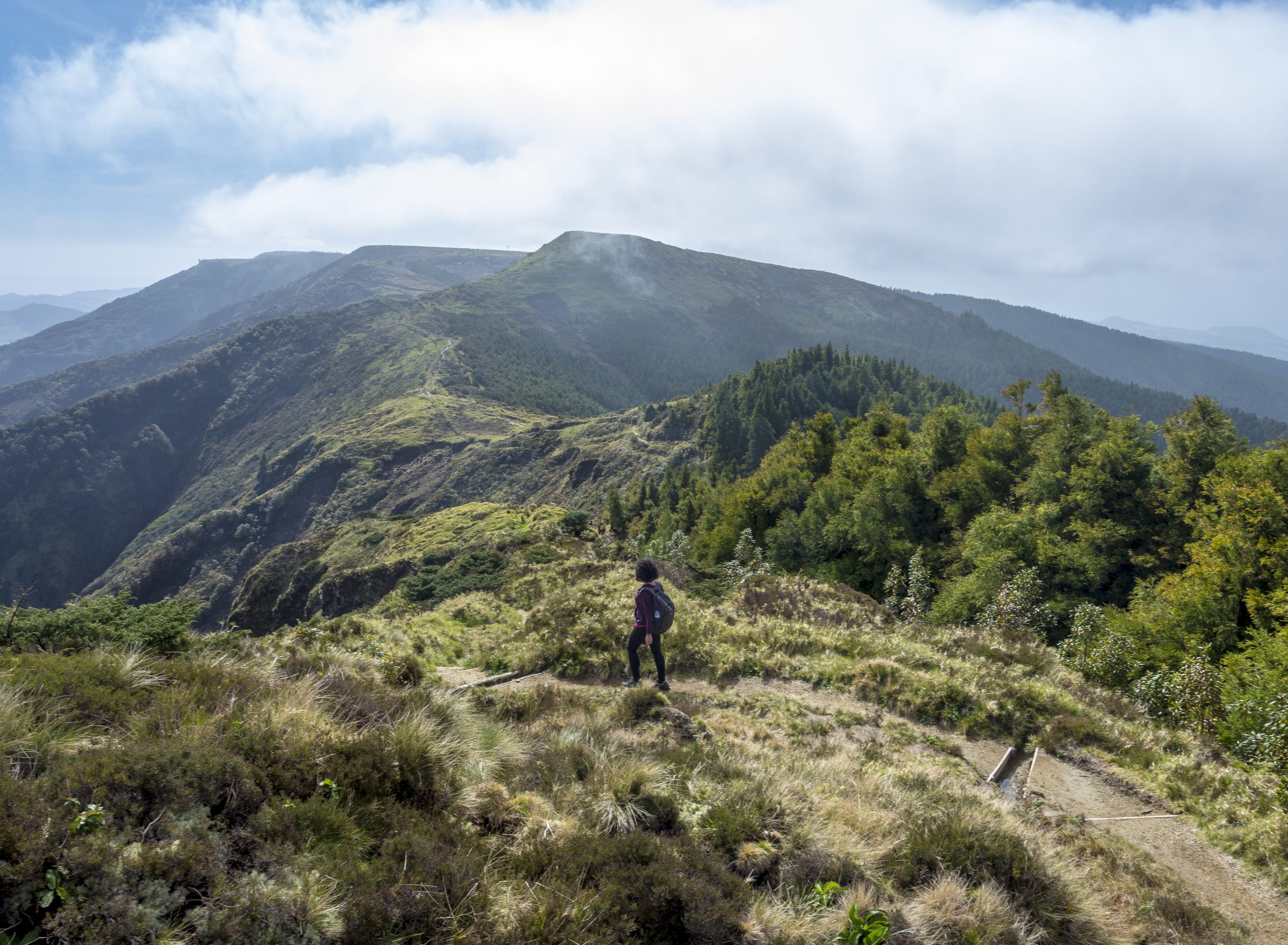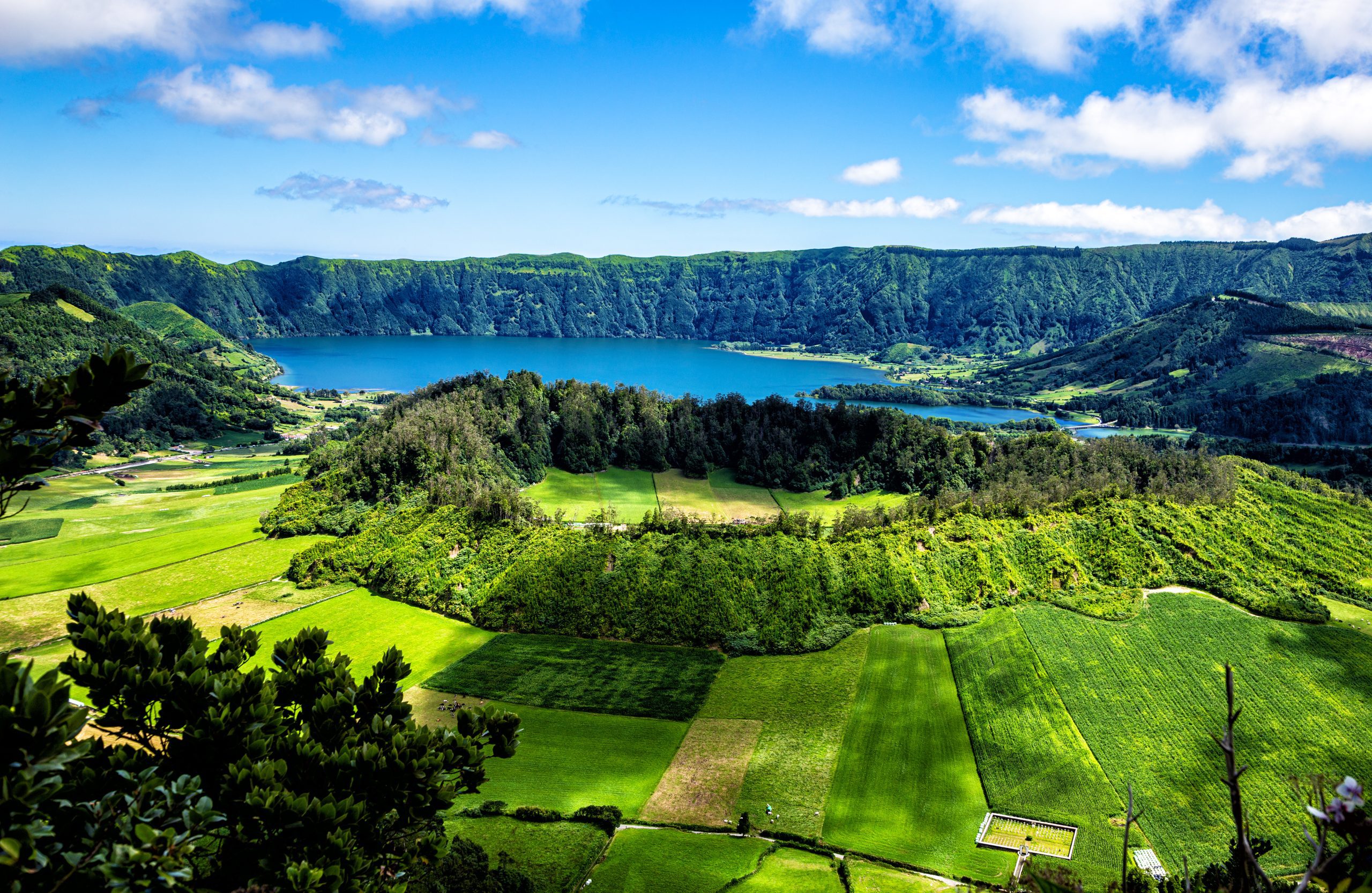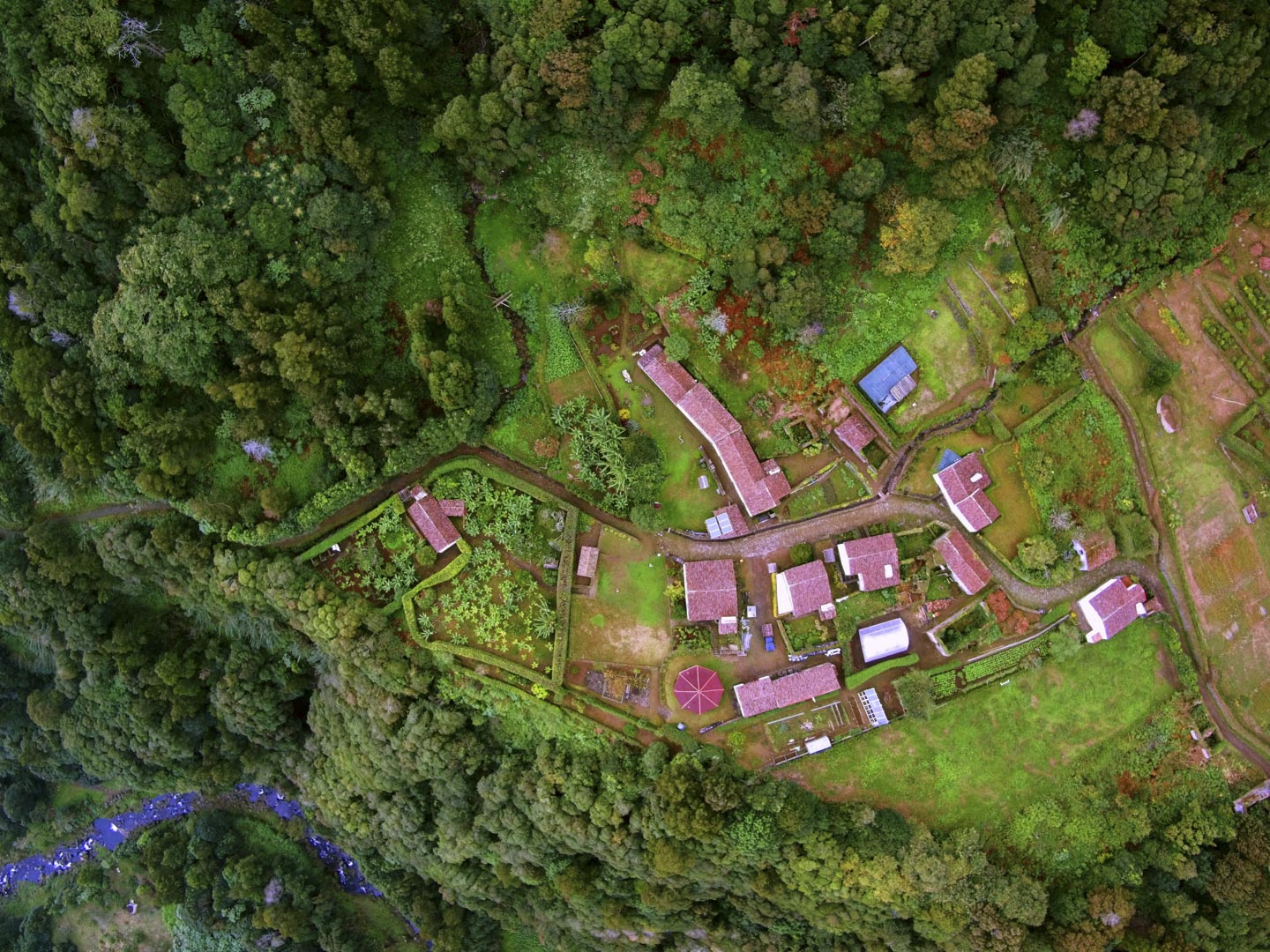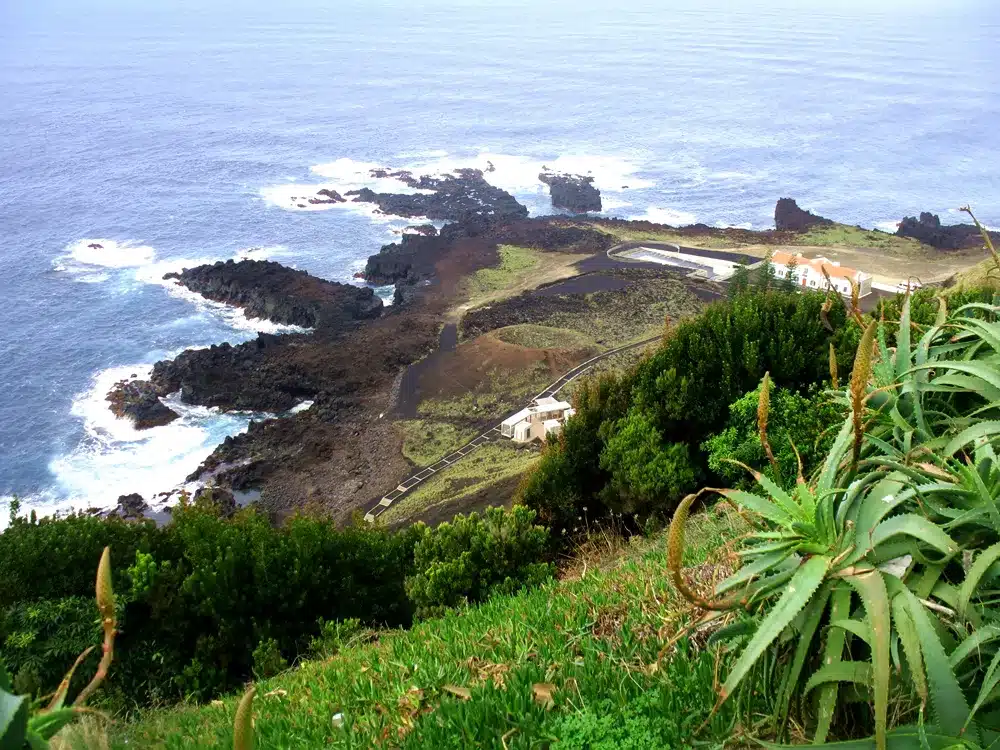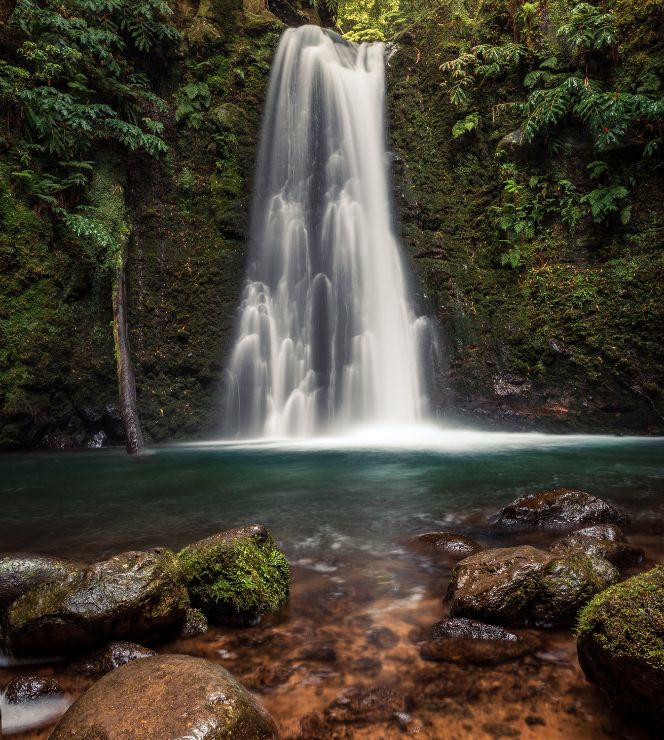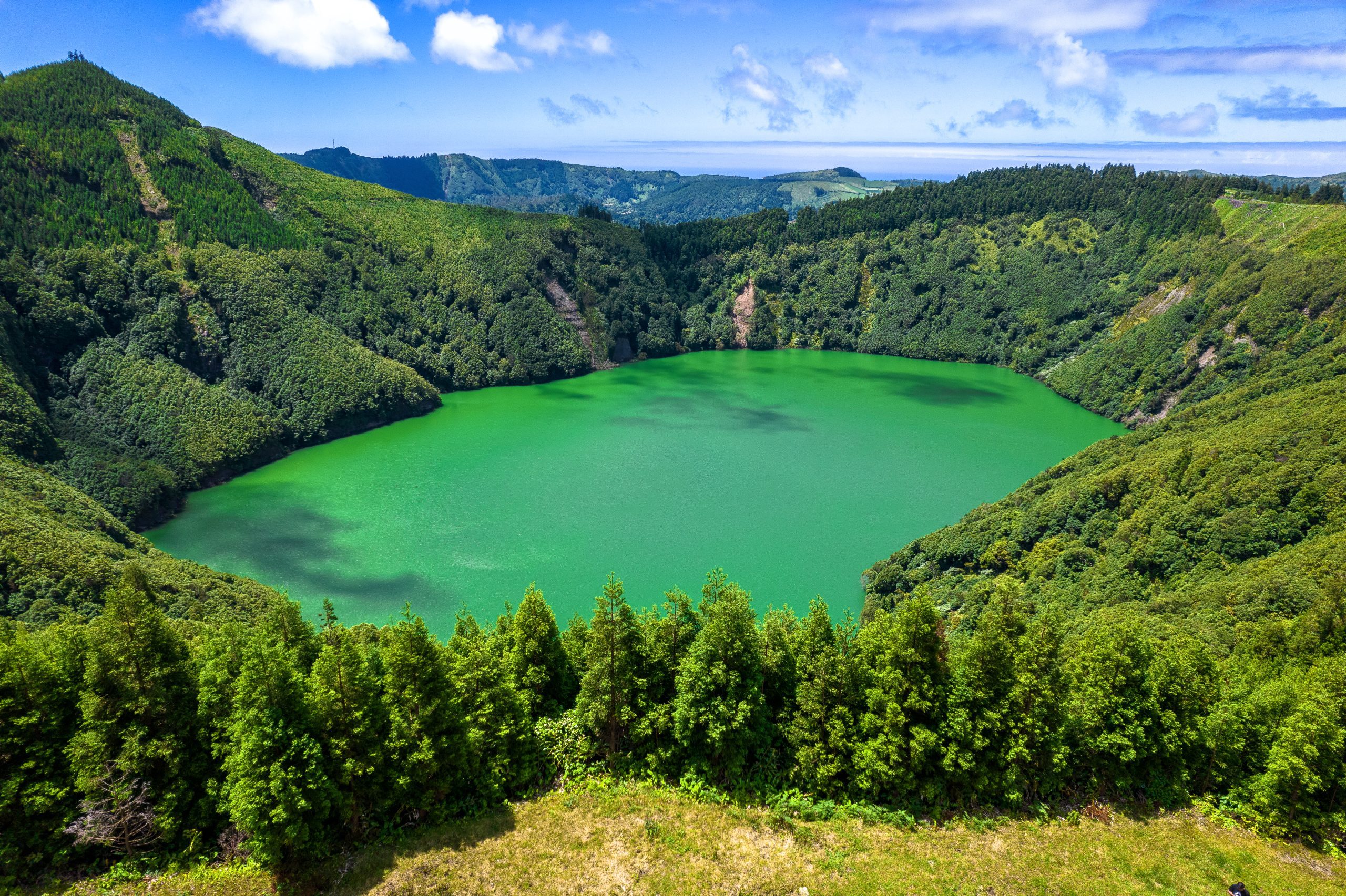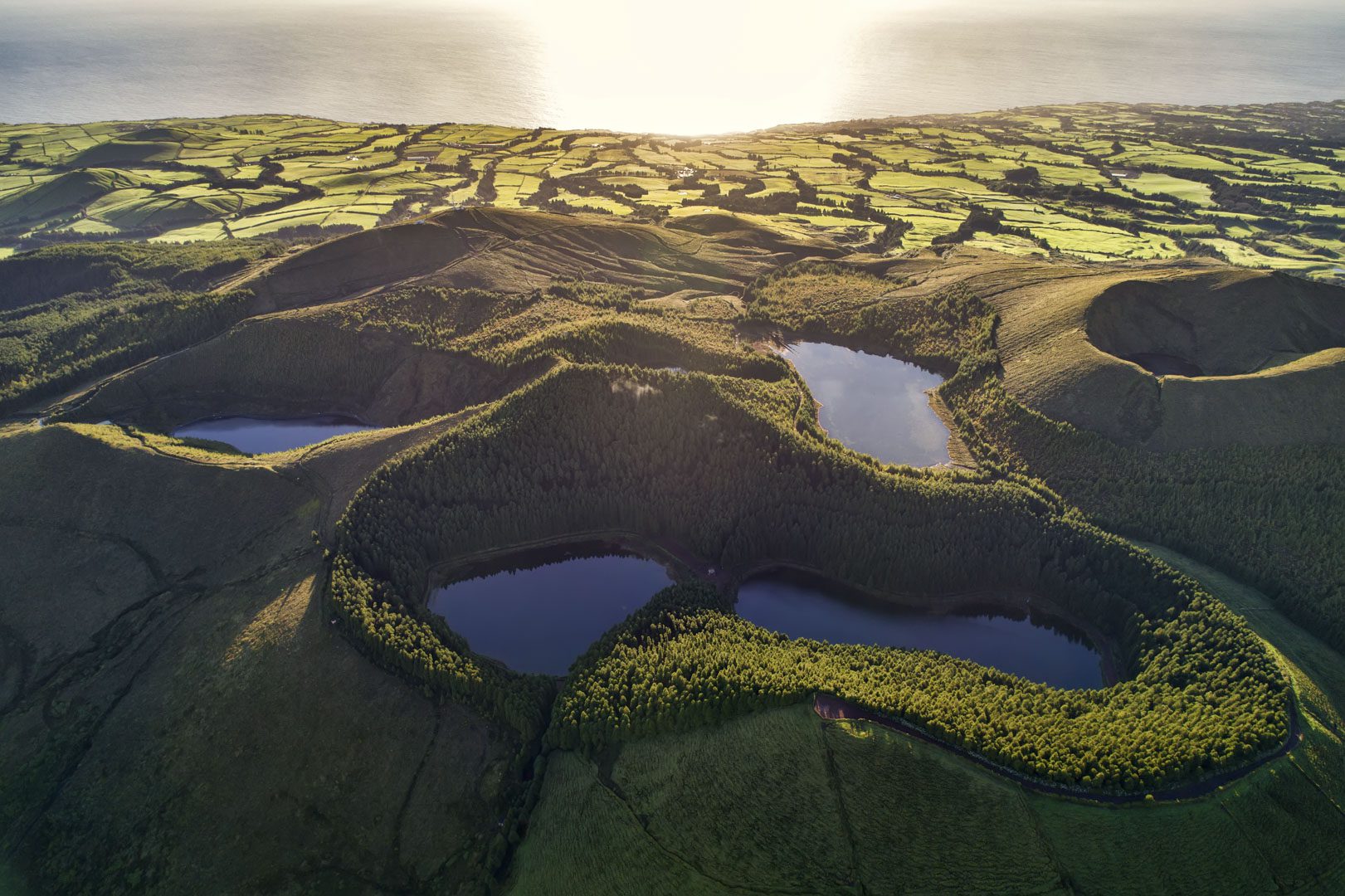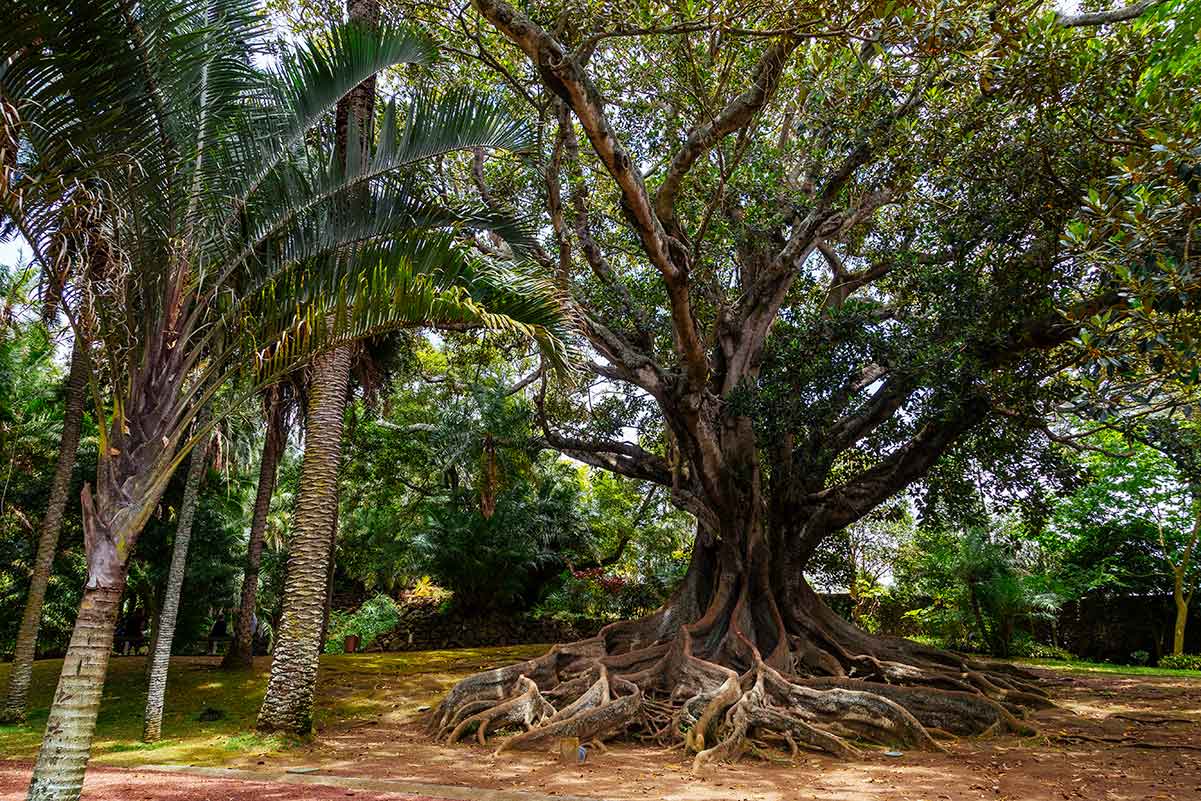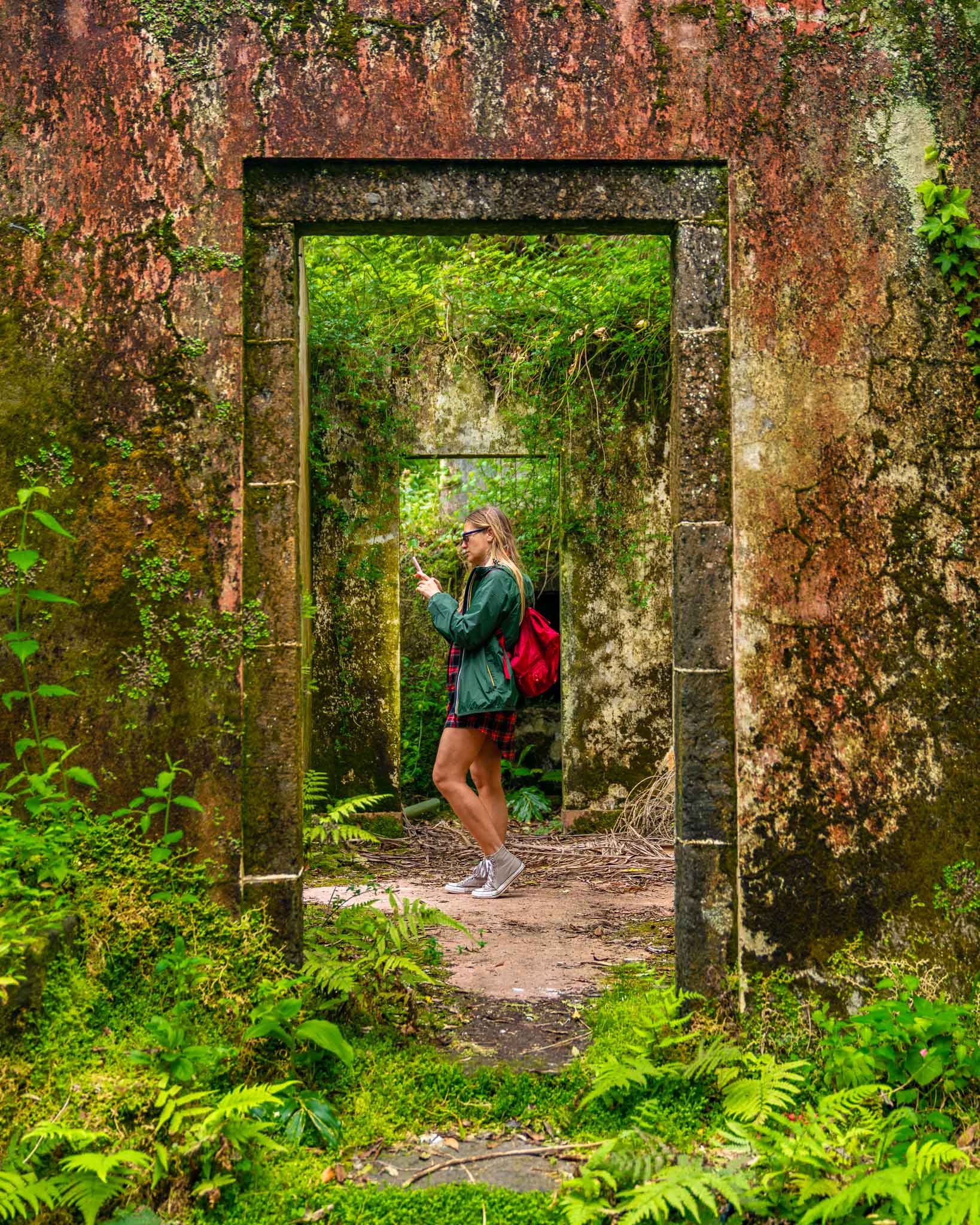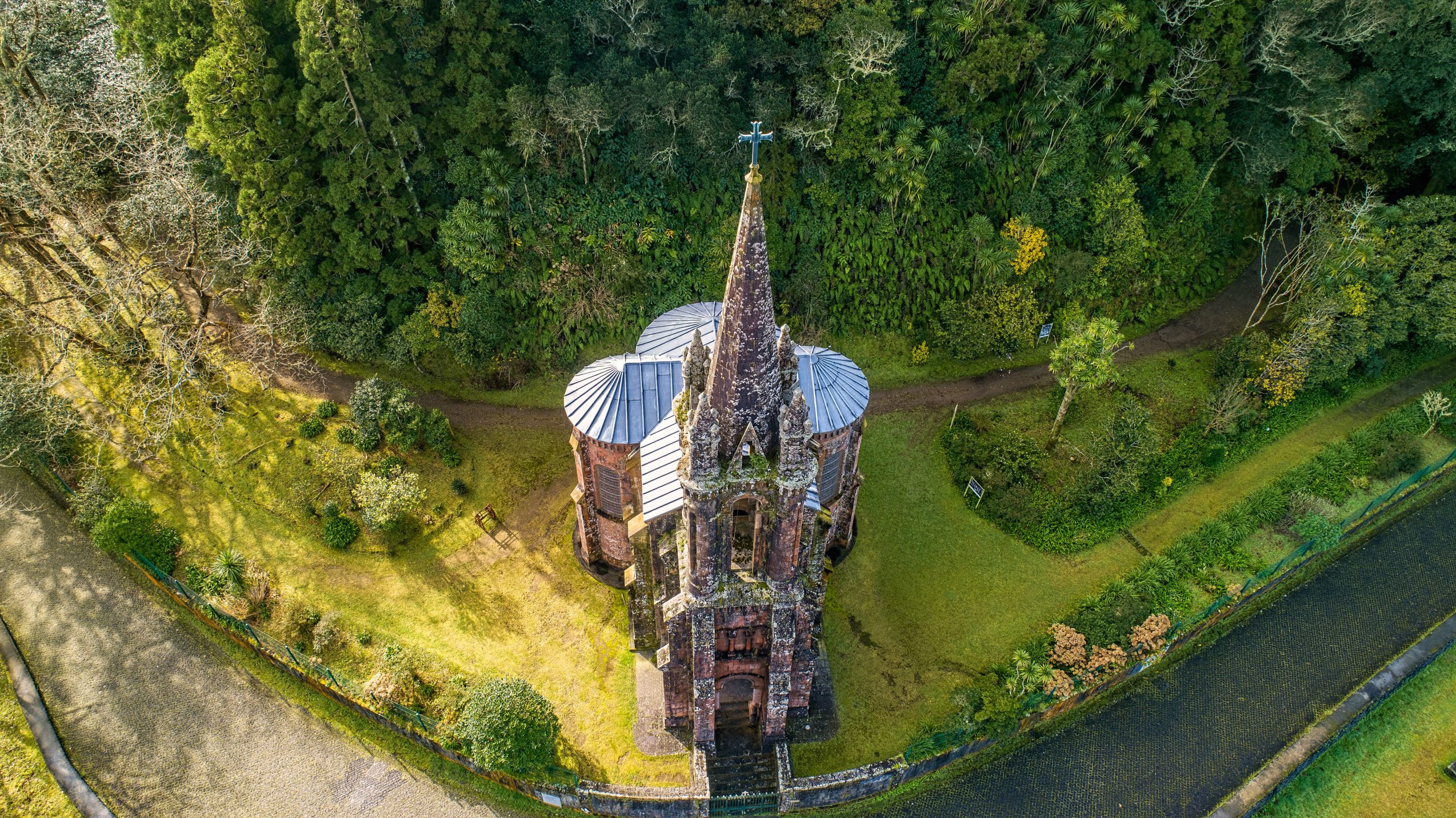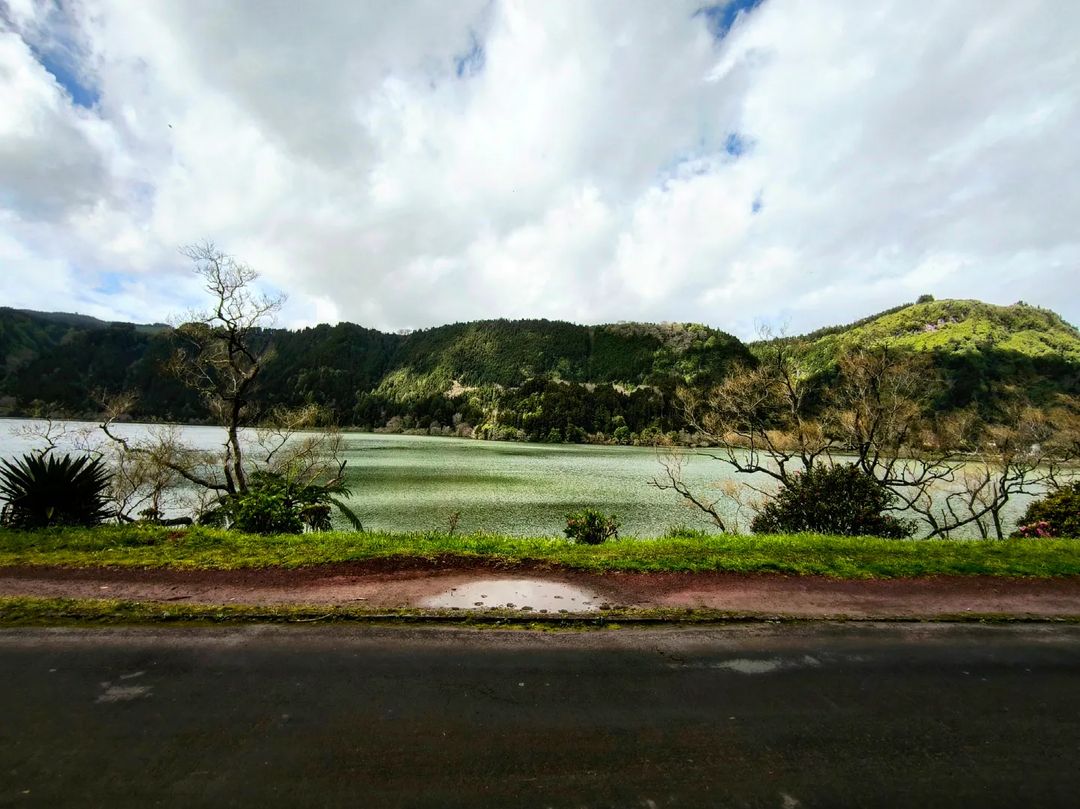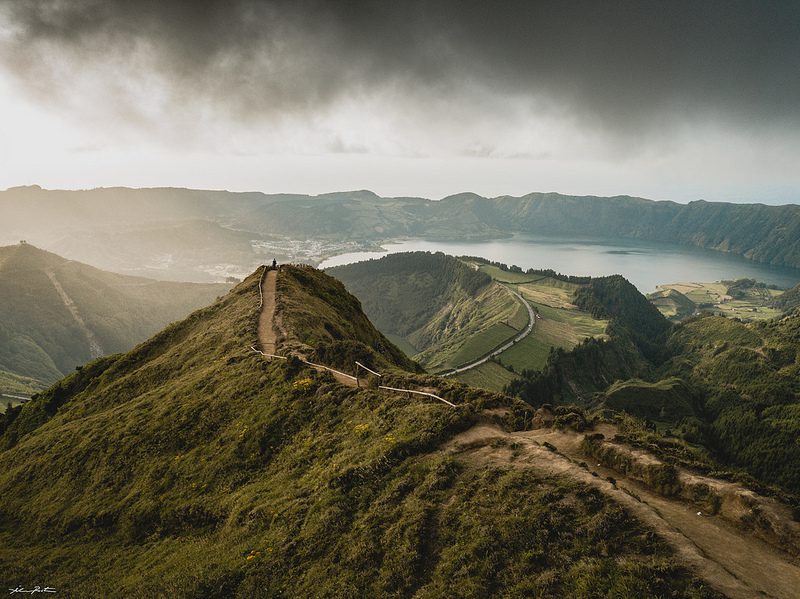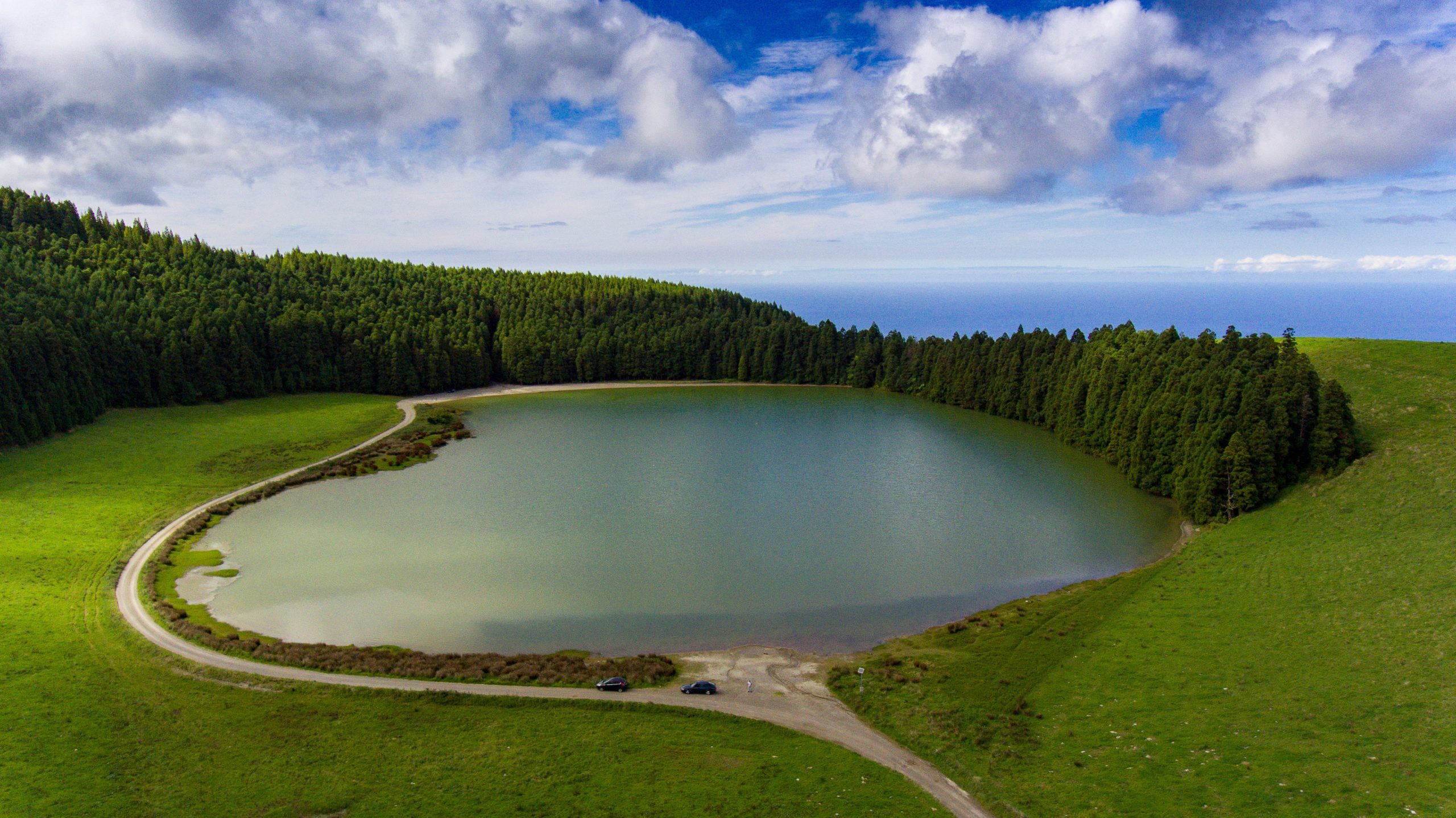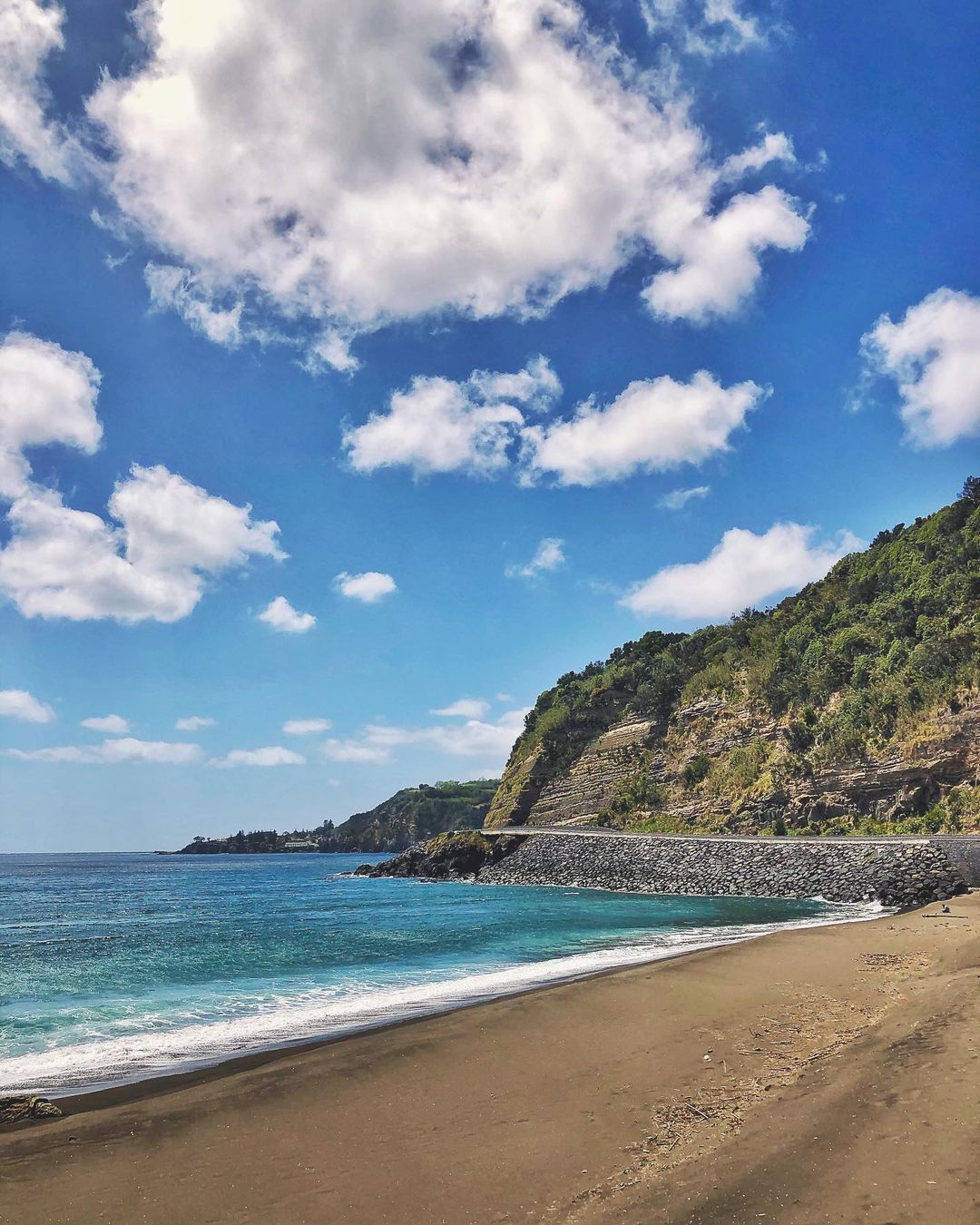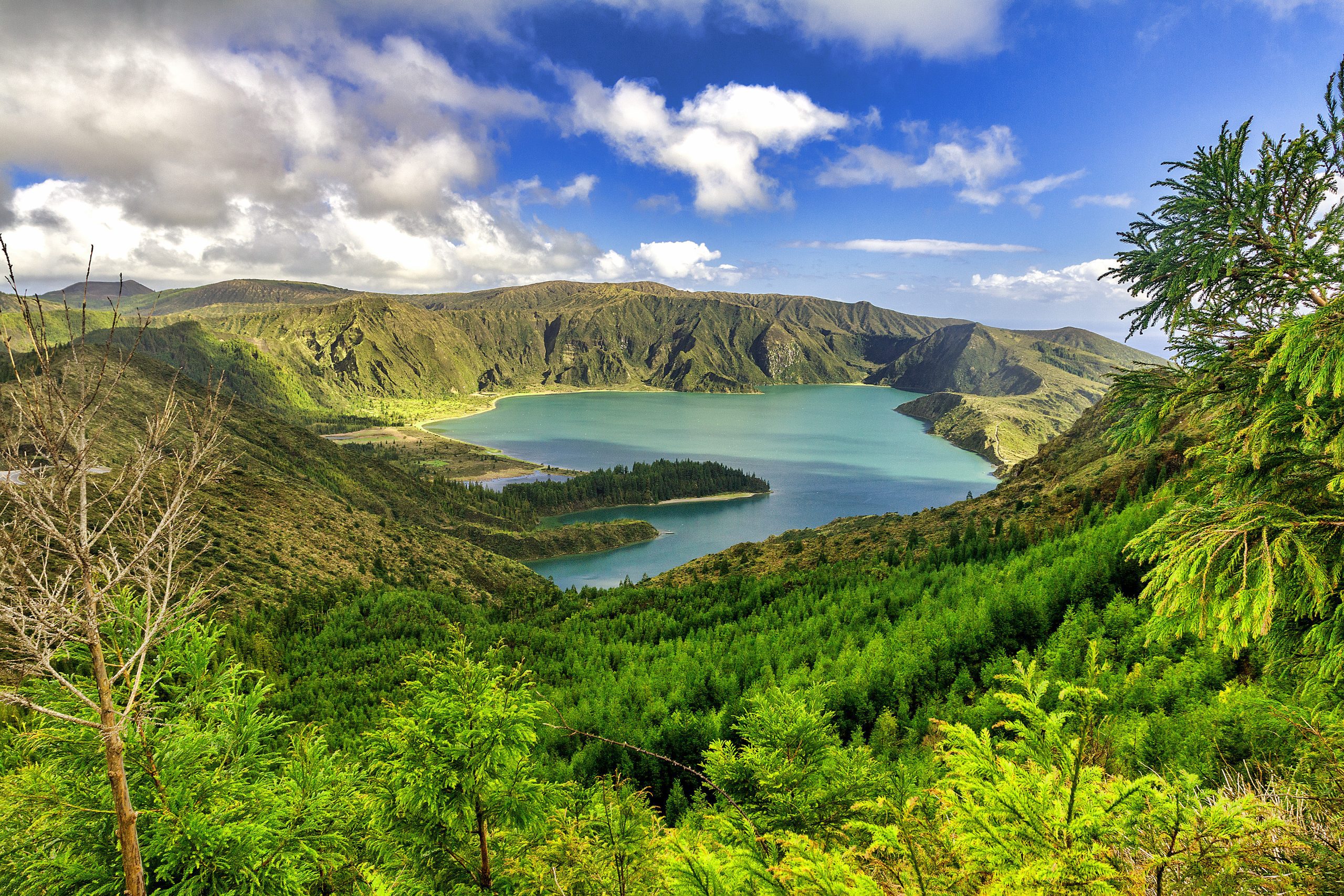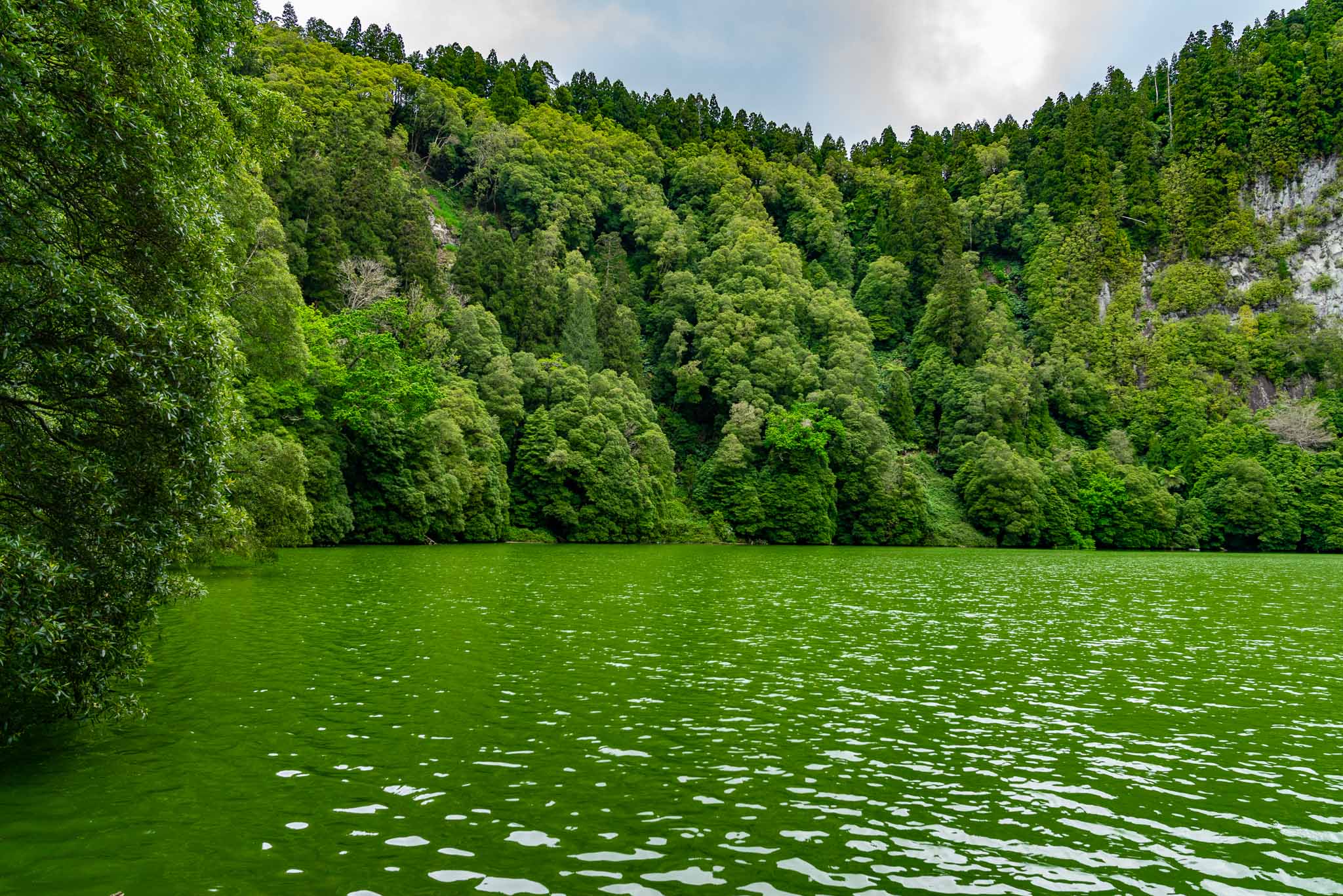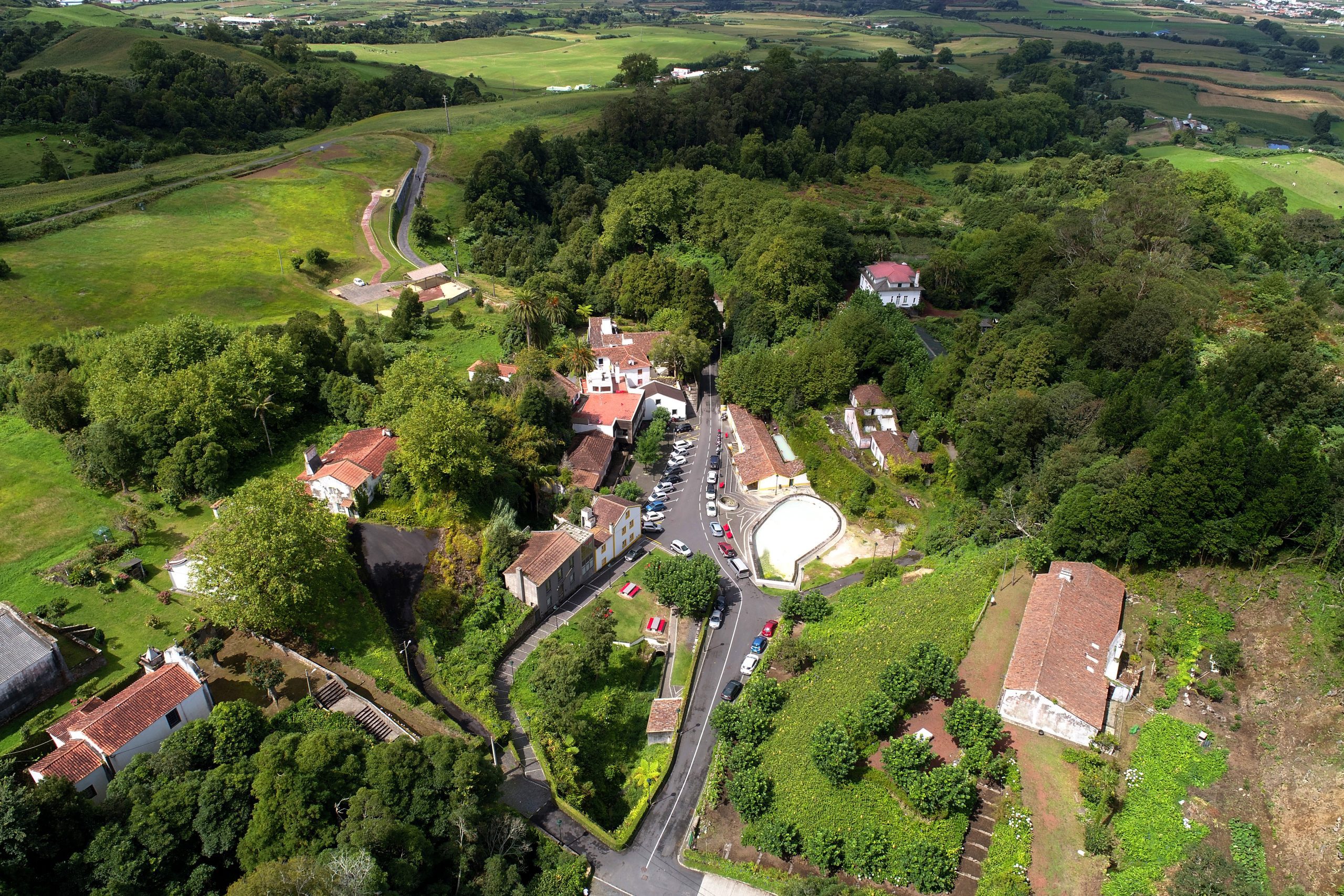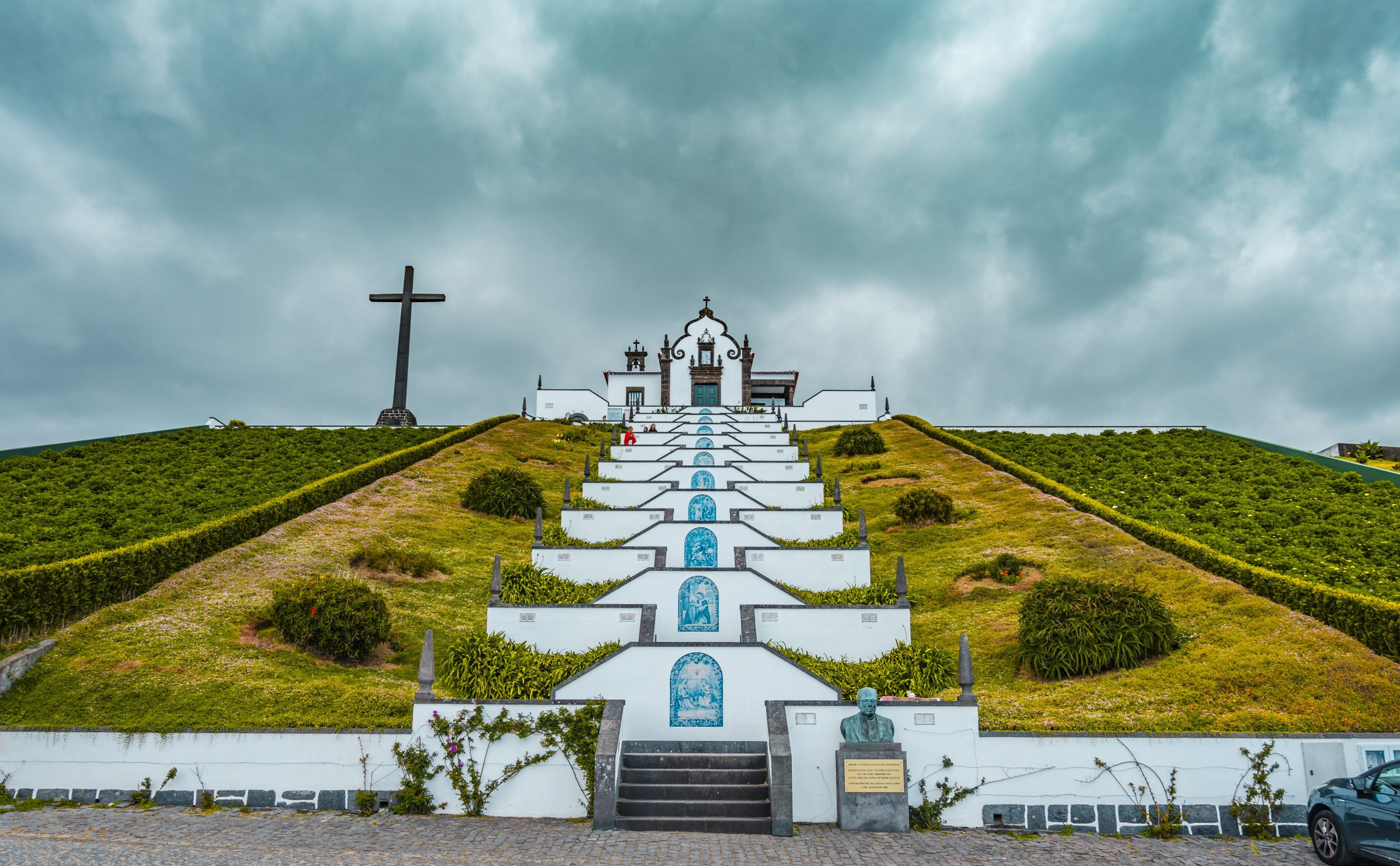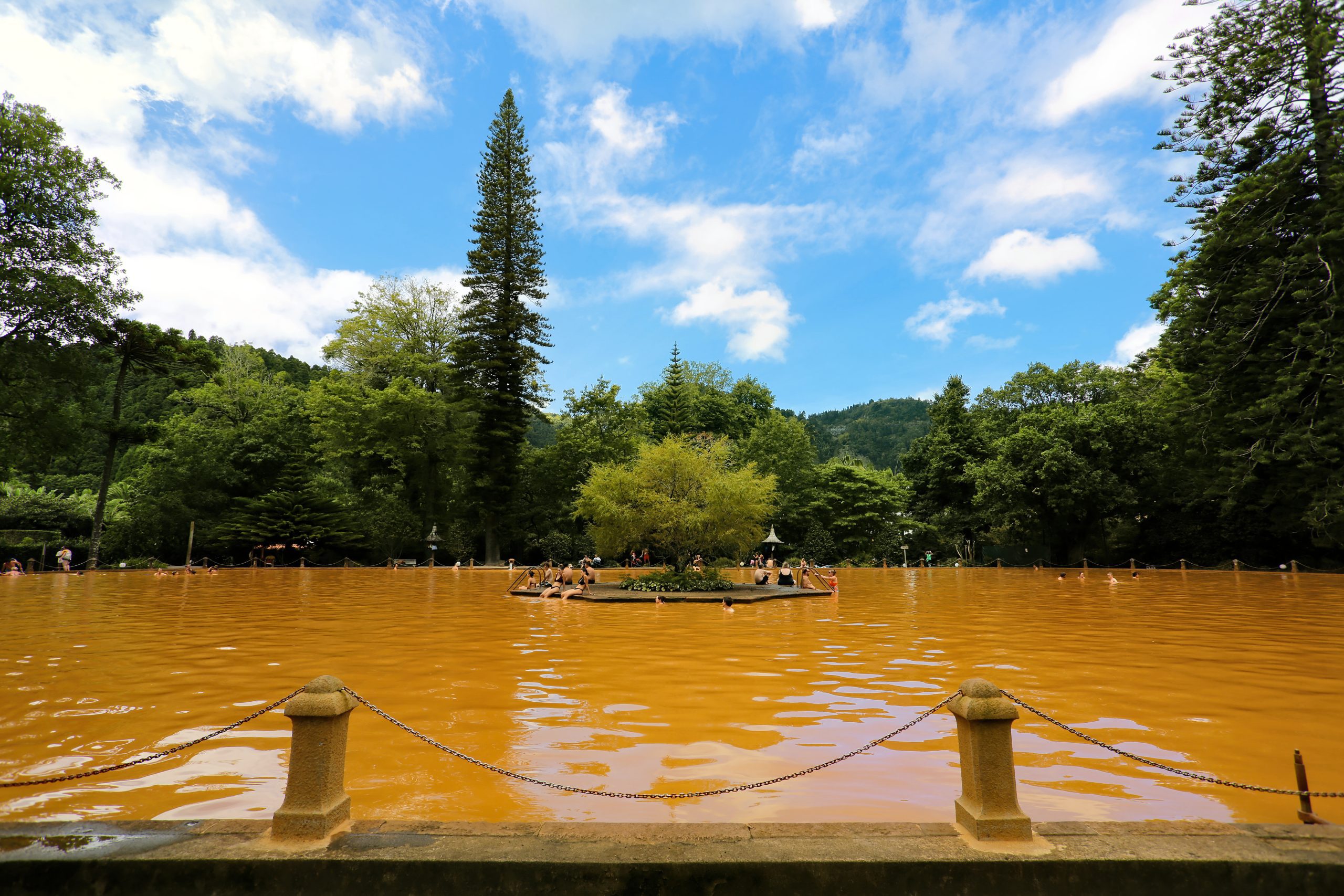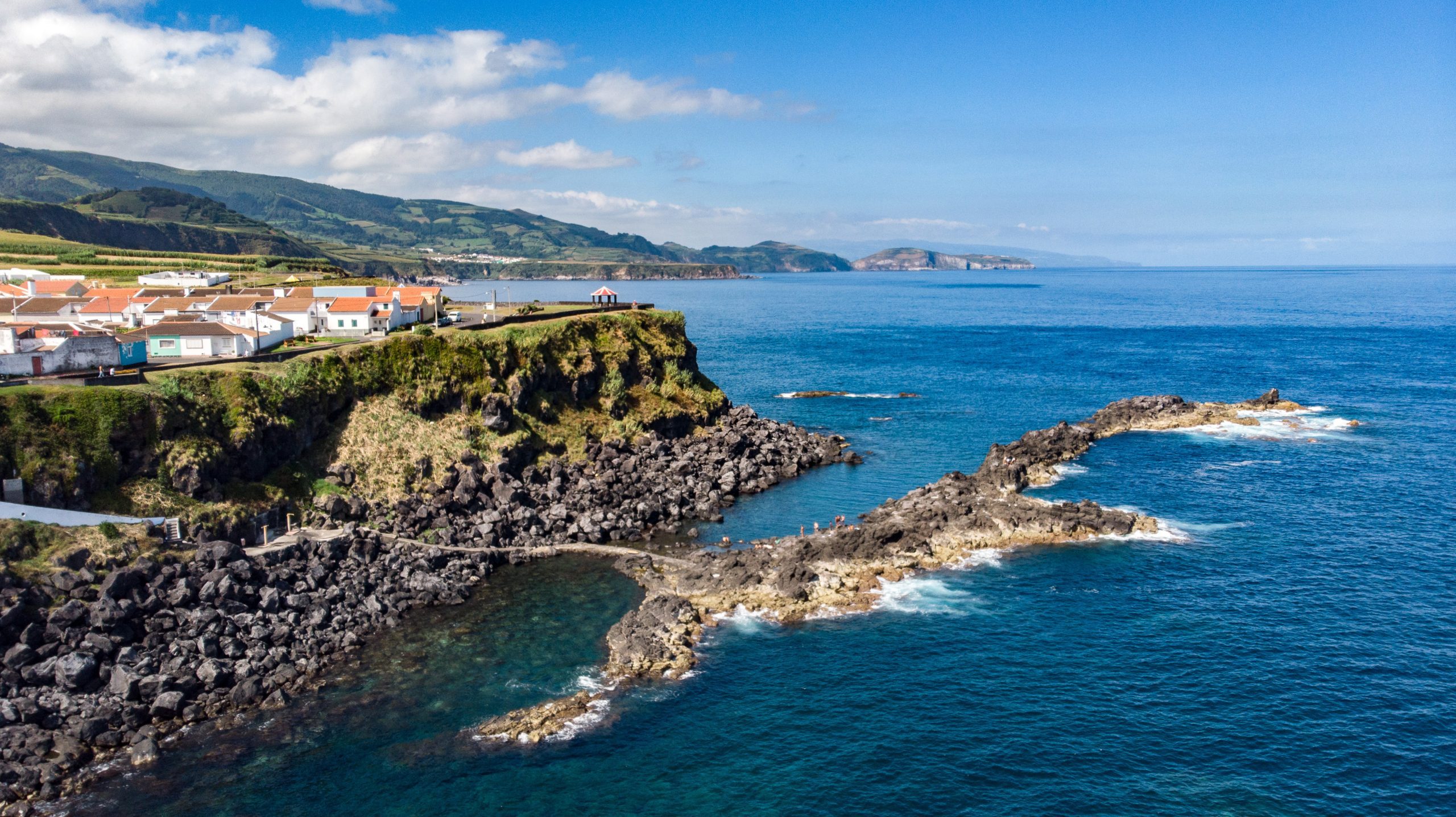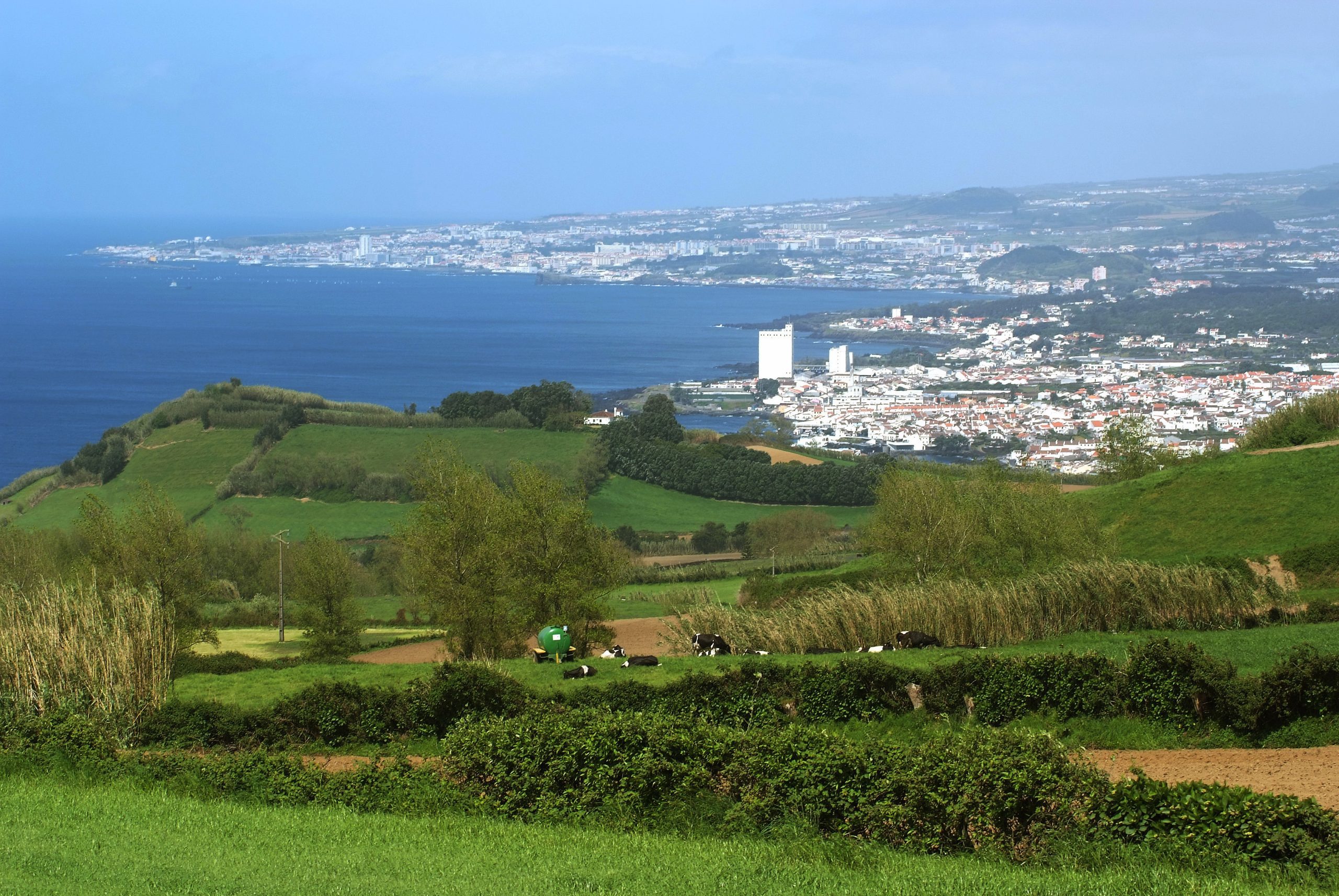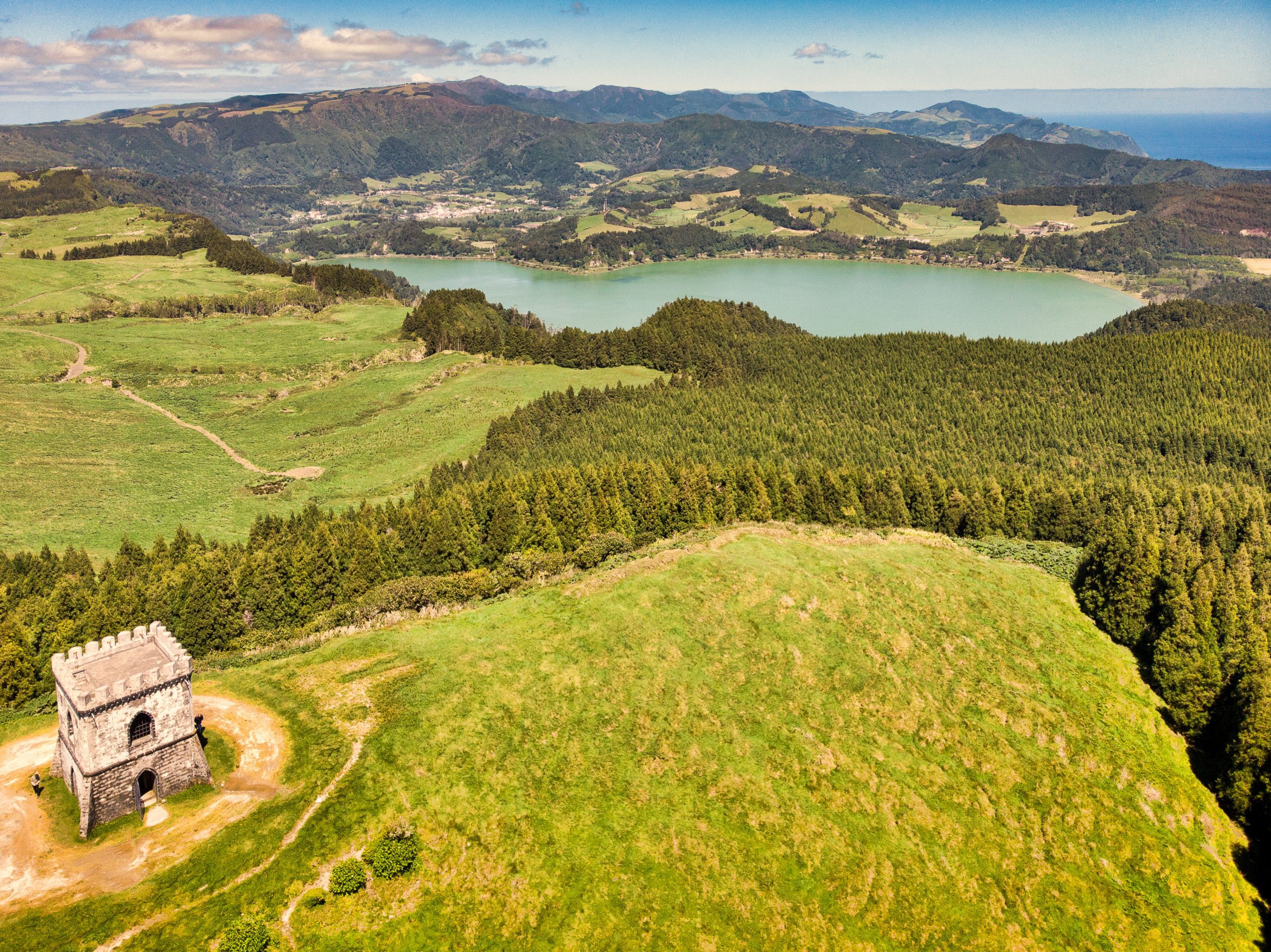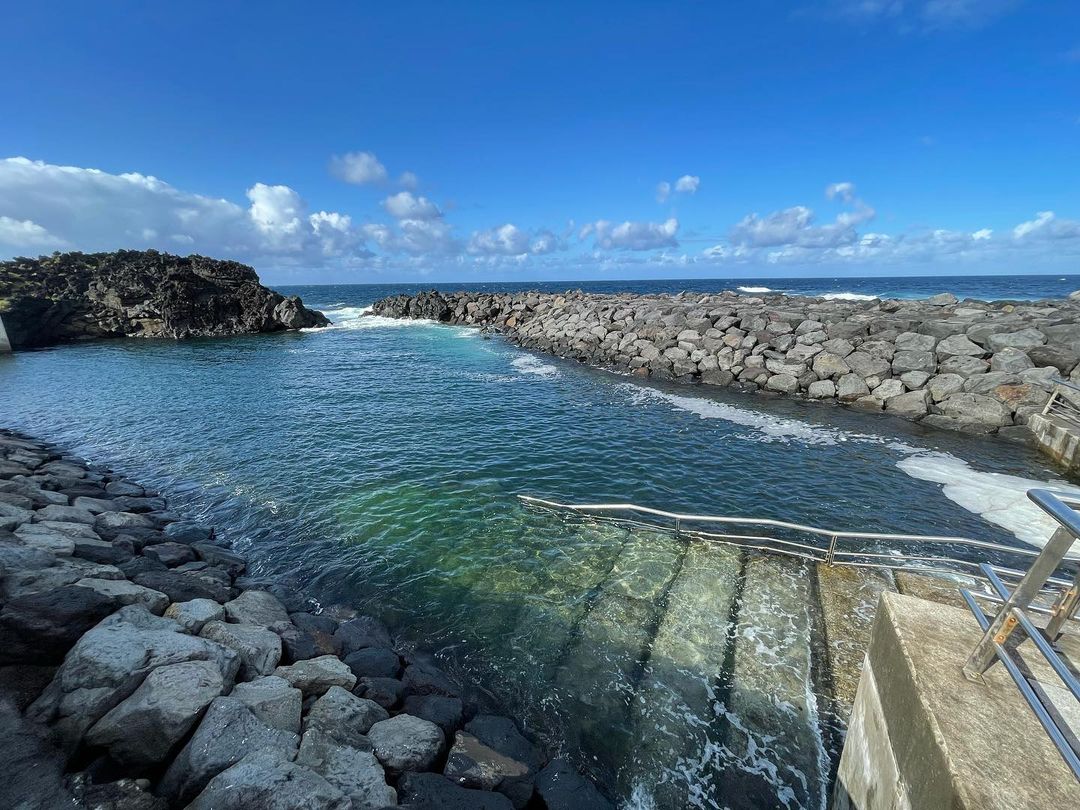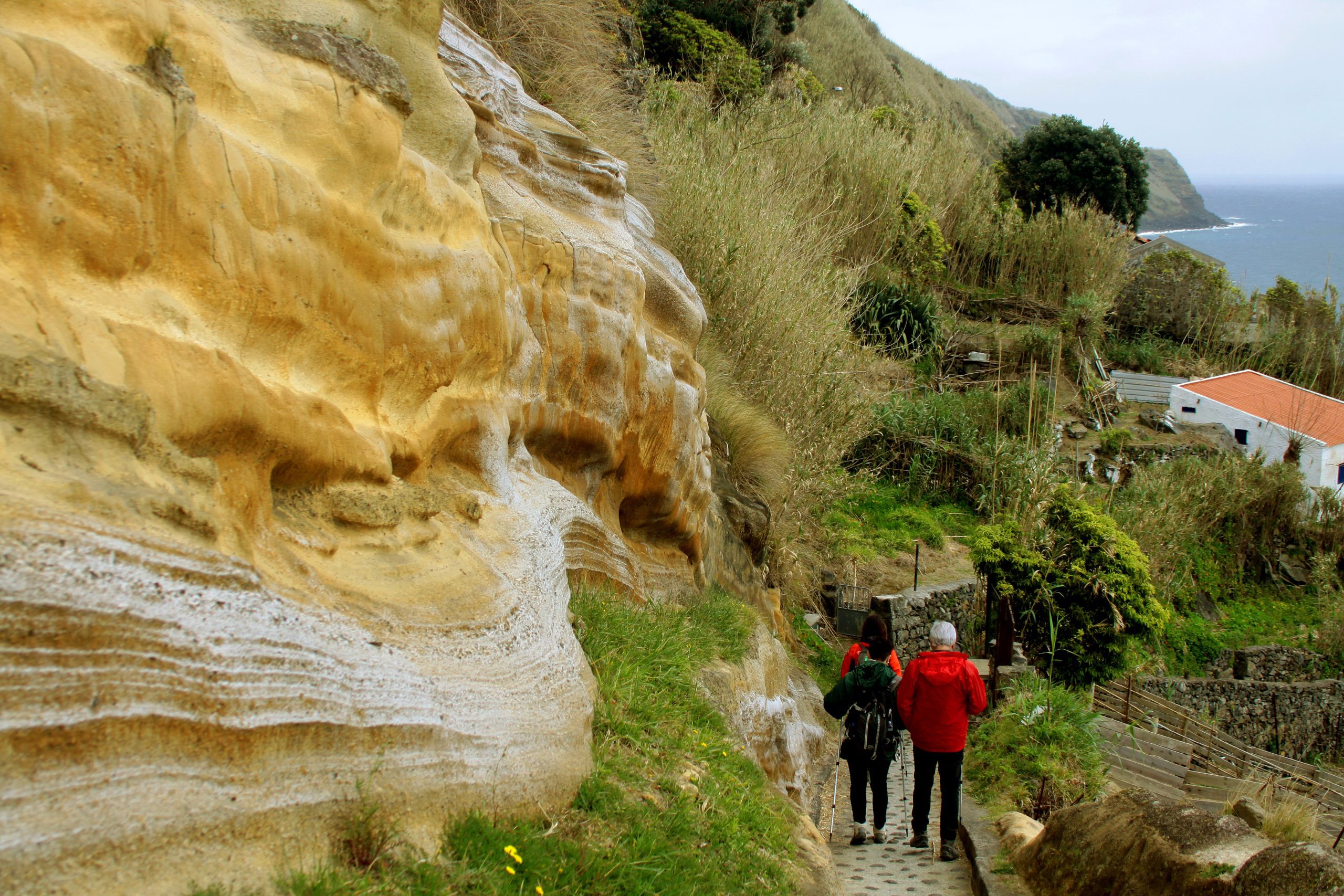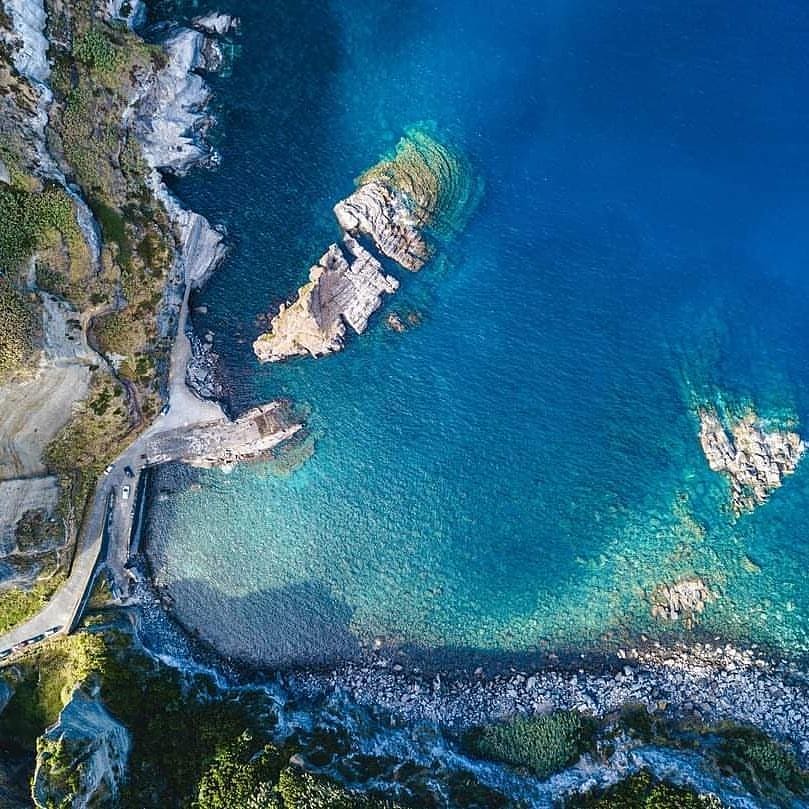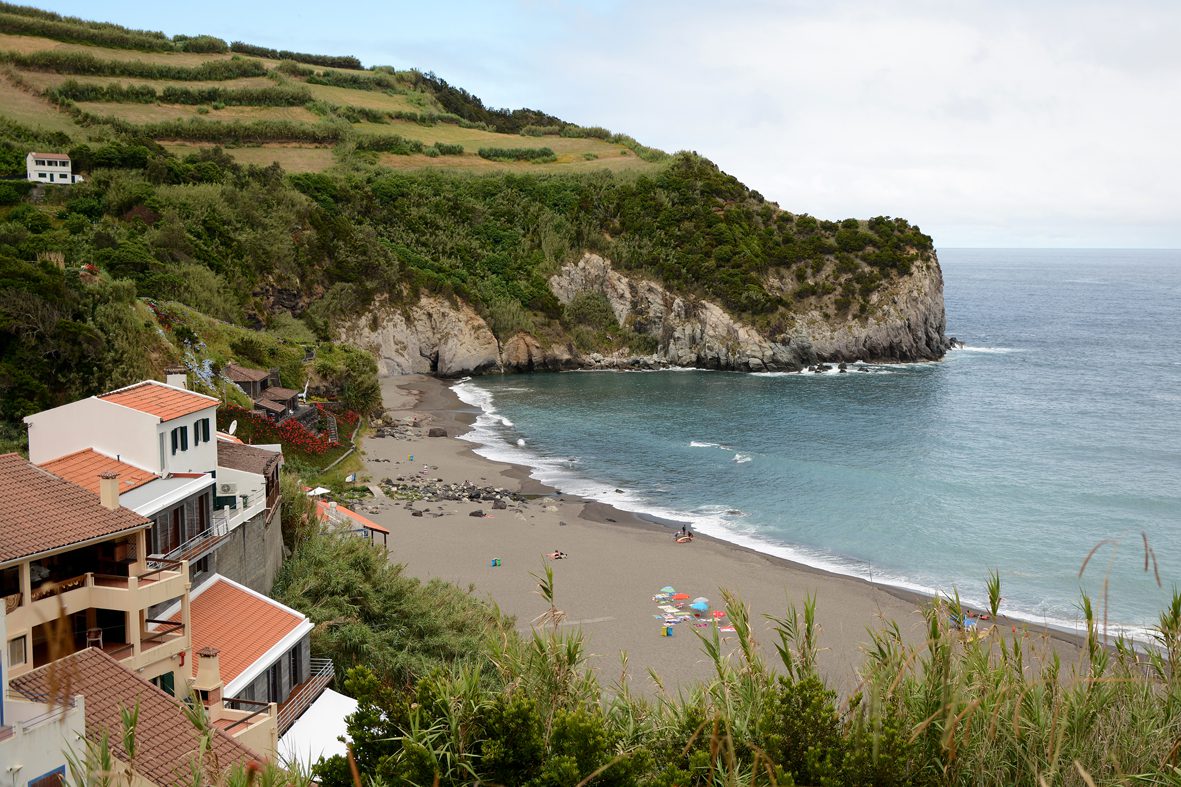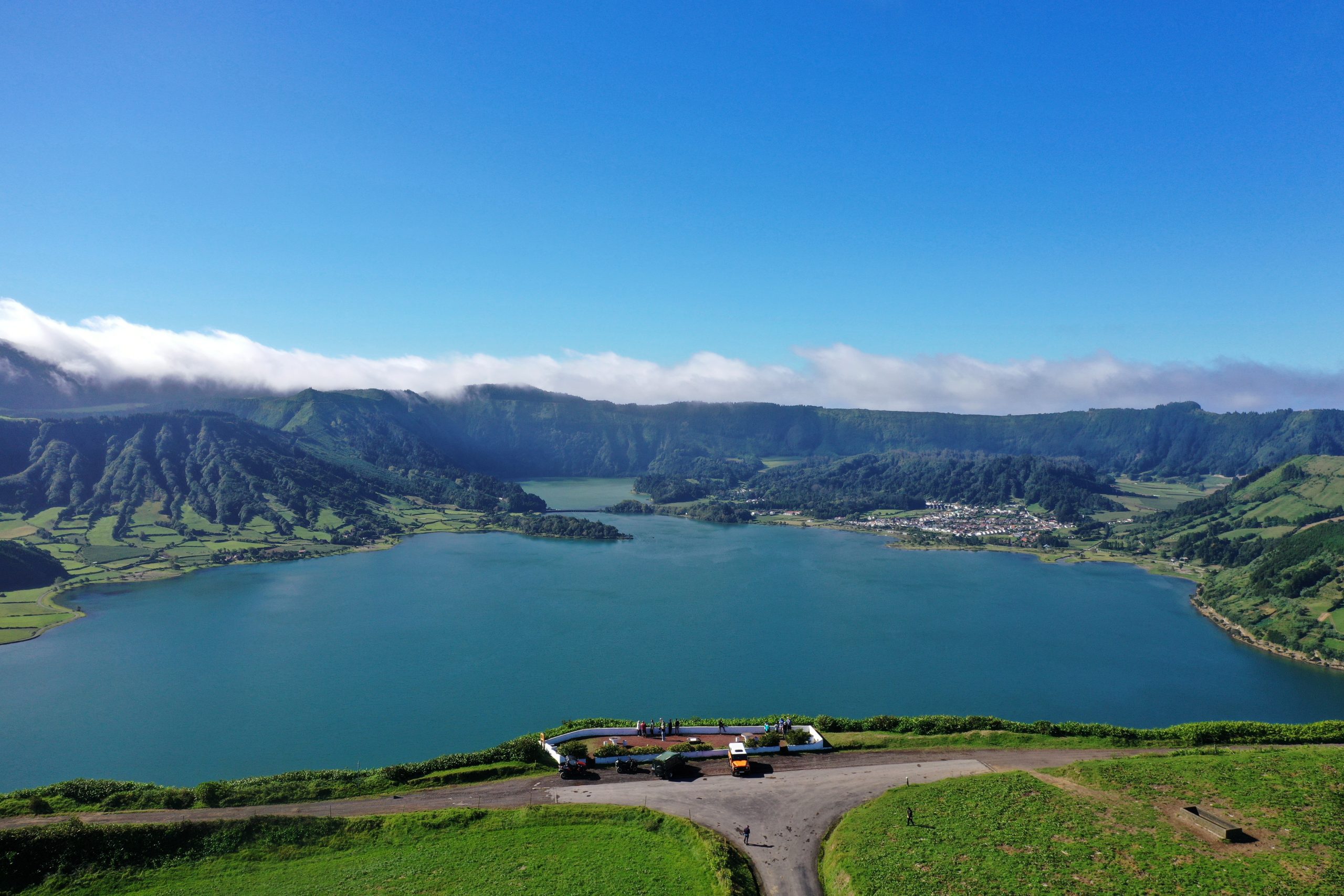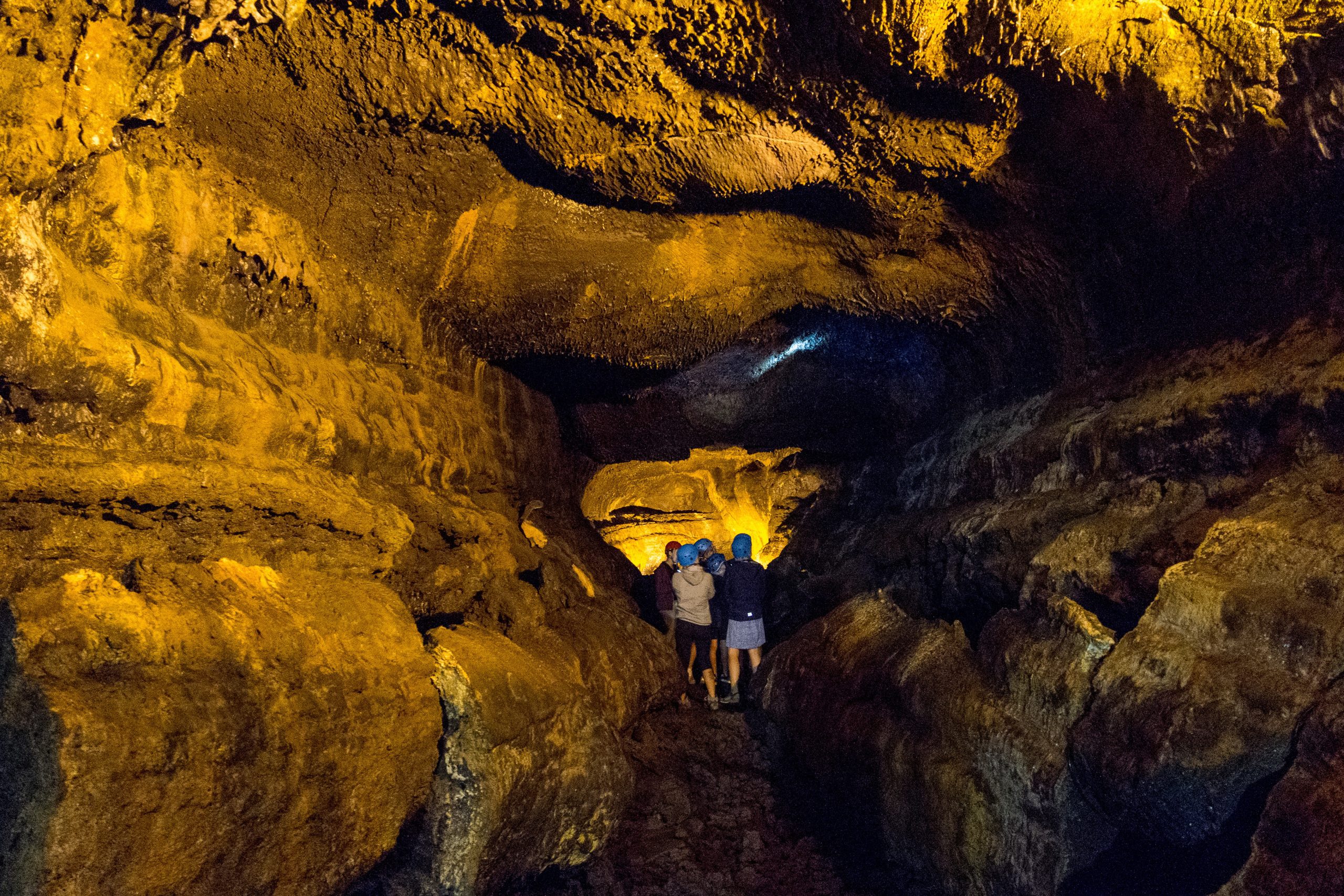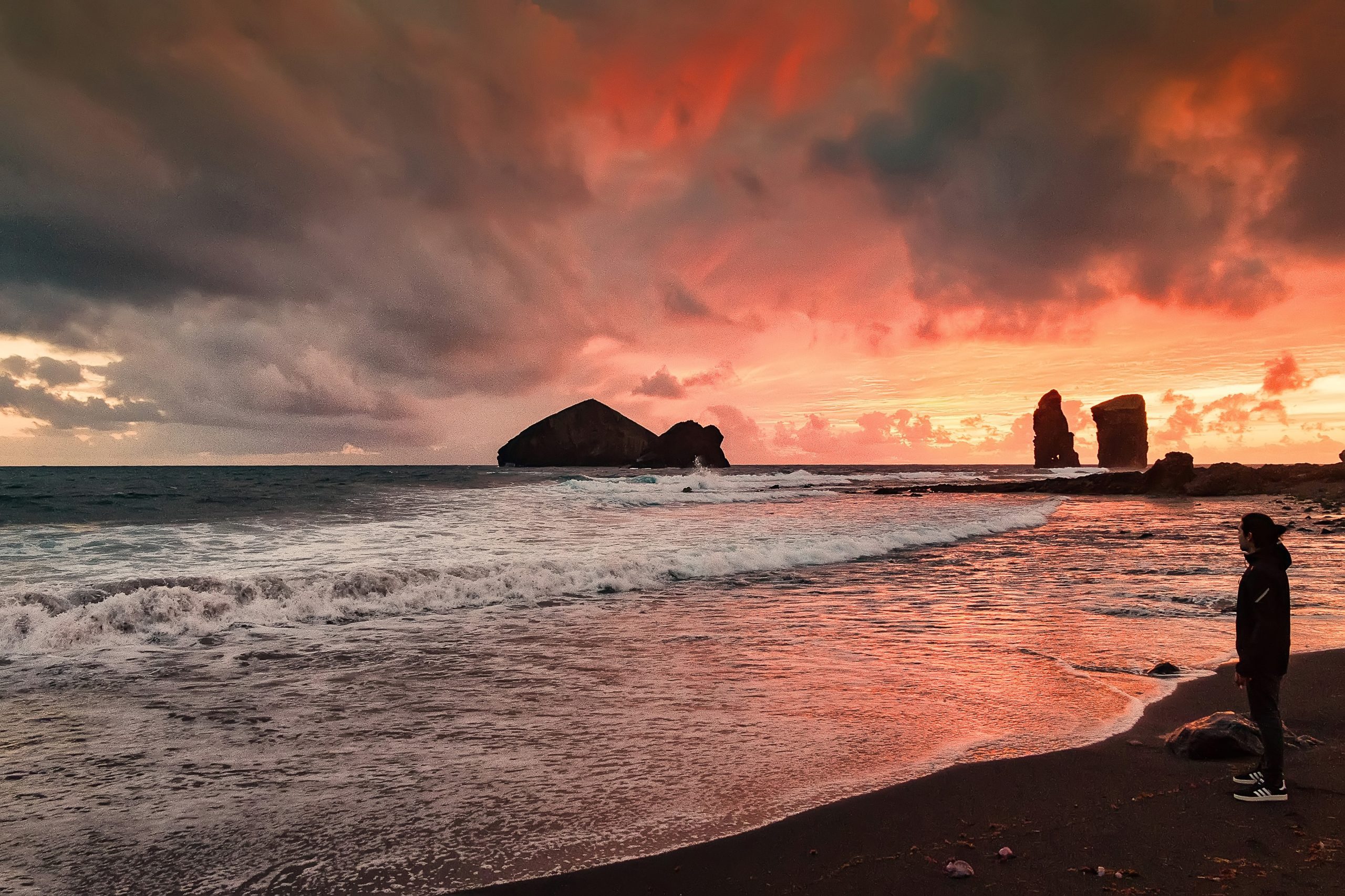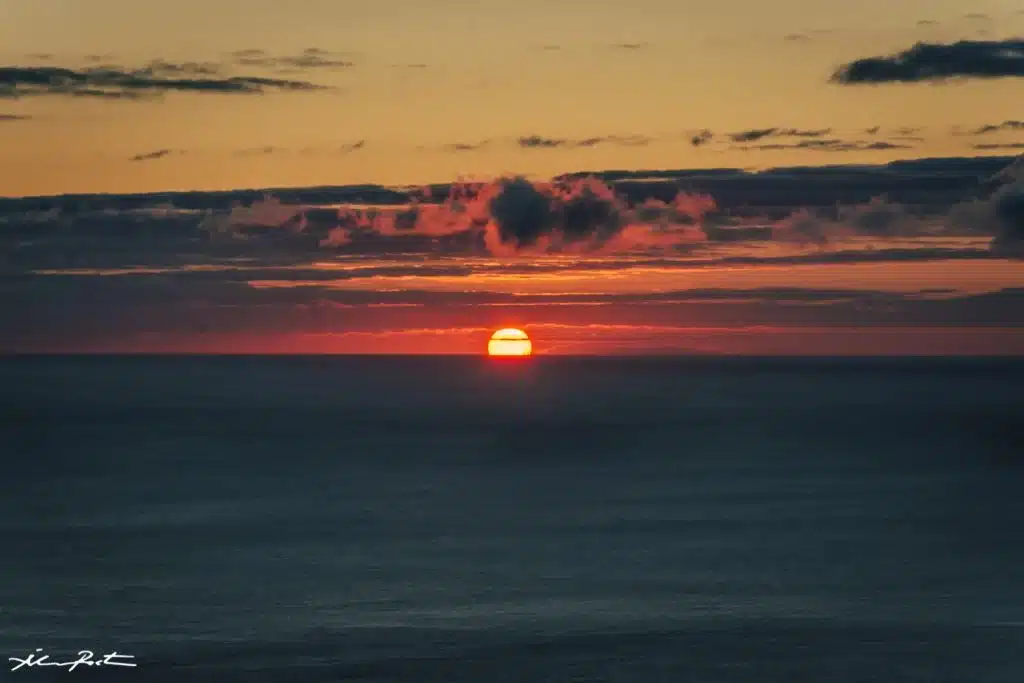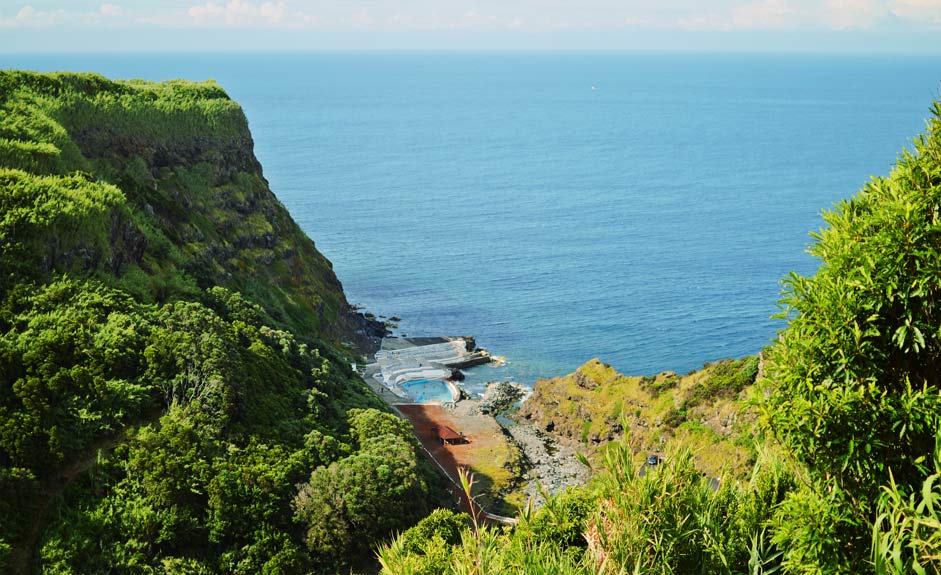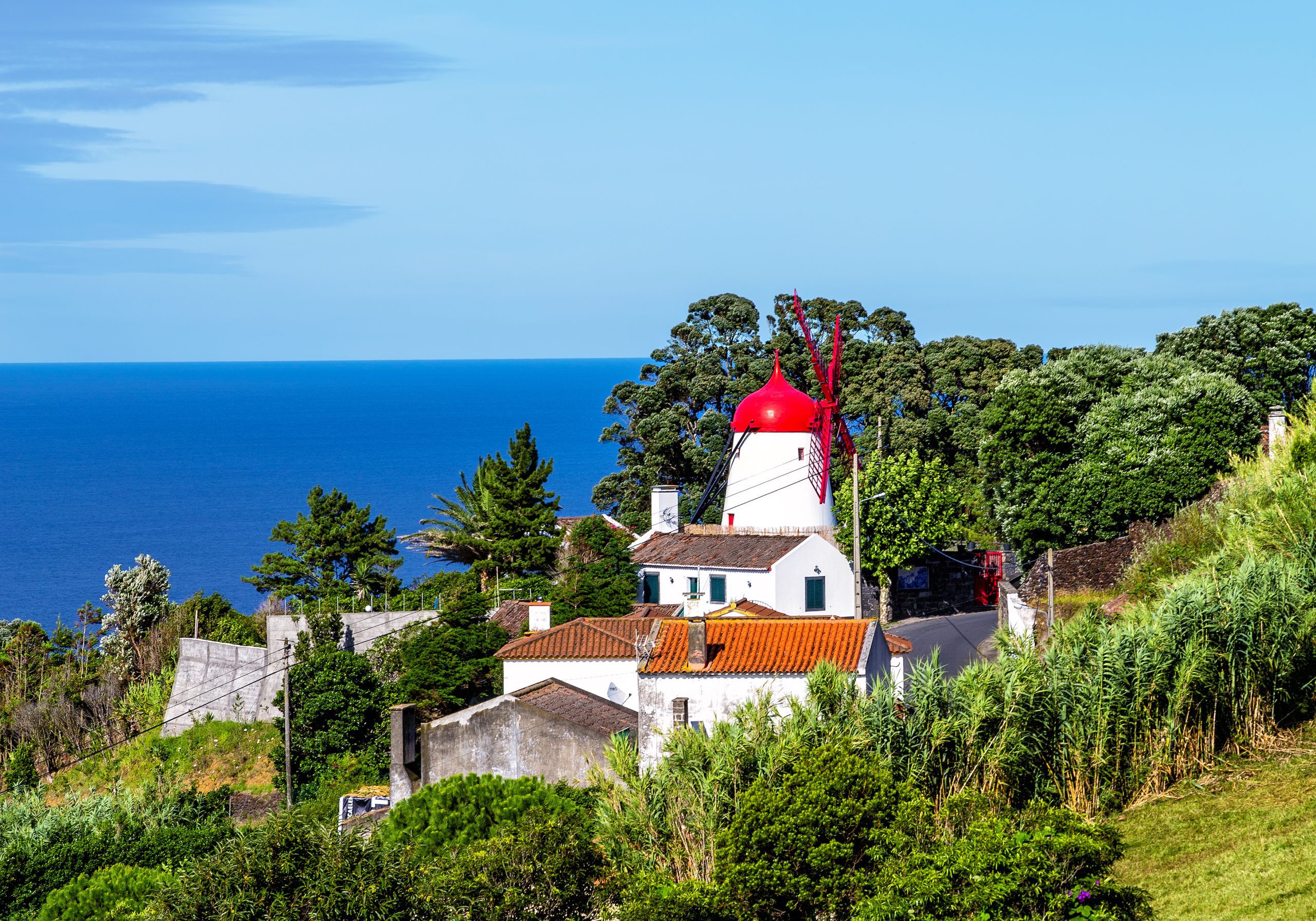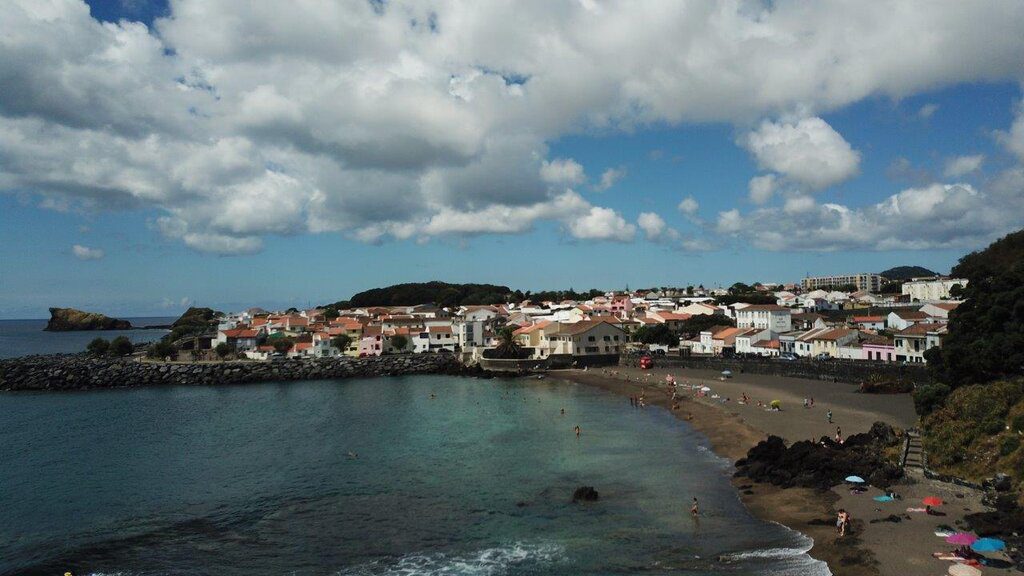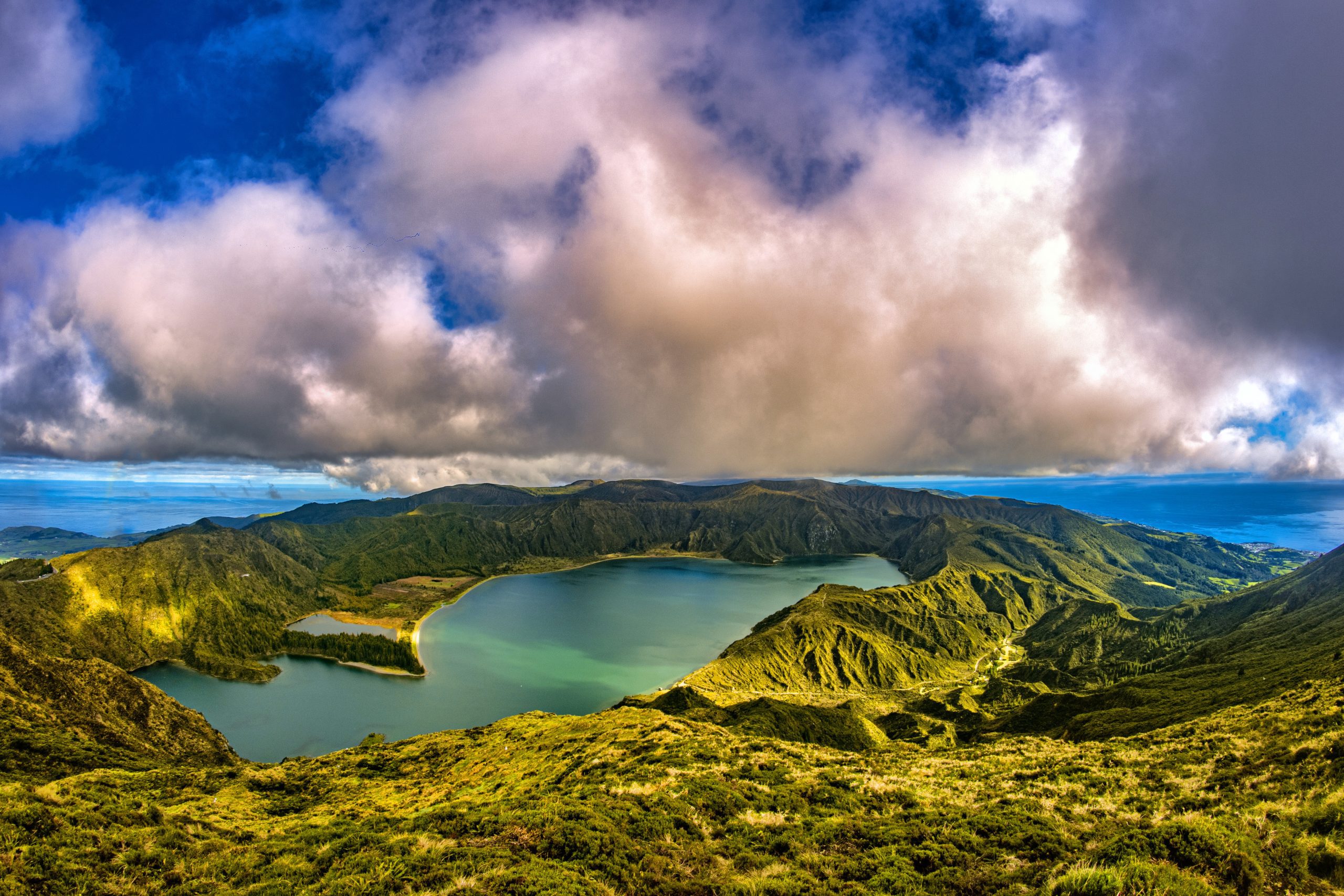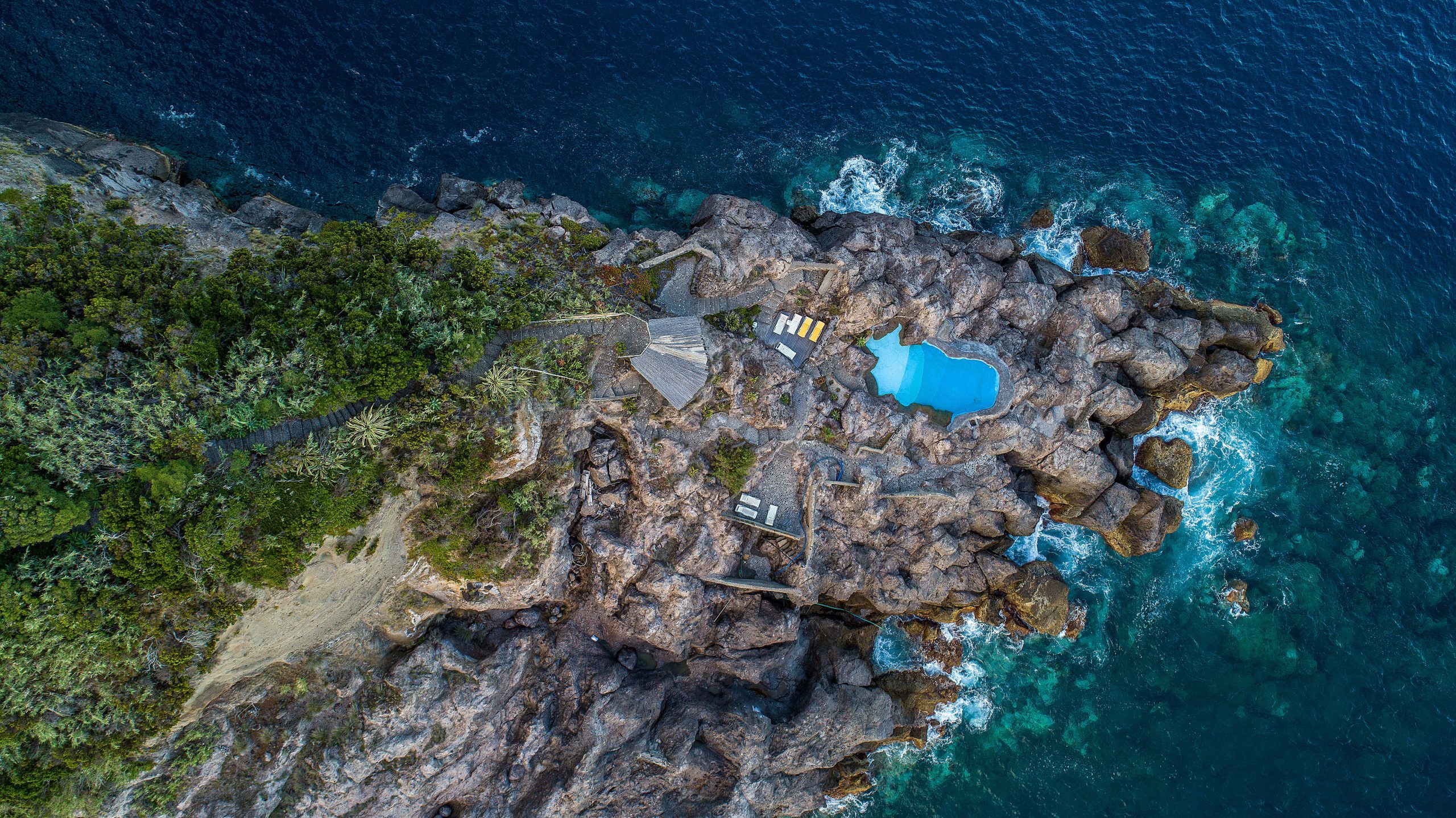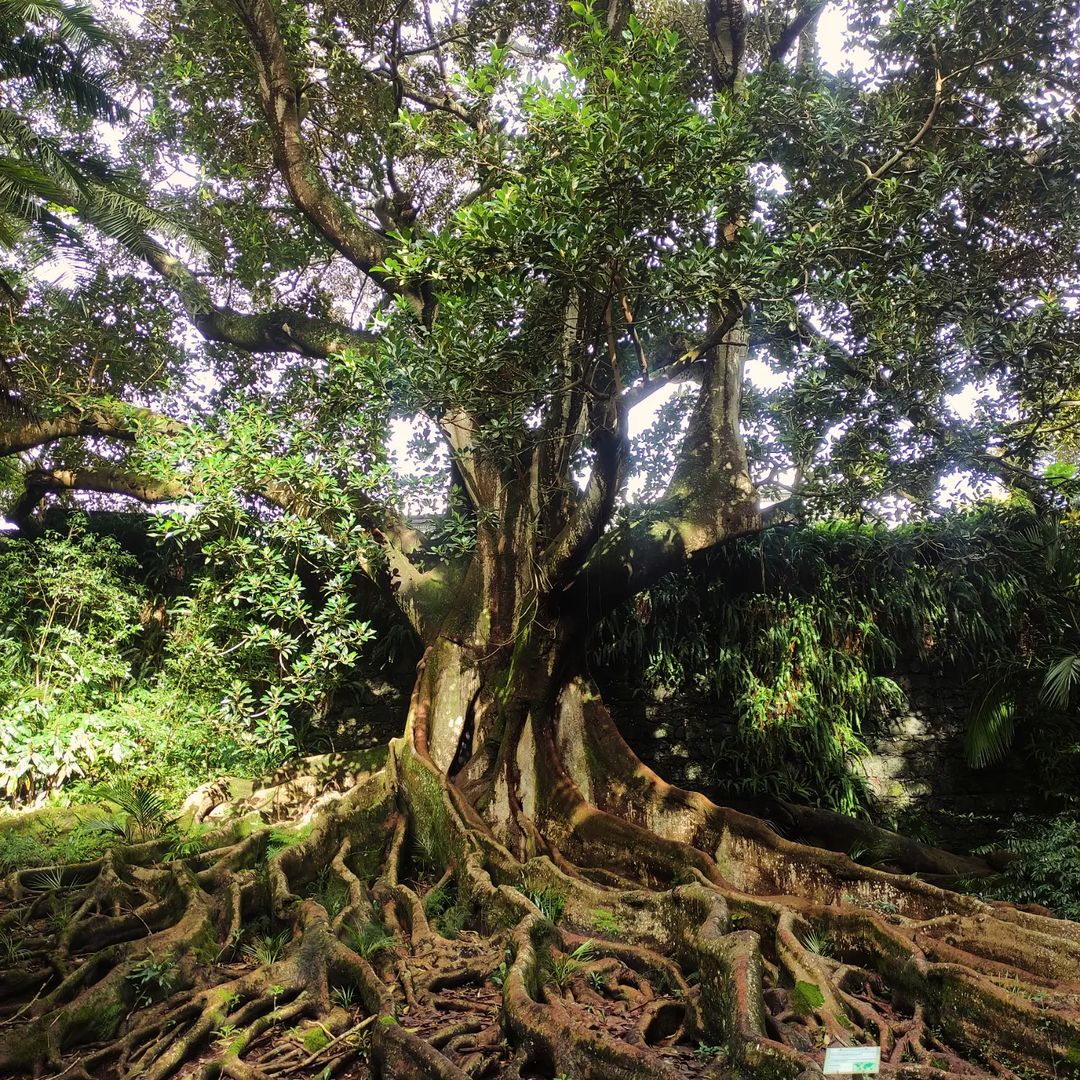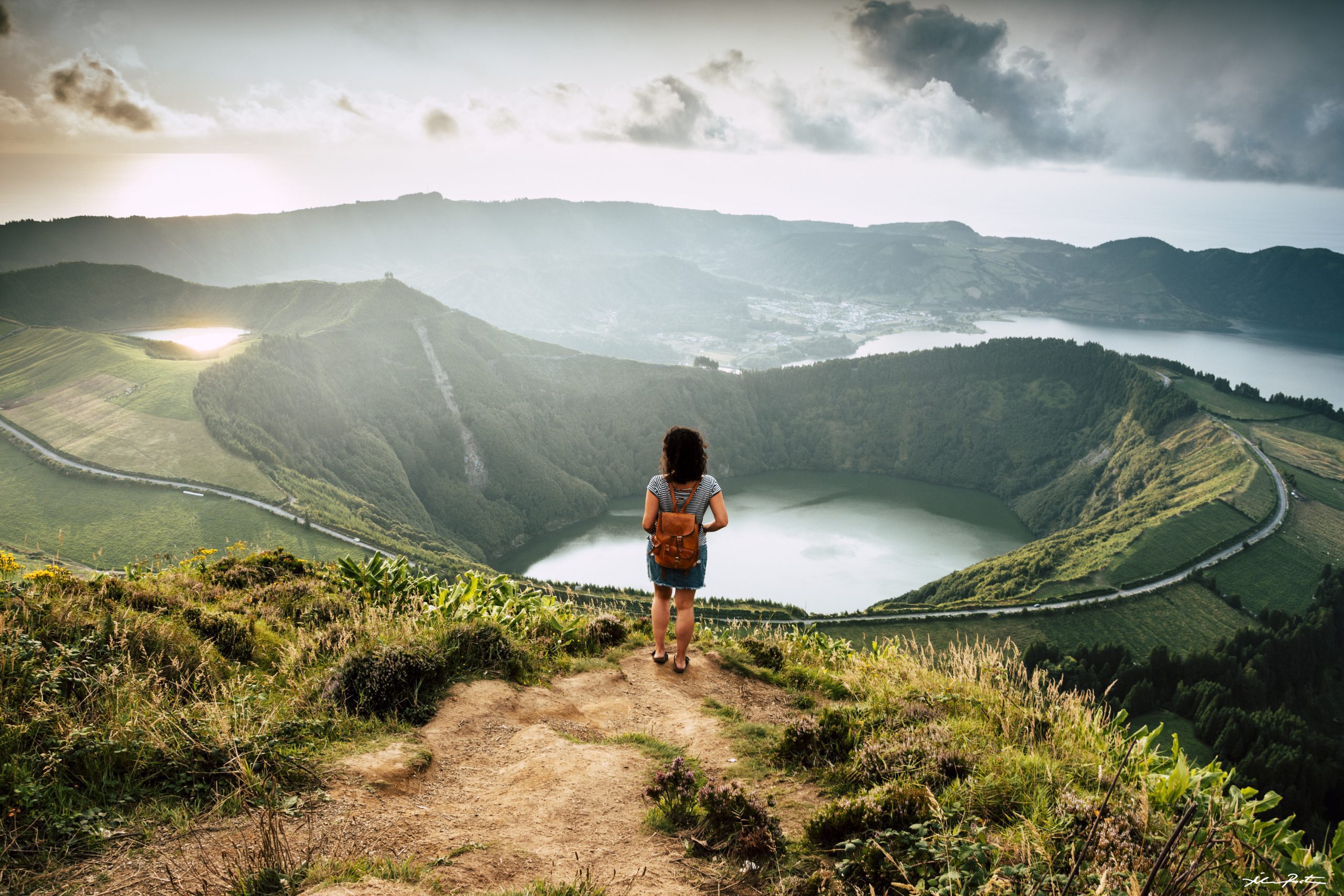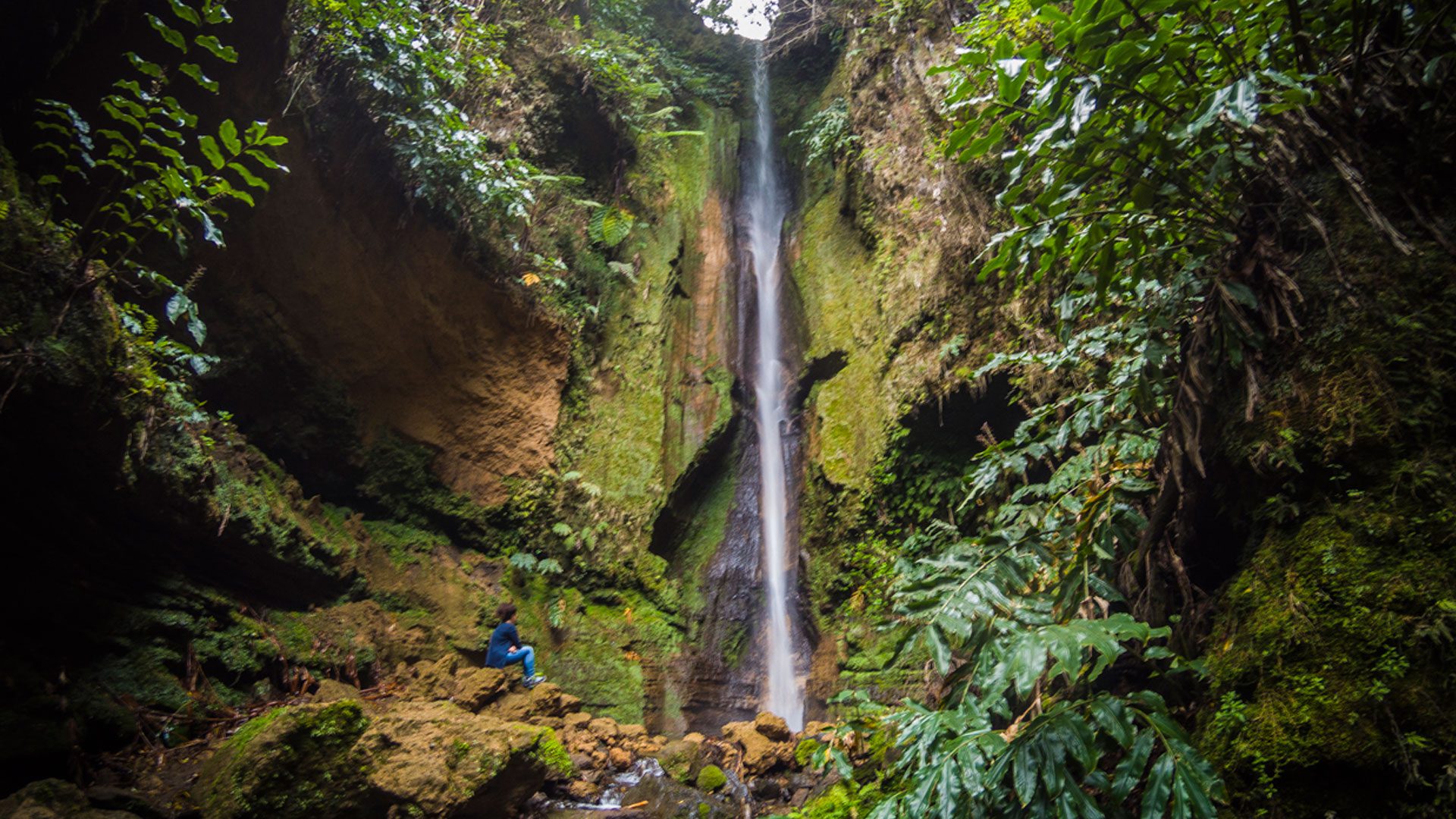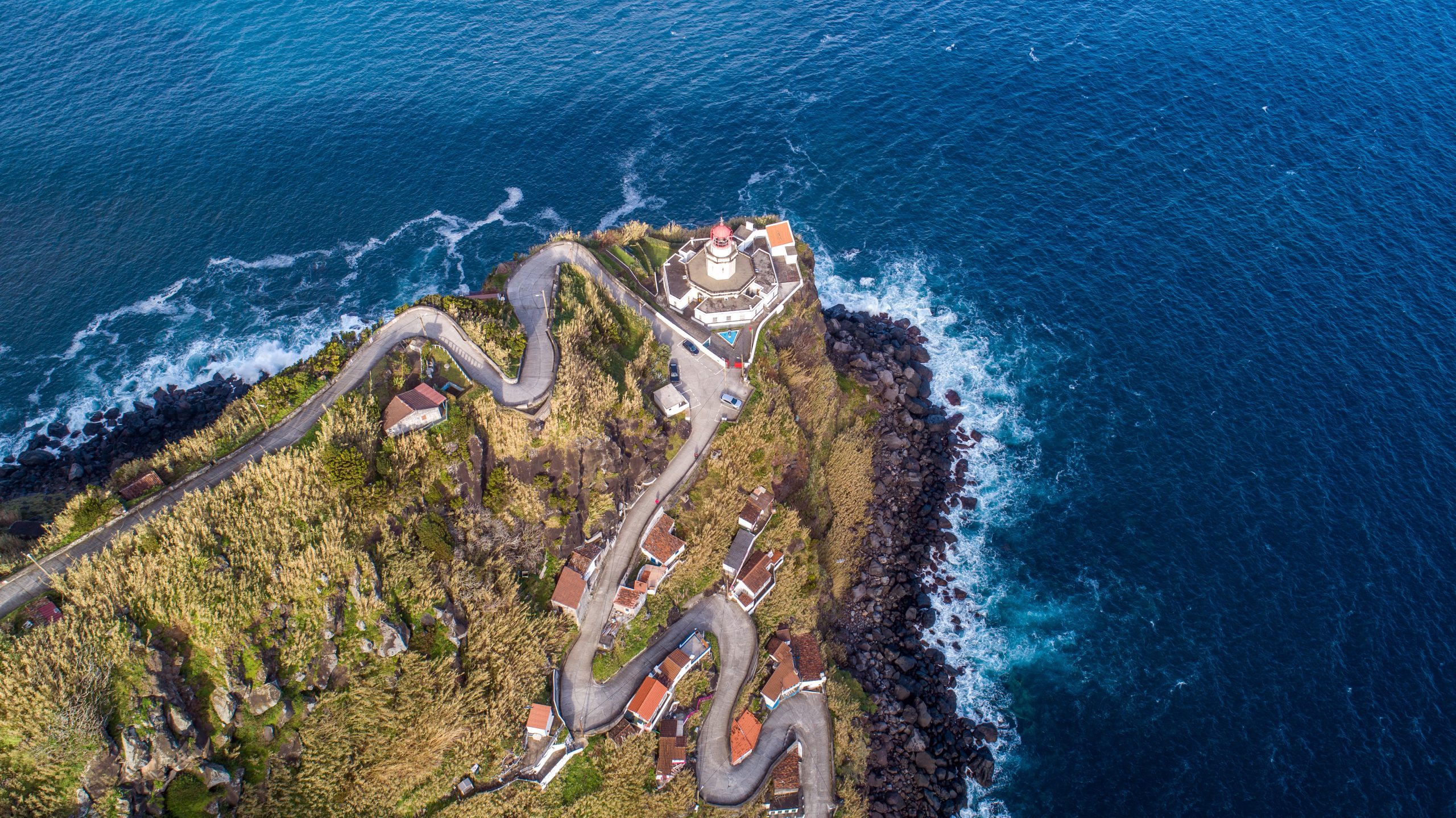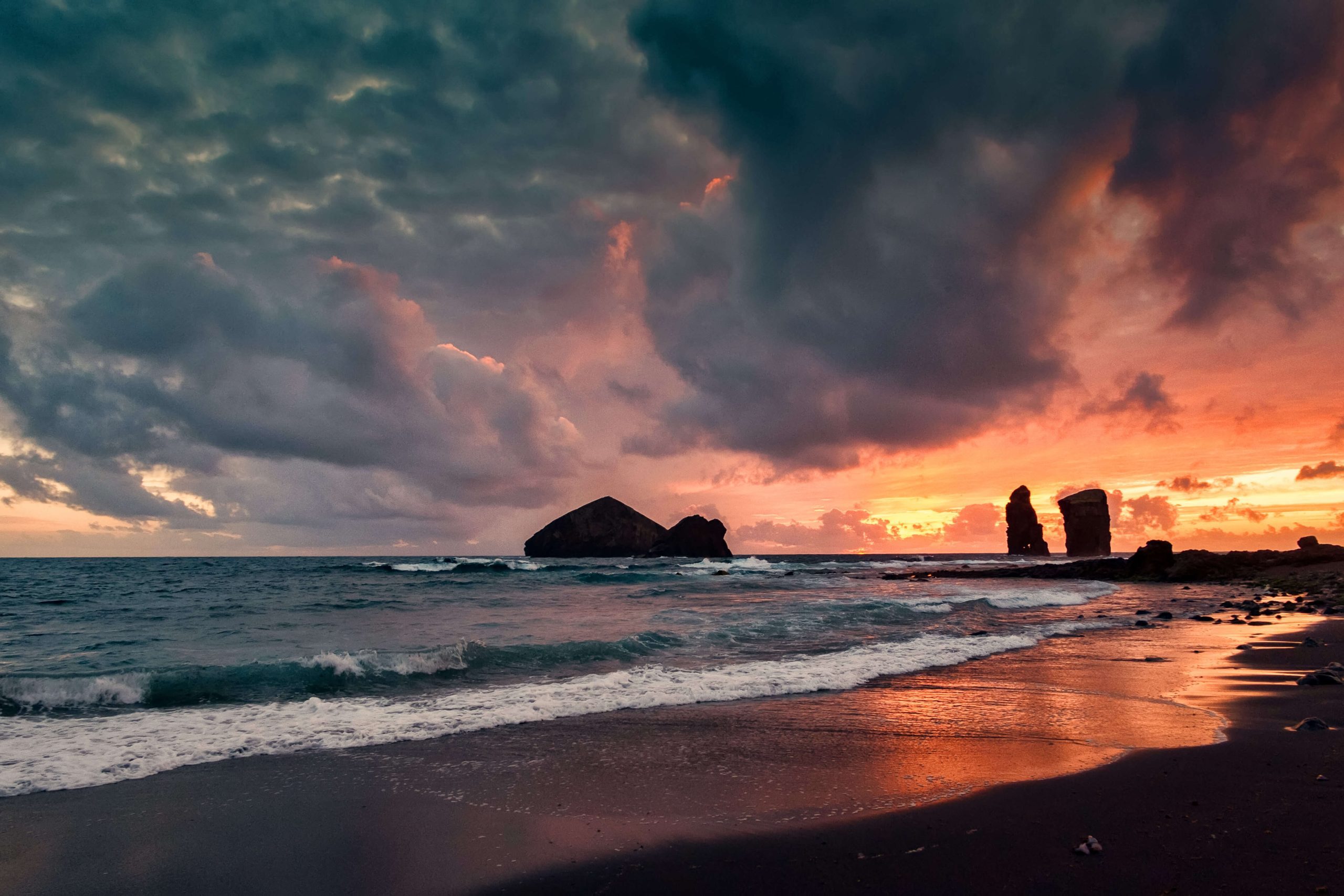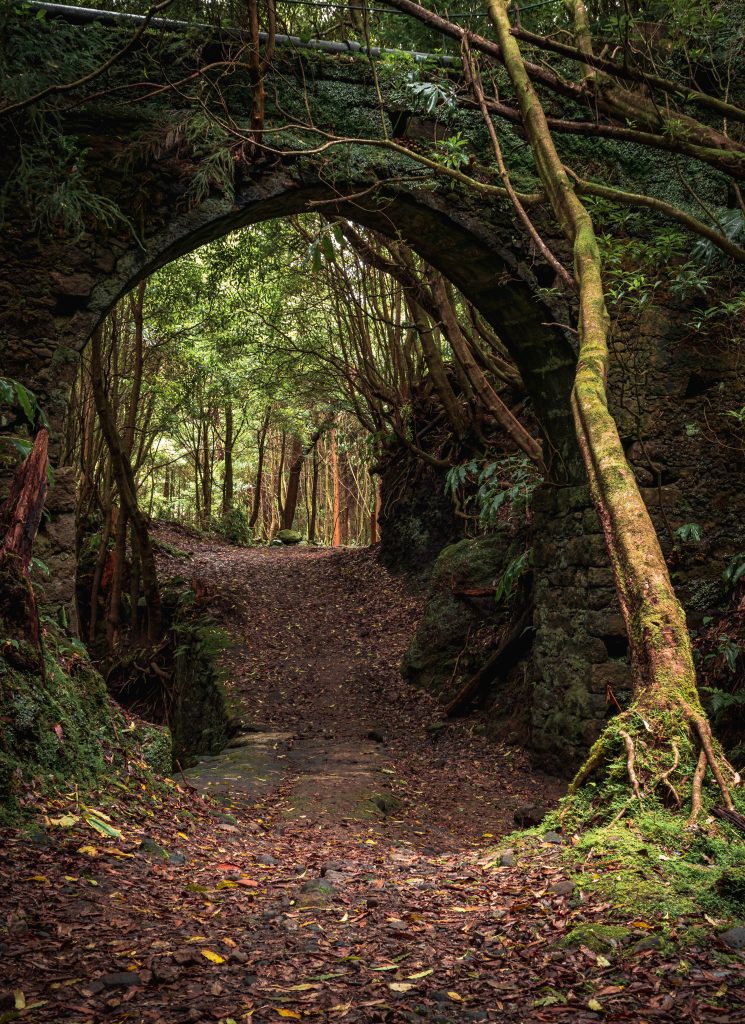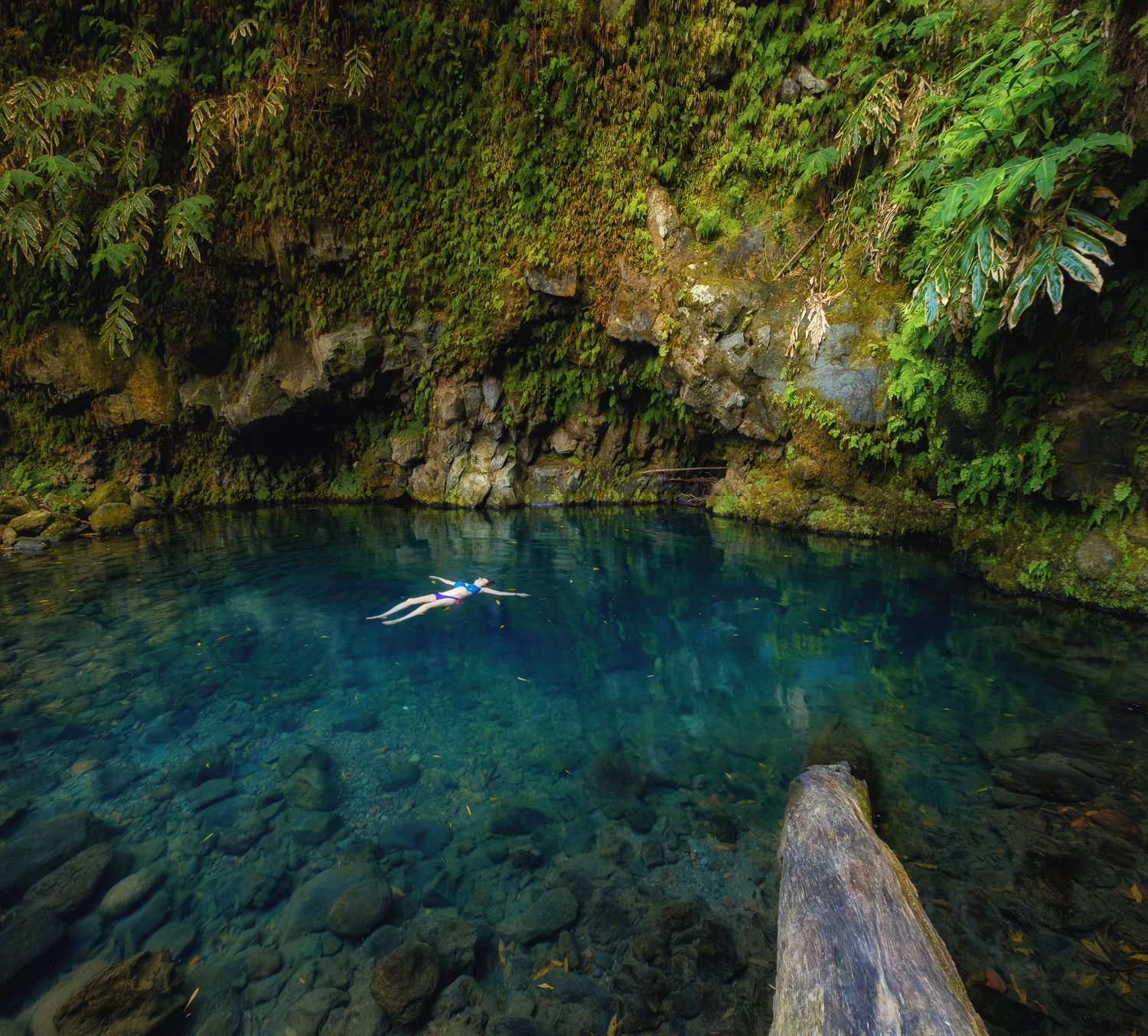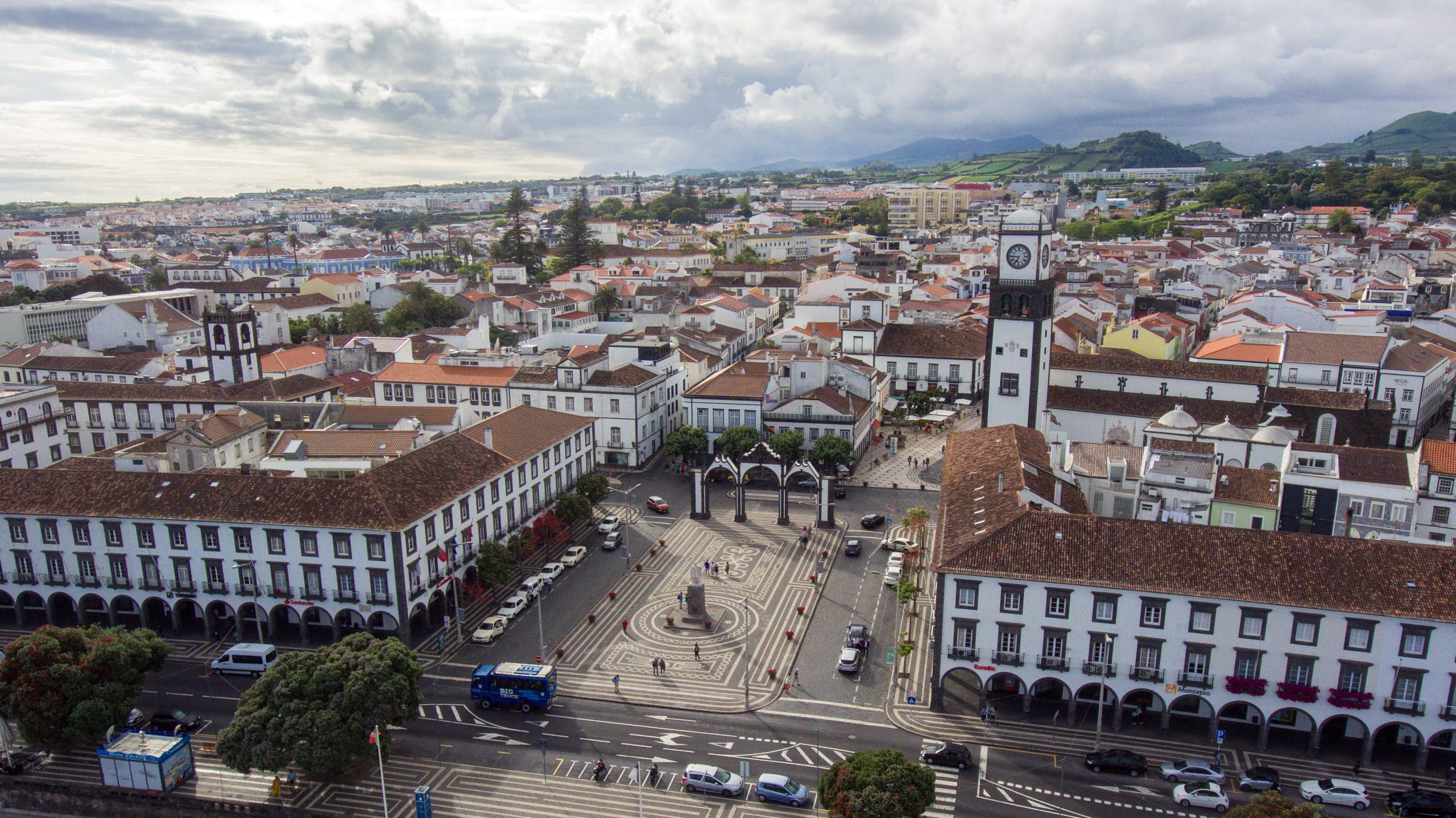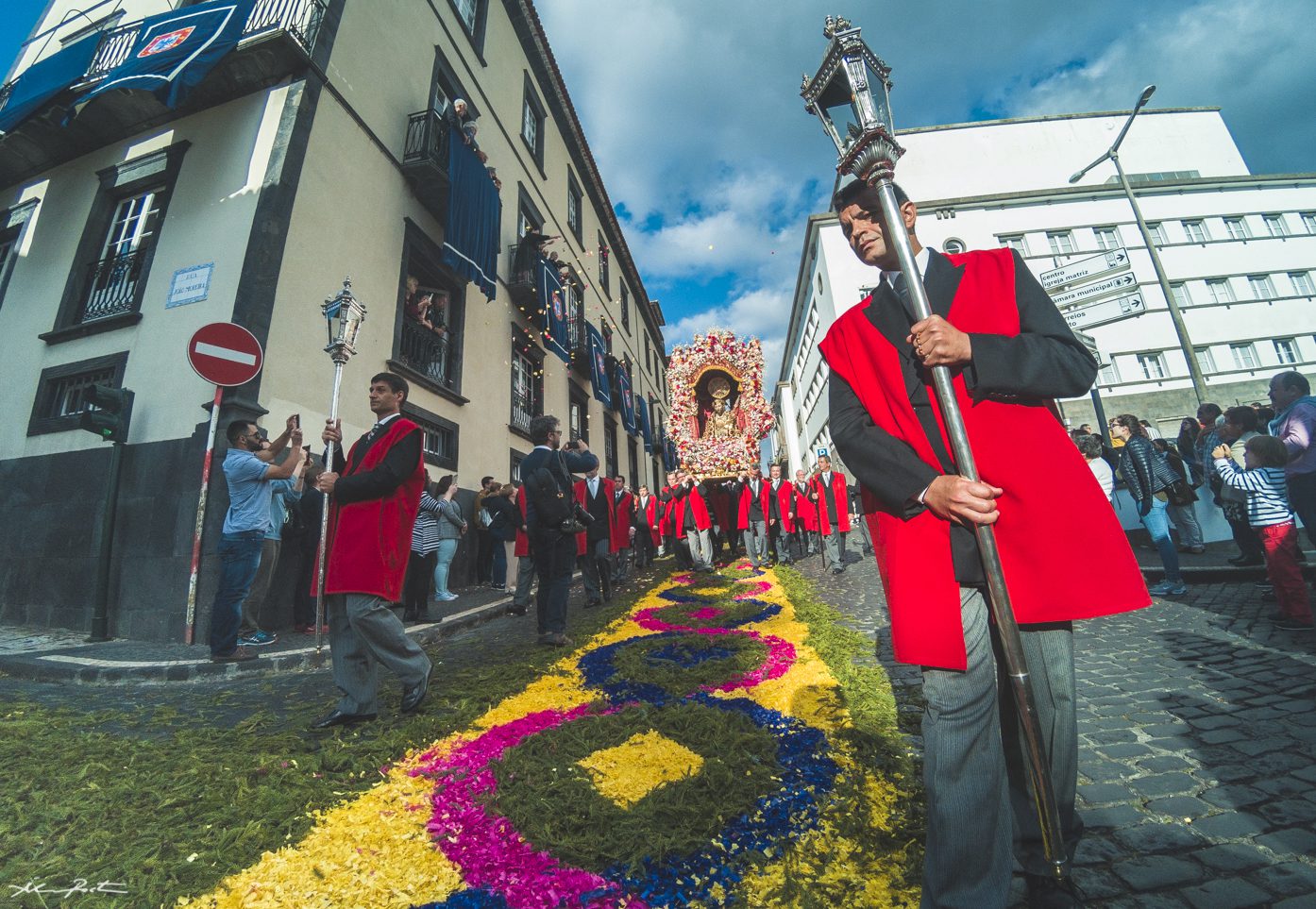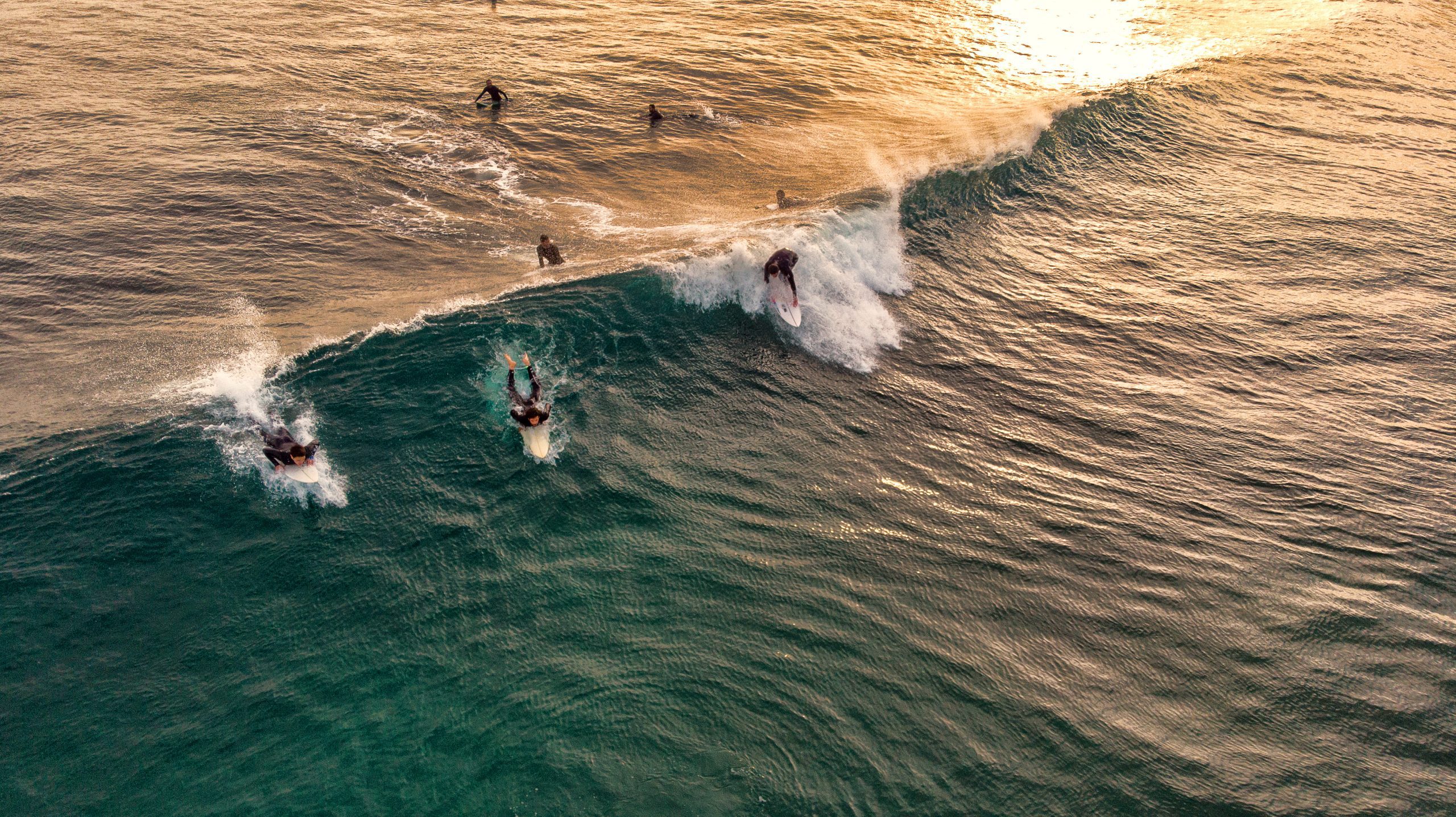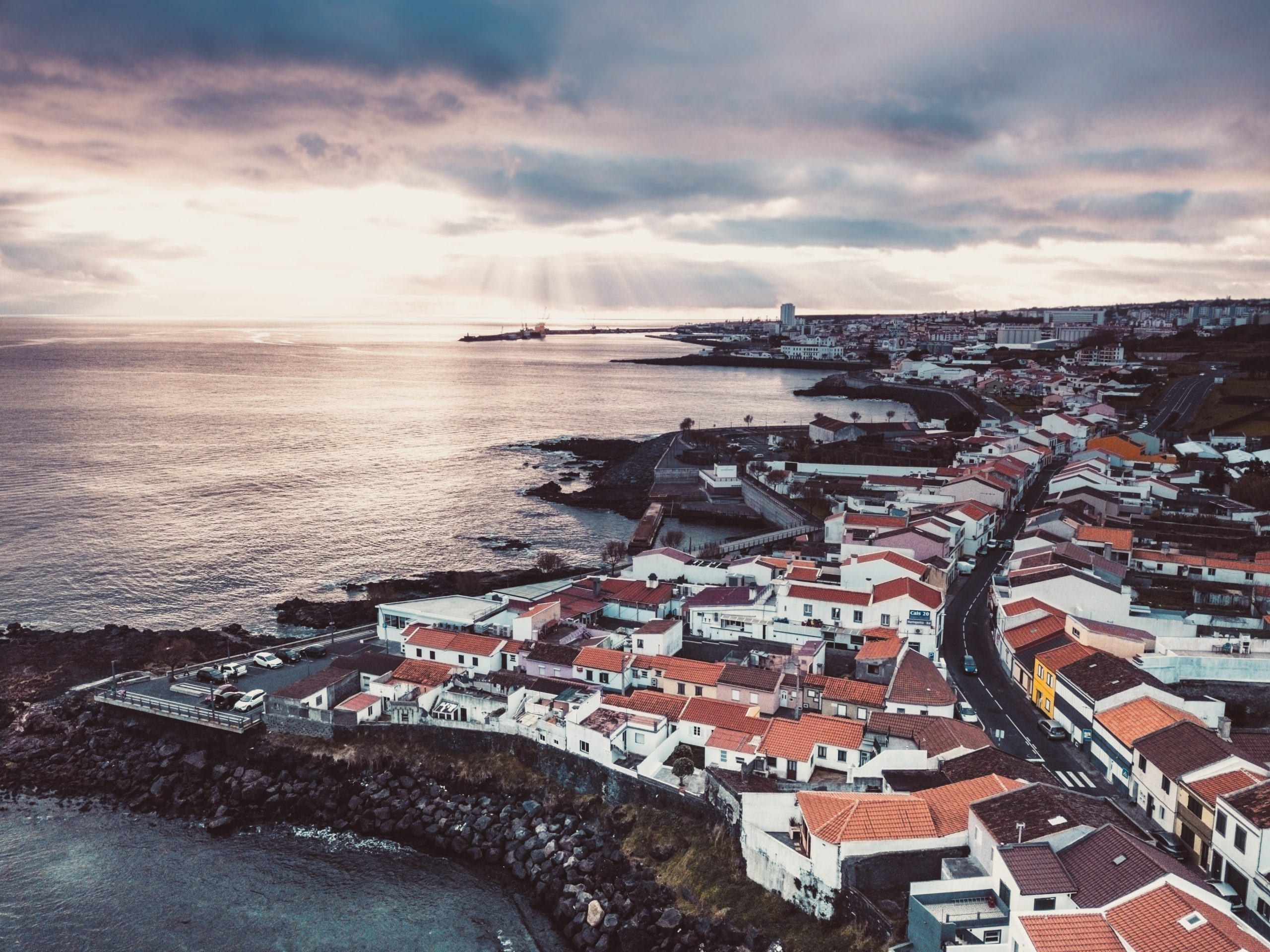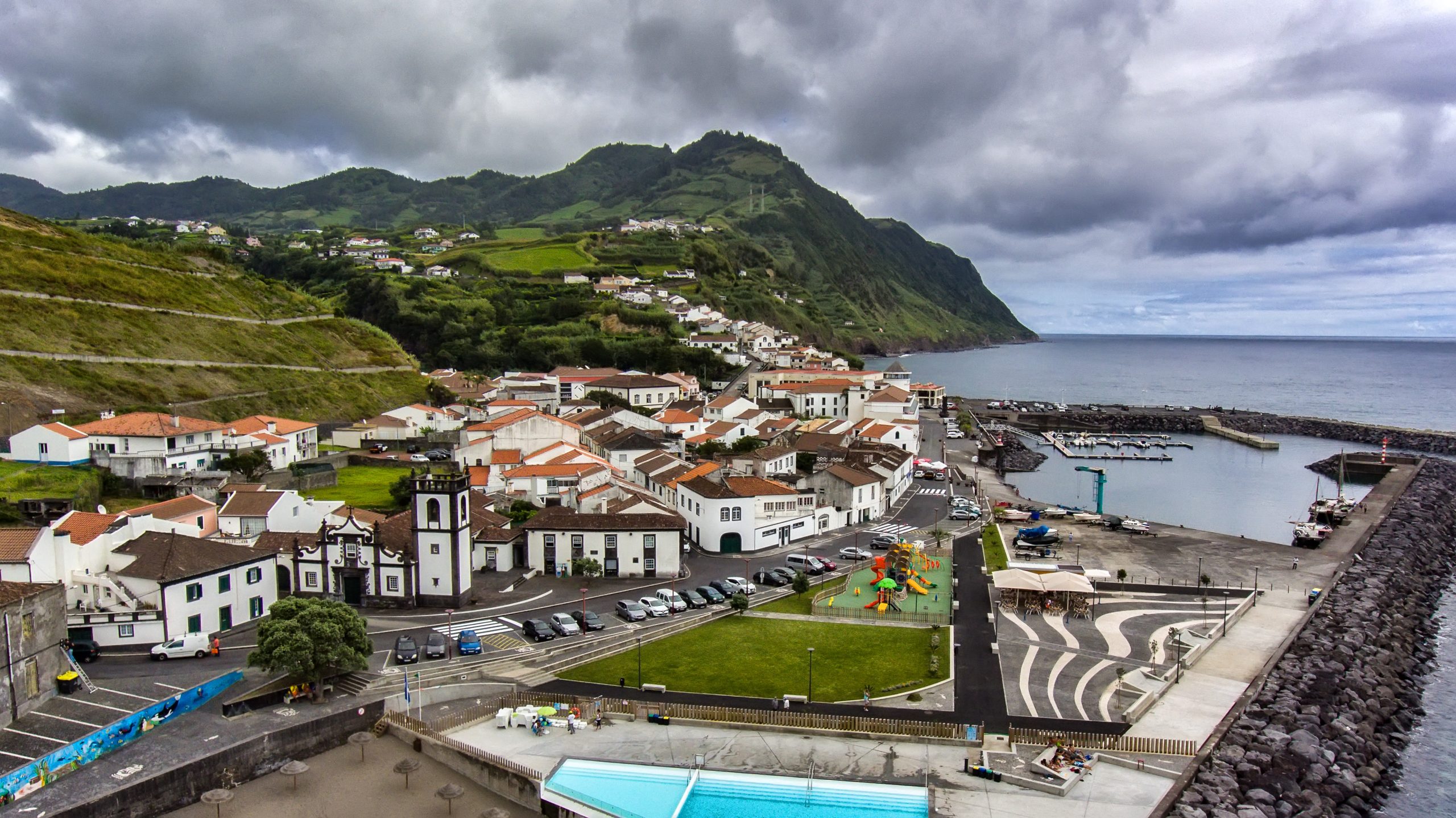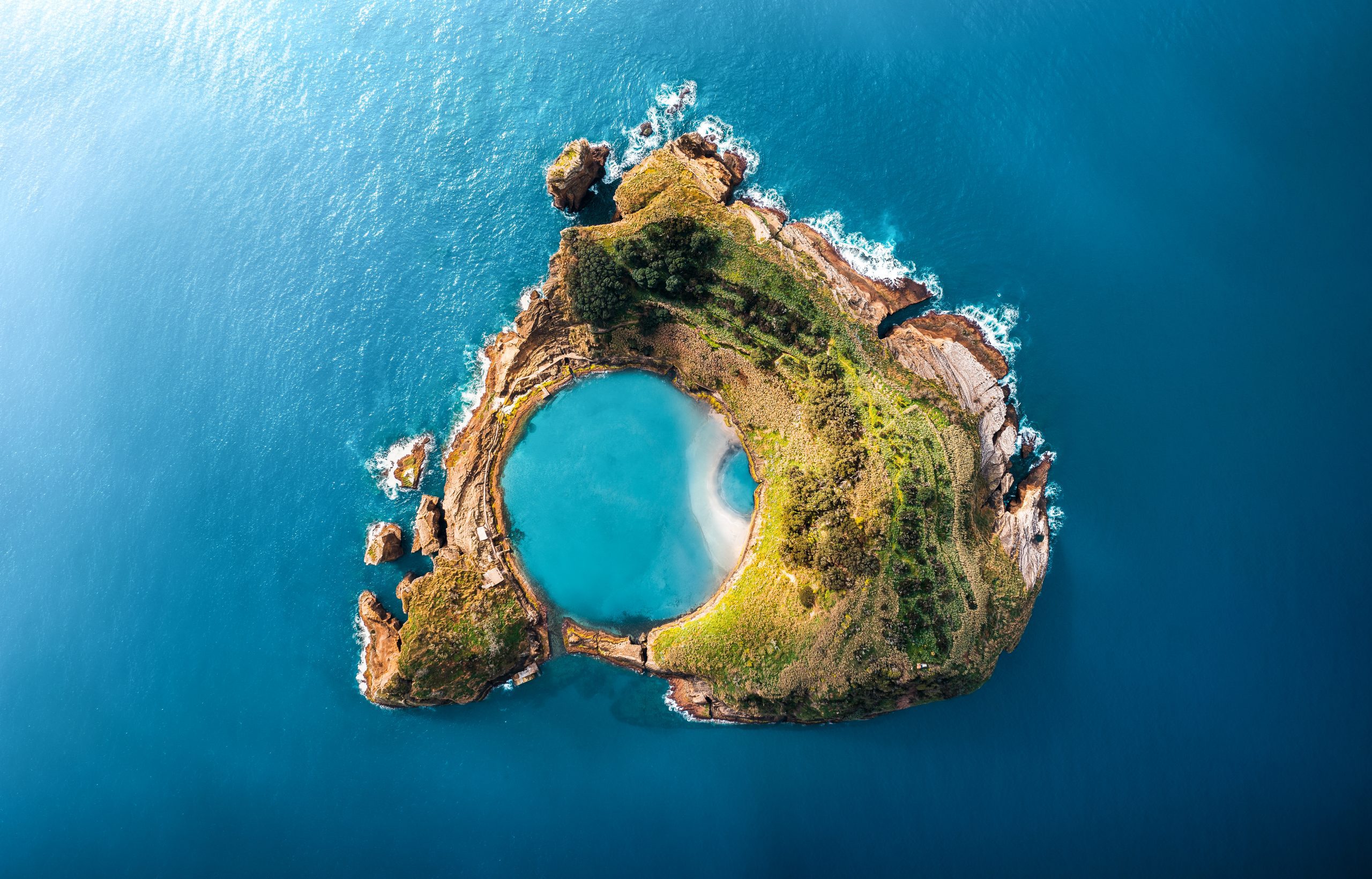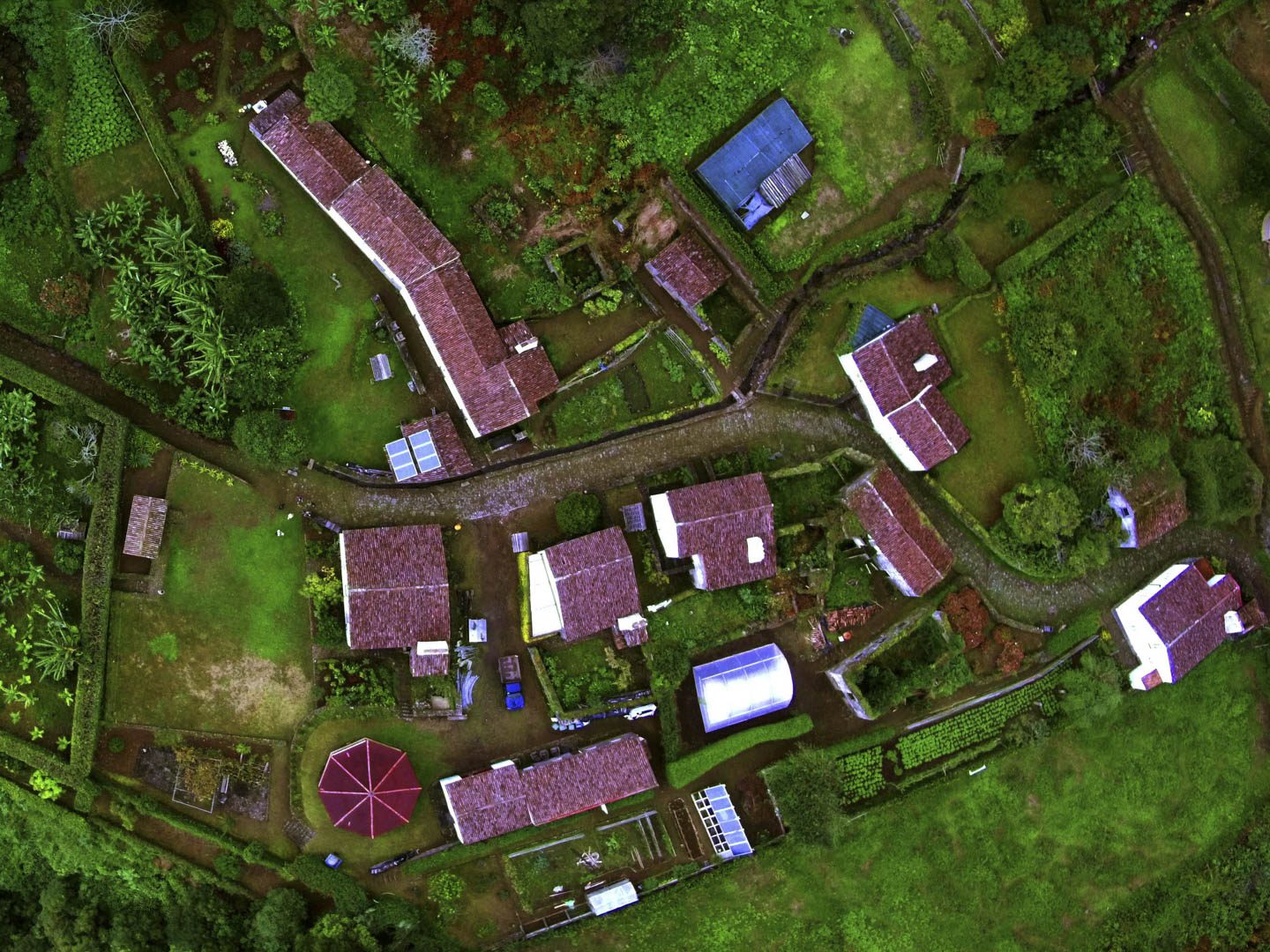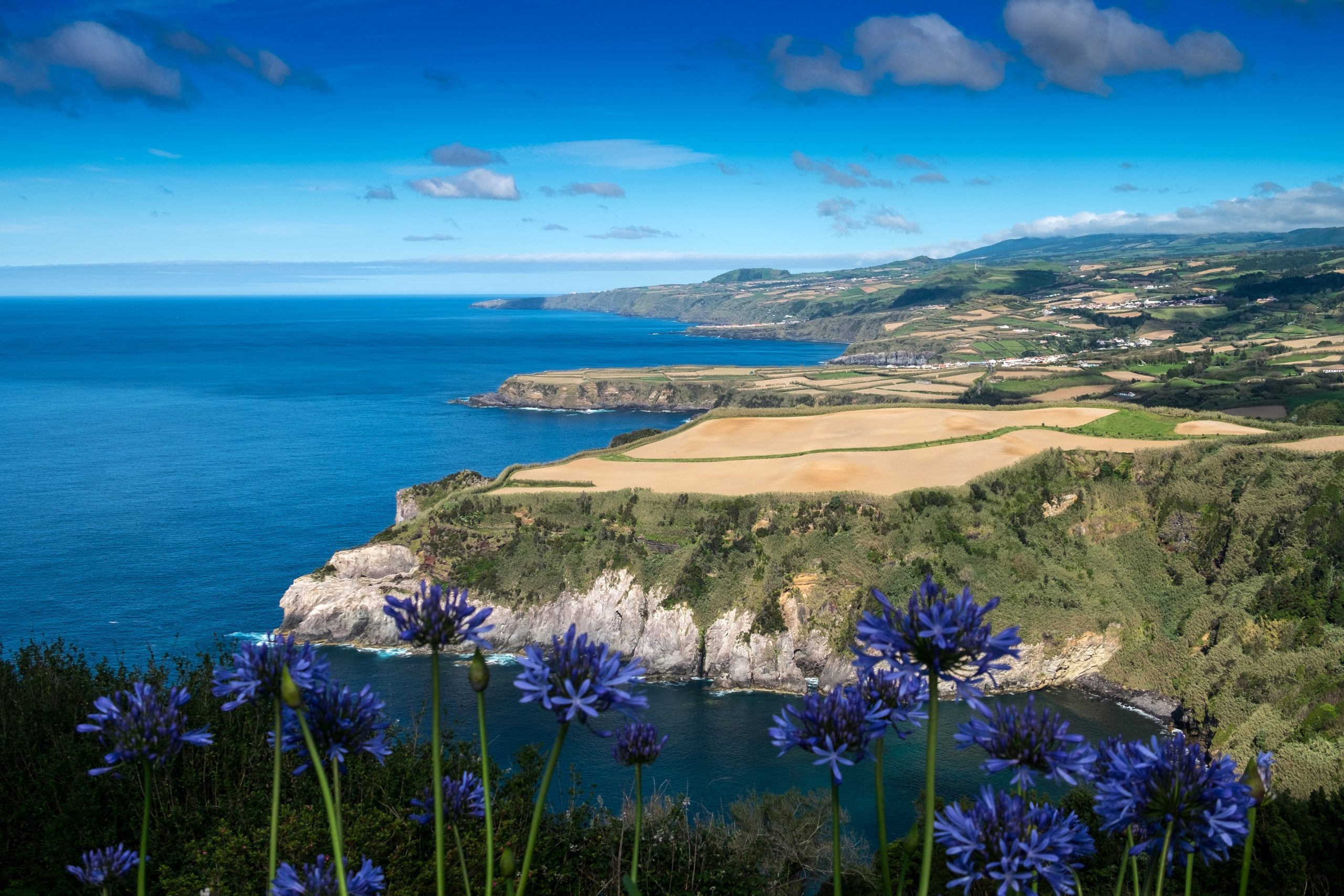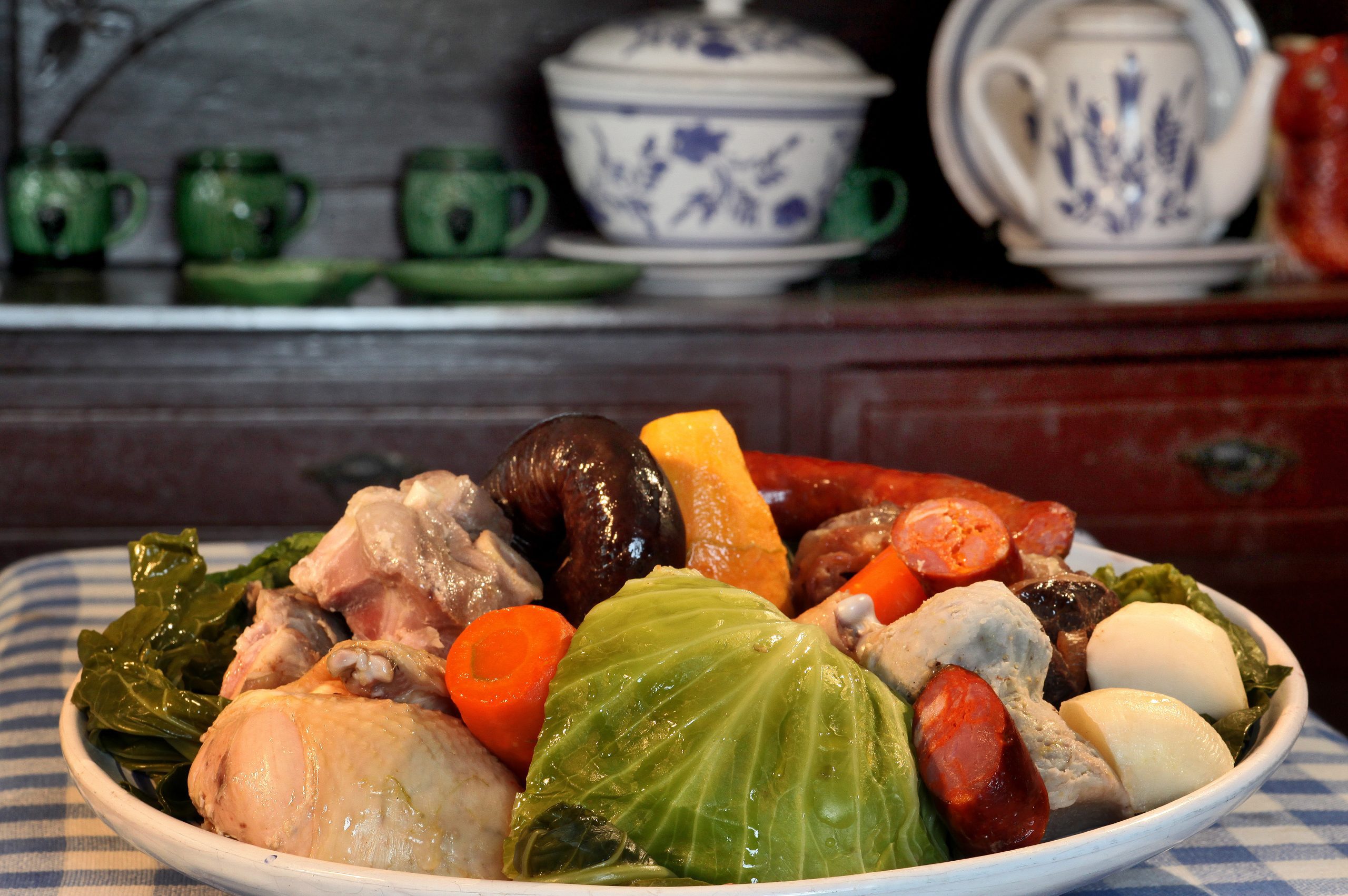Surrounded by a dense forest, Salto do Cagarrão is a wonderful waterfall on São Miguel Island. This surely corresponds to exactly what you think of when you picture a waterfall: beautiful, clear water flowing down a green hill filled with lush vegetation, with a river at its foot decorated with some lovely rocks.
It is a little paradise in the Southeastern part of the Green Island. On the way there, you can discover plenty of other natural wonders. Make sure to fully explore this wild area during your travel to the Azores, thanks to this guide to Salto do Cagarrão.
What is Salto do Cagarrão?

Salto do Cagarrão is probably the most underrated waterfall of the Azores. It’s certainly only 6 meters high. However, this waterfall is quite impressive due to its hidden location and its untouched, lush vegetation, which is set away from the tourist hotspots.
The reason it is not so famous is probably because it is only accessible on foot. You have to go via a trail that can be a bit muddy on rainy days. It is not the kind of attraction where you park your car and arrive. It is a true hidden gem, not accessible to all.
Its sister, Salto do Prego, is more famous because the trail is in better condition. However, at Salto do Cagarrão, you can enjoy the view for yourself and even take a swim in its refreshing waters.
Plan Your Visit To Salto do Cagarrão

How To Get To Salto do Cagarrão
Salto do Cagarrão is located near the town of Faial da Terra. As mentioned before, this waterfall is only reachable on foot. You first need to drive almost all the way East on the south road around São Miguel island. Then, there are two possible ways to reach the waterfall:
First, via the 7.6 km trail of Sanguinho (PRC09SMI) beginning at the centre of Faial da Terra. This hike will take you through the abandoned village of Sanguinho, the waterfall of Salto do Prego, and if you wish, you can go up to Salto do Cagarrão for a beautiful detour. It takes about 3 hours to complete the mostly circular trail, which features two linear paths leading to both waterfalls. Just park at the beginning of the hike inside Faial da Terra and follow the yellow and red indications.
If you don’t have that much time on your hands or don’t want to walk that much, there is the PR11SMI trail — Ribeira do Faial da Terra. It is a 1-hour trip both ways (3 km). This trail begins at the National Road from Povoação to Água Retorta EN-1-1A, right before the locality of ‘Cú de Judas’. You will see a small picnic area with an indication towards the waterfall. It will take you on a walk along the river. And if you wish, you can also continue to Salto do Prego, the other nearby waterfall, for a total of 6 km — a 2-hour walk.
Planning a trip to the Azores? These articles will help you: How to Get to the Azores 🗺️ | Azores airports 🛬 | Flights between islands ✈️ | Ferries between islands ⛴️ | Which island to choose? 🏝️ | What airlines fly to the Azores? 🛩️
Best Time to Visit

If you choose the first trail, this is quite a popular one. However, you can still enjoy the quietness during the calmer hours of the day, such as lunchtime or early in the morning. We do not recommend doing a trail in the dark. So do not leave in the late afternoon in case you get lost or take more time to swim at the waterfall. Always check the sunset time.
Both trails are generally open throughout the year, and both are beautiful. Your choice depends solely on the amount of time you have. However, sometimes trails can be closed due to bad weather conditions or impracticable paths. Always check the open trails on the official website: https://trails.visitazores.com/
Check all our articles about the weather in the Azores throughout the year 🌤️ ☔️: January | February | March | April | May | June | July | August | September | October | November | December
Where to Eat
Click on the following link to find a place to eat near Salto do Cagarrão. It will take you to TripAdvisor, where you can review the 10 best restaurants.
Where to Stay
Searching for the perfect place to stay? We’ve made it easy by filtering top accommodation options from Airbnb and Booking. Here, you’ll find the ideal place to stay and enjoy your visit!
Pro Tips
Whatever trail you select, it is never recommended to hike alone. If you are traveling alone, at least let someone know exactly where you are going. Also, ensure you have sufficient phone battery to last the day. When you don’t see the environment you are in and the weather conditions, it can be easy to lose your bearings. So, always be cautious and bring some snacks, as well as a bottle of water.
Azores Guide Book
Azorean Language & Phrases 🗣️ | Currency & Banks 💵 | Credit Cards & Traveler’s Cheques 🏧 | Driving in the Azores 🚗 | Electricity 🔌 | Experiences & Tours 🗺️ | Health & Safety 🩺 | Internet & Wi-Fi Access 🛜 | Phones & Mobile Service 📞 | Post Offices & Buying Stamps ✉️ | Public Holidays 🏖️ | Shopping 🛒 | Time & Daylight 🕒 | Whale Watching Guide 🐳 | Best Island to Visit 🏞️
What To Do Around Salto do Cagarrão
Dive Into the Salto do Prego Waterfall

After completing the Salto do Prego Trail, you’ll arrive at this stunning natural gem. A true highlight of São Miguel, the waterfall rewards every visitor who makes the effort to reach it.
Although the Salto do Prego Waterfall is relatively small, its mighty cascade and serene surroundings make it unforgettable. The icy waters plunge into a shallow pool framed by rugged rocks, offering an ideal spot to unwind and connect with nature.
Take a moment to relax, have a picnic with family or friends, and bask in the tranquility. Whether soaking in the refreshing water or exploring the top of the waterfall, visitors often describe the experience as revitalizing for both body and mind.

Step Back in Time at Aldeia do Sanguinho

Aldeia do Sanguinho is a small, picturesque rural village nestled amidst lush tropical vegetation. Nestled along the trail to Salto do Prego Waterfall, this tranquil village reveals glimpses of São Miguel’s historical past.
The village, built centuries ago, served as a haven for its inhabitants. Farmers and emigrants seeking better living conditions strategically positioned the town to protect homes, land, and farms from severe storms. Its name, ‘Sanguinho’, originates from the abundant presence of the sanguinho shrub species in the area.
Residents abandoned Aldeia do Sanguinho around four decades ago after severe floods devastated Faial da Terra. At its peak, the village housed over 200 residents in around twenty homes.
Today, a revitalization project breathes new life into this historic settlement. People have restored some houses, making them available for stays. A café has also opened, offering a warm and welcoming stop for those exploring the region.
Explore this serene village and immerse yourself in its unique blend of history, natural beauty, and renewed vibrancy.
Visit Faial da Terra
Faial da Terra, also known locally as the “Nativity Scene of the Island”, is a parish of São Miguel with approximately 350 inhabitants who live essentially from agricultural activity. This parish has many particularities. Among them stand out:
- Fertile lands;
- Proximity to the sea;
- Proximity to the main bathing areas of São Miguel.

It is estimated that, in the early sixteenth century, this was one of the first places to be populated on the island.
Did you know
The Faial of the Earth inherited this name due to the abundant presence of the small tree “Beech-of-Earth” (Murcia Faya). This species, native to the Macaronesia of the Azores, dominated the low-lying forests of the island.
During your visit to Faial da Terra, we recommend exploring the wonderful Salto do Prego Trail, the unforgettable Aldeia do Sanguinho, and the imposing Salto do Prego Waterfall.
See the Sunset at Miradouro do Pôr do Sol

Located on the regional road ER1-1A, within Povoação county, at an elevation of 320m above sea level, this viewpoint offers a stunning panorama over the ocean and the south coast of the green island. In fact, in addition to the Atlantic Ocean, you can observe parts of the beautiful Povoação town, the fields all around, the city of Ribeira Quente in the background, and Ponta do Garajau — a stunning peninsula. On a sunny day, you could even see Santa Maria Island! It is a picnic area with grills to make your barbecue, toilets, and a car park.
Miradouro do Pôr do Sol means ‘The viewpoint of the sunset’, because you can see a beautiful sunset from there. Note that the best sunsets of São Miguel can be watched from Mosteiros, on the Western coast, but if you are on the eastern part of the island, visiting Salto do Cagarrão is an excellent option.
Check all our articles about each one of the most relevant points of interest in Povoação: Povoação | Aldeia do Sanguinho | Faial da Terra | Salto do Cagarrão | Salto do Prego | Ribeira Quente Waterfall | Praia do Fogo | Miradouro do Pico dos Bodes | Miradouro Vigia da Baleia
Complementary Information
Best Season to Visit the Azores
The Azores Archipelago boasts a unique climate that shapes its lush landscapes, making it a splendid year-round destination. With mild temperatures and minimal fluctuations, each season offers something unique. Spring averages 16 °C, summer reaches 21 °C, autumn cools to 18 °C, and winter remains mild at 14 °C.
→ For a detailed breakdown of the weather by month, check the following links 🌤️☔️: January | February | March | April | May | June | July | August | September | October | November | December
How to Get to the Azores
The Azorean Archipelago is easily accessible through numerous flight routes. Lisbon and Porto are the main entry points to the continent, with direct flights available to São Miguel (PDL), Terceira (TER), Faial (HOR), Pico (PIX), and Santa Maria (SMA). To find the best flight, use search engines like eDreams or Skyscanner. These platforms let you compare prices and schedules from multiple airlines in one convenient location.
For more details on how to get to the Azores, take a look at our complete guide. But what if you want to explore beyond your arrival island? We’ve got you covered!
- Azores airports 🛬
- Flights between islands ✈️
- Ferries between islands ⛴️
- Which island to choose? 🏝️
- What airlines fly to the Azores? 🛩️
→ Once you’ve found the perfect route, book your tickets and get ready to experience one of the world’s most stunning island groups!
Travel Essentials
Essential Information for your Azores trip: Azorean Language & Phrases 🗣️ | Currency & Banks 💵 | Credit Cards & Traveler’s Cheques 🏧 | Driving in the Azores 🚗 | Electricity 🔌 | Experiences & Tours 🗺️ | Health & Safety 🩺 | Internet & Wi-Fi Access 🛜 | Phones & Mobile Service 📞 | Post Offices & Buying Stamps ✉️ | Public Holidays 🏖️ | Shopping 🛒 | Time & Daylight 🕒 | Whale Watching Guide 🐳 | Best Island to Visit 🏞️
Useful Tools & Apps
The weather in the Azores can be variable, so it’s helpful to use some apps before visiting the islands. Spotazores provides live camera feeds from the main tourist attractions, allowing you to check the weather and plan your visit. For accurate weather predictions, use Windy or Windguru — they provide the most reliable predictions.
Video
Conclusion
Salto do Cagarrão is a beautiful place to explore, offering numerous activities and attractions in the surrounding area. For nature lovers, this is a small paradise that lies off the beaten tourist path.
Enjoy the treasures of São Miguel island and visit Salto do Cagarrão! You could even swim in its crystal clear waters for a refreshing moment.


